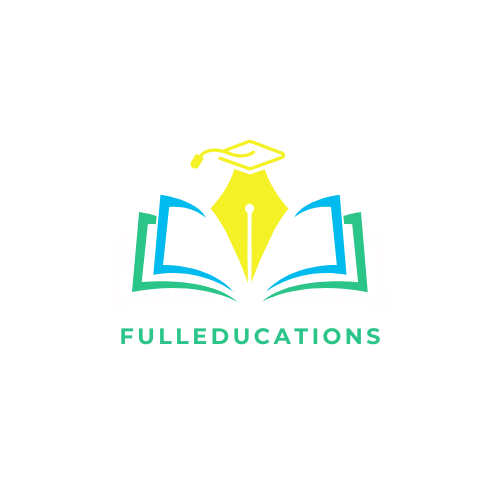

How to Write an Educational Book: A Comprehensive Guide for Authors
Writing an educational book is a rewarding endeavor that allows authors to share their knowledge, insights, and expertise with a wide audience. Whether you’re a seasoned educator or a subject matter expert looking to impart valuable information, this guide will provide you with a step-by-step approach to creating an engaging and impactful educational book. In this article, we will explore various aspects of the writing process, from planning and research to structuring and publishing. So, let’s dive in and discover how to write an educational book that captivates readers and makes a lasting impact!
How to Write an Educational Book
Planning your book: laying the foundation.
Before embarking on your writing journey, it’s essential to lay a solid foundation for your educational book. This involves meticulous planning and organization. Here are some key steps to consider:
Define Your Target Audience and Objectives
To create a book that resonates with your readers, it’s crucial to identify your target audience and their specific needs. Are you writing for students, educators, or parents? What level of knowledge or expertise are you assuming in your audience? Understanding these aspects will help you tailor your content effectively.
Conduct Thorough Research
Research forms the backbone of any educational book. Dive deep into your subject matter, gather relevant information from credible sources, and ensure that you have a comprehensive understanding of the topic. Incorporate real-life examples, case studies, and anecdotes to make your content relatable and engaging.
Develop a Compelling Outline
Crafting a well-structured outline is essential for organizing your thoughts and maintaining a coherent flow throughout your book. Divide your content into logical sections, chapters, and sub-topics. This will serve as a roadmap for your writing process.
Writing Engaging Content: Captivating Your Readers
Once you have a solid plan in place, it’s time to start writing your educational book. Here are some tips to make your content engaging and captivating:
Hook Your Readers with a Compelling Introduction
The first few paragraphs of your book are crucial for grabbing your readers’ attention. Start with a captivating anecdote, thought-provoking question, or intriguing fact that relates to your topic. This will pique your readers’ curiosity and compel them to keep reading.
Use Clear and Concise Language
When writing an educational book, it’s important to convey complex ideas in a clear and concise manner. Use simple language and avoid jargon or technical terms that may confuse your readers. Break down complex concepts into digestible chunks and provide relevant examples to aid understanding.
Incorporate Interactive Elements
To enhance the learning experience for your readers, consider incorporating interactive elements such as quizzes, exercises, or hands-on activities. This will make your book more immersive and enable readers to apply the knowledge they gain.
Structuring Your Book: Creating a Cohesive Flow
A well-structured book ensures that your readers can navigate through the content seamlessly. Here are some strategies to create a cohesive flow:
Use Headings and Sub-headings
Divide your content into sections using headings and sub-headings. This helps readers quickly locate the information they need and allows for easy navigation. Incorporate the keyword “how to write an educational book” in some of your headings to optimize your content for search engines.
Utilize Lists and Tables
Lists and tables provide a structured format for presenting information concisely. Use bullet points or numbered lists to break down complex concepts into manageable chunks. Tables can be used to compare and contrast different ideas or present data in a visually appealing manner.
Include Relevant Visuals
Visuals such as graphs, charts, diagrams, or illustrations can enhance the understanding of complex concepts. Incorporate visuals strategically throughout your book to complement your written content and provide visual reinforcement.
Publishing and Promoting Your Book: Reaching a Wider Audience
Once you have completed the writing process, it’s time to publish and promote your educational book. Here’s how you can make your book reach a wider audience:
Choose the Right Publishing Platform
Consider your publishing options carefully. You can choose to self-publish your book or collaborate with a traditional publishing house. Evaluate the pros and cons of each approach and select the option that aligns with your goals and resources.
Create an Eye-Catching Book Cover
The saying “don’t judge a book by its cover” doesn’t always hold true. A visually appealing and professional book cover can significantly impact your book’s success. Invest in a high-quality cover design that accurately represents the content and attracts potential readers.
Leverage Online Marketing Strategies
In today’s digital age, online marketing plays a vital role in promoting your book. Leverage social media platforms, author websites, and email marketing to reach your target audience. Engage with potential readers, offer valuable insights, and create a buzz around your book.
FAQs about Writing an Educational Book
Q: How do I choose the right topic for my educational book?
Choosing the right topic for your educational book is crucial. Consider your expertise, the target audience’s needs, and current trends in the field. Conduct thorough market research to identify gaps or areas that haven’t been adequately covered.
A: How long should my educational book be?
The length of your educational book depends on various factors, including the depth of the topic, target audience, and publishing preferences. Aim for a length that provides comprehensive coverage of the subject matter while keeping the reader engaged.
Q: Should I include visuals in my educational book?
Visuals can greatly enhance the learning experience for your readers. Incorporate relevant visuals such as diagrams, illustrations, or infographics to aid understanding. However, ensure that the visuals align with the overall design and purpose of your book.
A: How can I ensure my educational book is credible?
To ensure the credibility of your educational book, rely on reputable sources for information and cite them appropriately. Conduct thorough fact-checking and review your content for accuracy. Consider involving subject matter experts or peer reviewers to validate your work.
Q: How do I handle copyright issues in my educational book?
Respecting copyright laws is essential when writing an educational book. Obtain permission for using copyrighted material such as images, quotes, or excerpts. Alternatively, use royalty-free or Creative Commons-licensed content and provide proper attribution.
A: What is the ideal writing style for an educational book?
The ideal writing style for an educational book is clear, concise, and accessible. Use a conversational tone, avoid unnecessary jargon, and present information in a logical manner. Incorporate real-life examples and engage your readers through relatable anecdotes.
Writing an educational book is a fulfilling endeavor that allows you to share your knowledge and expertise with others. By following the steps outlined in this guide, you can create an educational book that captivates readers, provides valuable insights, and makes a lasting impact. Remember to plan meticulously, write engaging content, structure your book effectively, and promote it strategically. Embrace your role as an educator and inspire readers through your words. Happy writing!
Similar Posts

Minors for Elementary Education Majors: Enhancing Teaching Skills and Opportunities
Aspiring elementary education majors often find themselves seeking additional areas of study to complement their primary focus. Minoring in specific subjects can provide them with valuable knowledge and skills that enhance their teaching abilities and open up new opportunities in the field. In this article, we will explore various minors that are particularly beneficial for…

Harvard Masters in Education Acceptance Rate: Everything You Need to Know
If you’re considering pursuing a Master’s degree in Education, one of the most prestigious institutions you may have in mind is Harvard University. Renowned for its academic excellence and esteemed faculty, Harvard offers a comprehensive program for those aspiring to make a difference in the field of education. In this article, we will delve into…

Educational Institution Example: Providing Quality Education for Future Success
In today’s rapidly evolving world, the role of educational institutions is more important than ever. Educational institutions play a crucial role in shaping the minds of future generations and equipping them with the knowledge and skills they need to succeed. This article explores the significance of educational institutions and provides an in-depth example of a…
How to Get Sponsorship for Education: Unlocking Opportunities for Success
In today’s world, education has become increasingly important for personal and professional growth. However, the rising costs of education can often pose a significant barrier to achieving one’s educational goals. This is where sponsorship for education can play a vital role. In this comprehensive guide, we will explore various strategies and avenues to help you…

The Education of Michael Jackson: A Journey of Talent and Dedication
Michael Jackson, widely regarded as the King of Pop, left an indelible mark on the music industry with his extraordinary talent and captivating performances. While his musical genius is well-known, it is equally important to recognize the educational journey that shaped his artistry. In this article, we will delve into the education of Michael Jackson,…
Is Leeds University Good? Exploring the Excellence of Leeds University
Choosing the right university is a critical decision that can shape your academic and professional journey. Leeds University, renowned for its academic reputation and vibrant student life, offers a wide range of programs and opportunities. In this article, we explore the factors that contribute to Leeds University’s excellence, including its academic programs, research strength, student…
Leave a Reply Cancel reply
Your email address will not be published. Required fields are marked *
Save my name, email, and website in this browser for the next time I comment.
40 Hour Workweek
Share the post.
Click above to copy the link.
Edupreneur Resources | Jul 31, 2012
How to get started writing and publishing a teaching book

By Angela Watson
Founder and Writer
Do you want to publish an education book or publish a book for teachers? Need tips for writing and publishing education books? On this page, you’ll find information about how I got started writing and publishing books for teachers, and learn how you can write teacher books, too.
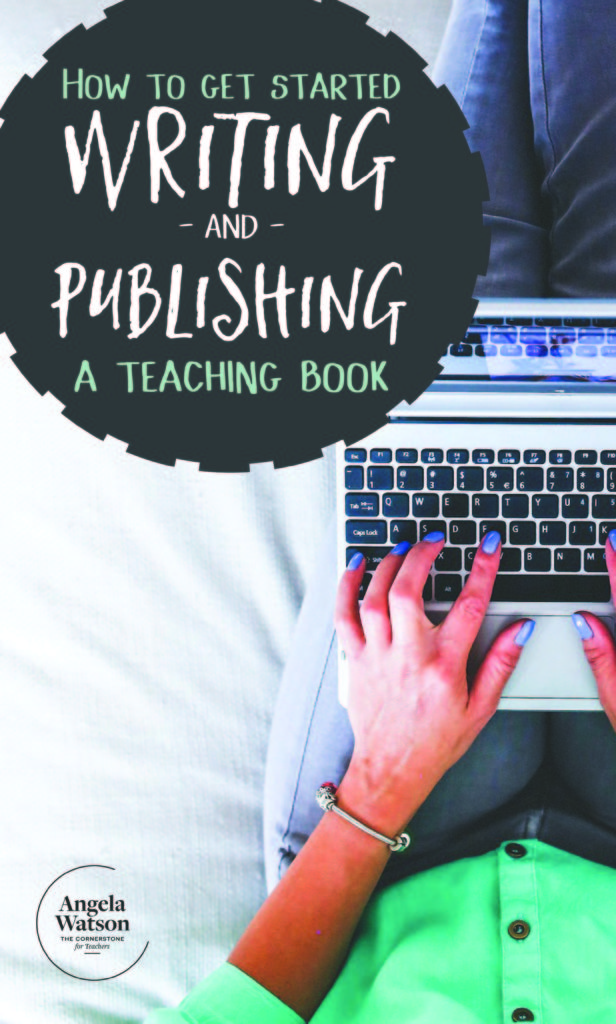
Who Am I to Give Advice?
I’m far from an expert on the subject of publishing books, but I’ve done it successfully three times and I’m honest about the process, so I tend to get a LOT of emails asking for advice. There are many ways to get your book published and make money selling books for teachers, and I’m happy to share what’s worked for me. I can’t guarantee that I’ve done things the “right way,” but I’m enjoying writing books and I’ve been making steady money doing so since 2008. Hopefully when you read my advice, you’ll find some ideas that resonate and will work for you, too.
Video: Advice for Publishing a Book for Educators
Dr. Will Deyamport III interviewed me about educational publishing. In the video below, you’ll hear me speak about:
- How I got the ideas for my books and started publishing
- Balancing full-time teaching with book writing
- What motivates me to write and how I use writing to improve education
- The decision between traditional and self-publishing
- eBook vs. print copy sales
- How to leverage book sales and consulting opportunities
- How my writing and creative process works
- My advice for those who want to write and publish a book
- The importance of promoting your book on social media
Who Said Anything About Publishing? Get Writing!
First things first: most people who worry about how to publish and sell their book haven’t even written the book yet . In fact, I’d say 95% of the people who email me asking for help are still stuck in the “I have a great idea for a book” phrase. My advice is always the same: write the book before you worry about anything else . There are an untold number of half-finished manuscripts languishing in desk drawers. Until you’ve got a book that is well-written (and well-edited), everything else is a moot point.
If you go the traditional publishing route, chances are good that a publisher is going to want to see a complete manuscript before deciding whether or not to publish it. Sure, established authors can just submit proposals, but if you’re an unknown, the publisher will probably not pay you much attention without a finished manuscript. At the very least, they’re going to want the table of contents and some sample chapters.
Having a few chapters done is not enough. How will you know what direction your book will ultimately take? Maybe the first few chapters will end up being redundant, or need to be placed in a different order. And it’s very likely that they won’t be your best work if you haven’t seen how they fit within the larger context of what you’re trying to say. You will probably want to change the title, subtitle, description, etc. before the book is done. So why try to market something that is incomplete and going to change?
If you decide to self-publish, it’s even more important to have a finished product because self-publishing is a much quicker process. You can have a stack of copies in your possession within days of sending the book to the printer, and Amazon will often list it within a week or two. All the self-publishing routes (Lulu, Smashwords, etc.) have similar requirements for formatting, etc., so you really don’t need to select your self-publishing option until the book is basically done.
So, in case I haven’t been clear: Stay focused on writing your book. That’s the hardest part, and once you’ve got that done, there will be tons of options open to you. The publishing industry is evolving so quickly that it’s becoming easier to publish a book with every year that passes, so there is absolutely no reason to stress out about how to publish a book that you haven’t even written yet.
How Do You Know What to Write?
I think everyone has a book inside them. And every teacher I know has a teaching idea or perspective that deserves to be shared with the world. Don’t doubt yourself! Write what’s on your heart. Write what has to be written. Write the things that you will lay in bed at night thinking about if you don’t get them out on the page. Don’t worry about how it will be received yet; that part comes during for the editing process. Right now? Write.
Editing Your Manuscript
You will need to have your book professionally edited before you submit it to a publisher or try to self-publish it. Remember, you want your very best work to be shown to the world. It’s also helpful to have the perspective of an outside party who’s not personally invested in your book. It’s better to get brutal honesty from your editor than from Amazon reviewers after the book is published. (Ouch.)
Okay, Fine, Now Let’s Talk About Publishing
There are a lot of paths you can take to get your book into the hands of readers. The only one I would NOT recommend is using a vanity press, which is a company you pay to publish your book. That’s just not necessary in 2014.
One good option is to submit your book to some publishing houses in hopes of getting published. I’ve never gone that route as I wanted to have complete editorial control over my books and also did not want to share royalties with a publishing company. I hear that trying to get your book accepted in traditional publishing can be a lengthy, frustrating process, although it’s not nearly as painful for education books and I know quite a few teachers who have had their books published that way. There are a number of reputable education publishers who accept titles from new authors (including classroom teachers), so if you do your research, you may find something that works for you. You might want to check out Scholastic, Evan-Moor, Jossey-Bass, ASCD, Kagan, Eye on Education, etc. Although I do have connections with people at each of these publishing houses, I cannot recommend your book to any of them. I’m sorry!
Be sure to ask lots of questions about the royalty rate you will receive. There are some publishers (none that are listed above) that will pay teachers a very small flat rate for their book and then the company owns the content and never pays out another dime. You’d do far better selling your book as a PDF on TeachersPayTeachers or TeachersNotebook than taking a flat rate from a big publishing house. Don’t do it! You deserve to earn profits from your book every time it sells–and books in the education genre should continue to sell well for many years.
Another path is to start your own publishing company. This is what I chose to do. I started my own business for both publishing and consulting services and called it Due Season Press and Educational Services . I established a PO Box and DBA, bought a block of ISBNs, and set up an account with Lightning Source (which does Print-On-Demand printing and handles all book distribution.) This was a relatively simple process that gives me full control over my books and cuts out the middle man: only Lightning Source and either Amazon or PayPal take a cut from my book sales. The other advantage is that I can do educational consulting and professional development services based on my books , all under one company that I own personally.
A third option–and probably the easiest, most common one–is to self-publish using Smashwords, Lulu, or another self-publishing service. Like starting your own publishing company, self-publishing also cuts out the middle man and maximizes your control and royalties. I don’t know a lot about the companies that offer these services, although I know many authors who have used Lulu and Smashwords, and most are pretty satisfied.
If you’re thinking about self-publishing, I highly recommend the book Self-Printed: The Sane Person’s Guide to Self-Publishing by Catherine Ryan Howard. Catherine kindly sent me a review copy of the Kindle version and I was thrilled to see that she spells out exactly what to do if you want to self-publish your book (or more accurately, self-print: when you read the book, you’ll understand the difference). Her blog Catherine, Caffeinated is also extremely helpful and has all kinds of great tips for anyone wanting to self-publish a book. Both the book and the blog provide a lot of information about promoting and marketing your books.
What About eBooks?
Formatting your book for mobile readers is not optional. You need to do it, and it’s a terrific way to make more money from your books because the delivery cost is so much lower than with print copies. By the end of 2009, I was selling more eBooks than hard copies, and each year since then, the ratio of eBook sales to hard copy sales has increased dramatically.
I use a company called eBook Architects to format my books for Kindle (MOBI) and ePUB, although you can do it yourself (and the book Self-Printed that I recommend above will walk you through you through the steps.) I like eBook Architects because I know that the formatting has been correctly completed for every eReader device and there is a lifetime guarantee on their work, so if the formatting requirements change, they’ll fix the books.
Getting the Word Out About Your Books
Most writers (myself included) HATE having to promote and market their books. However, it’s a little known fact outside the publishing world that even if you have a big publishing house behind you, most of the promotion burden still falls on the author. Publishers rely heavily on authors to blog about their books, share them on social media, promote their book tours, etc. It’s a simple fact: no one cares about your book more than you, so you’ll need to be the one to help spread the word.
I’m assuming as you read this that your book is neither written nor published yet, which is actually good in terms of promotion. That gives you time to build up a platform for yourself and connect with others through a website, blog, Twitter, Facebook, Google+, etc. That’s the subject of another article (I touch on it briefly on the Becoming and Educational Consultant page) but the number one thing to remember is this: share high quality content and do it because you enjoy doing so.
If you don’t give away good content on your website/blog, no one will be interested in reading your book. Potential readers need to know what you’re all about and how you write in order to be assured that the book will be valuable to them. Find a way to blog that is enjoyable to you: if it’s not, then you’ll feel like your book is a burden and you’ll get frustrated with the fact that no one is reading it.
Where Should I Sell My Books?
99% of my book sales are made online, either through my website or through Amazon. School systems and universities also buy my books, but they find me online, contact me online, and complete the transaction online. Book stores and teacher supply stores never factor into the equation.
There are literally millions of new books being published, and brick and mortar bookstores simply can’t stock them all. And in 2012, you really don’t NEED a book store to carry your book. Because they have the widest selection of titles and their prices are rock bottom, Amazon has the lion’s share of book sales (and it’s increasing every year). Use that to your advantage.
You may find that it’s worthwhile to visit teacher supply stores in your area to try to get them to stock your book, but it wasn’t worth it for me. I was told that my local store orders all its products a year in advance and I’d have to come back in 9 months to even make my pitch. I’m not interested in working within old-school systems like that and didn’t pursue it. That was in 2009, though, and perhaps things have changed. They also might be different in your area.
There are a few in-person opportunities that HAVE been fruitful for me. If you do consulting or professional development, that’s a great opportunity to promote your books and make sales. Education conferences can also serve as networking places and lead to sales. Try pitching to your school district and see if they’re interested in buying copies, as well.
When Do I Get Rich?
Probably never. But the great thing about writing education books is that they have a long shelf life. The hottest novel only makes the New York Times bestseller list for a short time and then it’s forgotten. But a good education reference book can continue to sell very well for a decade or more. I first published The Cornerstone in 2008 and every year it sells more copies than the year before. In fact, this is true of all three of my books: the more people who stumble across my website, the more book sales I get. And with 75% of teachers quitting within the first 5 years, there’s a whole new crop of potential readers coming up all the time. I don’t mean to sound glib about teacher retention, but there’s certainly no shortage of new teachers who are looking for ideas, and as a writer/publisher, this works strongly to your advantage.
Angela Watson
Sign up to get new truth for teachers articles in your inbox.
Great post, Angela! When I wrote my book, I submitted a sample of the activities to a bunch of different educational publishing companies. I just sat down with all of my teacher material books and checked the covers. Many of them had a list of where to send manuscripts. You can read more about how my process went at http://www.mrsjoyhall.com/becoming-a-published-author/ . I totally agree with you about self-publishing to keep the rights to the book. It almost felt like I was giving something away. If anyone is thinking about writing a book, I say GO FOR IT! 🙂 Joy from Joy of Teaching
Angela, thanks so much for all of your help. You have become quite the mentor to me without even knowing it! I have two books in the works and cannot wait to set up a time to chat once they’re finished. Thank you again so much for your guidance!
Aw, you’re so welcome, Gretchen! You’re going to love tomorrow’s blog post then–a teacher who published a children’s book is going to share her advice. 🙂
I have written a book about poetry 25% is my original writing and 75% are examples of what 4th and 5th graders have written over the years. Is there an audience for this kind of book? The writing is amazing!
Many thanks,
Mary Groesch
Hi, Mary! There certainly might be an audience for it. My advice is to start building that audience now through a blog and social media…and most importantly, an email list. Focus on sharing great, helpful free content, and then get that book published and into the hands of those who would want to read it!
I found your information very fascinating. I am almost done with a book for teachers or others who was to teach kids how to write poetry. I had a significant stroke, though many people say they can’t tell, in 2011 and ended up retiring early in 2013. I’ve talk in the U.S. for 26 yrs/ and 5 yrs in international school in South America. I was trained by master teachers in progressive approach. I’ve traveled to 36 countries, given writing workshops mainly in foreign countries. I was trained by National Geographic from 1990 until almost 2010. Needless, the say, I have many, many examples of the children/parents given me their consent use their work. How should I go about publishing it?
Hi, Mary! I highly recommend self-publishing. You can upload the PDF directly to CreateSpace.
Hi Angela, I’m no book expert but last year a primary school in Belfast asked me to consult on their music. I wrote a full, detailed scheme of work for the full primary years P1 – P7 and went into the school and taught each class every week. By doing this I had written a practical, exciting music scheme for non-specialists which tied in to the curriculum, taught it to each class for a full year and trained the teachers to teach it themselves in subsequent years. The Headteacher wrote a fabulous recommendation for my work and advised that I publish and sell it to schools. Her teachers are all independently following my scheme now and it works. I have no idea where to even start! Any advice? Christine.
I think the advice here would definitely work for you. You can self-publish for sure.
Leave a Reply [Cancel reply]
Your Name *
Your Email *
Your Website

Join our community of educators
If you are a teacher who is interested in contributing to the Truth for Teachers website, please click here for more information.
Join over 87,000 educators who follow us on Pinterest
Join our community of over 160,000 teachers on Facebook
Join our brand new community on TikTok
X / TWITTER
Join over 22,000 teachers who network with us on X / Twitter
Join over 23,000 teachers who connect with us on Instagram
TEACHERSPAYTEACHERS
Join 22,327 educators to learn about new resources

- Book Reviews / Writing Craft
Learn How to Write an Education Book
by MiddleWeb · Published 02/11/2016 · Updated 11/30/2019
The Educator’s Guide to Writing a Book: Practical Advice for Teachers and Leaders By Cathie E. West (Routledge/Eye on Education, 2016 – Learn more )
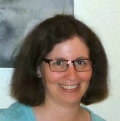
Who knew this slim, 140-page book would read more like a summer beach thriller than a didactic, pedantic education tome? With a title like The Educator’s Guide to Writing a Book , I thought the content would be interesting but dry, useful but not necessarily entertaining. However, once I started reading, I couldn’t put it down.
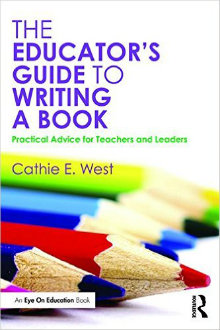
But after reading The Educator’s Guide to Writing a Book , I feel well equipped to do just that. Cathie West takes readers through all the steps of getting a book published: from developing an idea to marketing the finished product. The comprehensive information in this book will give you the confidence to take that idea you have and see it through to completion.
The first chapter is called “Why Write ?” and it hooked me on the second page by describing various reasons people write education books…and reasons why they shouldn’t. It then describes characteristics of successful authors and reminds educators that they already possess them: confidence, commitment, conscientiousness, and courage.
Other sections of the chapter include a discussion of goals for writing, how to create an optimum environment for writing, and an interview with a teacher who is in the process of writing a book. The chapter ends, as all the chapters in this book do, with “Take-Away Tips,” “Reflections—Connections,” “Best Practice” ideas, and a list of references.
The second chapter is about the different types of education books and what readers want from such books. A very helpful table on page 24 lists eight features of what West calls a “best-practice book” and describes each of them, cross-referencing each feature with the chapter in this book that discusses them in greater detail. Since every chapter includes an interview, in Chapter 2 the author talks with an administrator about what makes a book a must-read.
From Prospectus to Publication
The remaining chapters in The Educator’s Guide to Writing a Book cover the process involved in getting a book published. Chapter 3: Book Mechanics and Safeguards, was fascinating. The terms “front matter” and “back matter” are defined, and all the parts of a book are explained. Publishers’ guidelines are also addressed. Chapter 4: Titles, Topics, and Themes, is all about how to find the central idea for your book and how to write a book proposal for a publisher which, I discovered, is called a “prospectus” in the publishing industry.
In Chapter 5: Writing Style and Steps, the importance of finding your own writing style is discussed and tips for writing are provided. West herself writes in an engaging style that is clear and enjoyable to read. This chapter also includes the steps an author goes through when writing a book and the steps a book goes through as it is being readied for publication.
The roles and responsibilities of various people from the publishing company are described in Chapter 6: Publishing People and Processes. Information about contracts is also included. Chapter 7 is the conclusion and reiterates why educators can be successful authors.
Beyond the Text: Plentiful Appendices
Ten appendices offer readers worksheets to help them develop their ideas and writing schedules along with examples of a query letter, a prospectus, and a submission letter. The sample prospectus is for this very book, which is an inspired idea and very useful as readers can see how it was pitched to a publisher. All ten of these appendix resources are helpfully available as free downloads by accessing a URL provided at the beginning of the book.
In addition to the interviews, which also showcase a copy editor, an editor, a principal, and an associate marketing manager and consequently give readers insight into various aspects of the book publishing process, West includes excerpts from email exchanges she had with people from her publishing company to illustrate the points she makes. These are very helpful, too, as are the little tips presented in boxes that are scattered throughout the book.
The only quibble I have, and it is a very small one, is about the design of the boxes that surround the interviews and the three sections at the end of each chapter. The boxes are not enclosed on all four sides, and at first it was a little confusing because I thought the information continued on a following page. Once I realized it didn’t and that was the style for those sections, I got used to it.
The Educator’s Guide to Writing a Book makes the whole process of writing a book much less daunting, much more doable, and much less mysterious. As West writes on page 97, “The level of excitement that comes from signing a contract for a book will be exceeded only when you see your name on the front cover.”
This is an essential resource for any educator who has ever dreamed of seeing their name on the cover of a book they wrote themselves.
________________
Susan Schwartz taught EFL/ESL at universities in Asia and a public school in Massachusetts for 25 years and now creates digital education resources. She has written for TESOL International Administration’s New Ways series of books, English Teaching Forum , The Journal of the Imagination in Language Learning , and Pelangi: An Education Magazine about Indonesia , among other journals. Someday, she hopes to publish a book combining her interests in ESL, travel photography and social studies.
Share this:
Tags: Cathie E. West education book eye on education prospectus publisher contacts Routledge Susan Schwartz theme writing writing for publication
MiddleWeb is all about the middle grades, with great 4-8 resources, book reviews, and guest posts by educators who support the success of young adolescents. And be sure to subscribe to MiddleWeb SmartBrief for the latest middle grades news & commentary from around the USA.
2 Responses
- Pingbacks 0
Your affirmative and well developed critique of The Educator’s Guide to Writing a Book is much appreciated. Every educator has stories to tell that will help others—teachers, school level leaders, and district administrators—perfect their performances. I hope that my book helps educators share their hard-won wisdom and experiences. — Cathie E. West, Author
I’m a true fan of great writing, however, I would like to know more about writing an educational book for a large university class etc. Thanks.
Leave a Reply Cancel reply
Your email address will not be published. Required fields are marked *
Notify me of follow-up comments by email.
Notify me of new posts by email.
This site uses Akismet to reduce spam. Learn how your comment data is processed .
- Popular Posts
- Recent Posts
- Recent Comments

Book Reviews / Writing
Using 100-Word Stories for Expansive Writing

Articles / Leadership
It May Be Developmental and Still Not Appropriate

Articles / Literacy
Teach Students to Read (and Write with) Video

Articles / The Teaching Life
7 Principles of a Heart-Centered Classroom

Book Reviews / Technology
What to Expect from AI in Class and Beyond

Articles / Poetry / Writing
12 Idea-Packed Posts about Teaching Poetry

Articles / Reading
Use ‘Say Something’ to Boost Reader Response

Articles / Writing
Teach the Writer First and the Writing Second

Articles / Mathematics
How to Differentiate the Teaching, Not the Task

Book Reviews / Mindsets
How to Reclaim Your Energy, Passion, & Time

Defiance / I Will Screw This Up
Why I’m Keeping My Classroom Door Open

How Teacher Notebooks Can Help Students Learn

Articles / Resilience
Build a Classroom That’s Resilience-Friendly
- Sarah Cooper says: Nicole, thanks for this enthusiasm! I still love this project, too,...
- MiddleWeb says: This Wikipedia page offers an extensive list of American Social Reformers...
- Nicole T says: I love this project! I have the book, but is there...
- Karl Sigfrid says: Michelle, Thank you for sharing ideas on making statistics engaging to...
- Sharon Ratliff says: Great article Debbie! I love the way you connected this struggle...
Sign Up & Receive the Latest News about Our Content…
Email address:
First Name:
Read our Privacy Policy
BOOK REVIEWS

Strategies for Teaching Against Disinformation

The Democratic Roots Essential to Literacy

A Leadership Blueprint for Growth and Success

A How-to Guide to Better Engage Your Students

10 Tools to Help Kids Develop Their Talents

The Reading Strategies Book Gets an Update

Opportunities for Swift Achievement Gains

Teaching for Retention, Application and Transfer

Strategies to Adjust ‘Up’ What Students Know

Assuring Just, Inclusive Learning for Newcomers

Building Bridges That Cultivate Teacher Growth

SEL, Civic Engagement, & a Healthy Democracy

An Enhanced Edition of ‘When Kids Can’t Read’

Shifting to Asset-Based Literacy Assessments

Bringing the Science of Reading into Grades 3-5

Class Libraries to Inspire and Challenge Readers

Strategies to Integrate AI into Every Classroom
How To Write An Educational Book
by Skill Prepare | Aug 18, 2023 | Blog

Are you enthusiastic, about sharing knowledge and creating a lasting impact on the lives of readers? Writing a book provides an opportunity to fulfill these aspirations. Whether you have experience as an educator possess industry expertise or simply hold a wealth of knowledge to impart this comprehensive guide will walk you through the process of crafting an educational book that captivates, educates and inspires.
Introduction to Writing an Educational Book
Creating a book goes beyond disseminating information. It involves crafting a resource that empowers readers to learn and develop. Educational books cover an array of subjects ranging from textbooks and curriculum guides to skill based manuals and self help guides. Regardless of the genre or topic the ultimate goal remains consistent; providing readers with in depth comprehension and practical application of the subject matter.
In this guide we will delve into the steps involved in writing a book – right from generating initial ideas to publishing and promoting your work. We will explore the phase by discussing how to select a topic define your target audience and establish goals and objectives. Subsequently we will proceed with planning. Structuring your book in order to ensure it offers both organization and engagement, for readers.
Once we have established the groundwork we will delve into the process of writing and editing. We will emphasize the significance of creating content conducting research and dedicating ample time to editing. Additionally we will explore publishing options to authors and provide strategies, for effectively promoting your educational book to maximize its reach and influence.
Whether you are an aspiring writer or an experienced author seeking to venture into literature this guide equips you with the knowledge and tools to develop a compelling and valuable resource for your readers.
So let us embark on this journey of crafting a book that empowers others through knowledge and education !
Preparing to Write an Educational Book
Before immersing yourself in the writing process it is vital to lay a foundation for your book. This section provides guidance on steps that will help you prepare adequately ensuring that you have a direction and purpose for your book.
Choosing a Topic
The first step, in writing a book involves choosing a topic that aligns with your expertise and passion. Take some time to think about the areas in which you have knowledge and a genuine interest. This will greatly influence your motivation and enthusiasm as you go through the writing process. Make sure to do research to identify market demand and trends so that you can choose a topic that truly resonates with your target audience.
When it comes to selecting a topic, brainstorming and narrowing down ideas is crucial. Start by jotting down all ideas, of how broad or niche they may seem. Explore perspectives, angles and subtopics related to your idea. Once you have a list of ideas evaluate each one based on its viability potential impact and alignment, with your goals. Narrow down your options to choose the topic that will work well for an educational book.
Defining your Target Audience
Understanding your target audience is key in creating a book that effectively meets their needs and interests. Consider factors like the age group and educational level of your intended readers. Are you writing for children, teenagers, college students or professionals? By understanding their requirements and learning preferences you can tailor your content accordingly.
To gain insights into your target audiences preferences consider conducting surveys or interviews. Engage with readers or experts, in the field to gather feedback and understand their challenges, pain points and expectations. This valuable information will help you craft content that deeply connects with your readers providing them with the knowledge and solutions they are seeking.
Setting Clear Goals and Objectives
Before you embark on the writing process it’s essential to define goals and objectives, for your book. By determining the purpose of your book you can shape your content creation in a way that aligns with your vision. Are you aiming to educate, inspire or offer guidance? Clearly defining the desired learning outcomes will guide readers towards achieving their goals after reading your book.
Alongside setting goals it is important to establish a timeline and milestones for your writing journey. This will keep you organized and motivated throughout the stages of writing. Breaking down the writing process into tasks like outlining, researching and writing chapters enables efficient progress. Assigning deadlines to each task ensures a pace towards completing your book in a timely manner.
By preparing and laying a foundation for your educational book you position yourself for success, in creating a valuable resource that caters to the specific needs of your target audience. So lets continue this journey of crafting a book as we move on to the next section.

Planning and Structuring your Educational Book
Once you’ve selected a topic and identified your target audience it’s time to strategize and structure your book. In this section I’ll provide you with insights, on how to create a organized and captivating book that effectively delivers your content.
Creating an Outline
An outline acts as the foundation for your book serving as a roadmap for your writing journey. Begin by outlining the sections of your book, such as the introduction, chapters and conclusion. Each chapter should focus on a subtopic or concept related to your theme.
Within each chapter incorporate subsections or headings to further break down the content and make it easier for readers to navigate through your book. These subsections act as guideposts leading readers through the progression of your ideas and ensuring a flow of information.
Keep in mind that the outline is not set in stone and can be adjusted as you progress with writing. It provides a framework that allows you to organize your thoughts and ideas while maintaining clarity and coherence, in your book.
Developing a Strong Book Title and Subtitles
Your book title is the first impression readers will have of your book. It should be concise, engaging and accurately convey the content and purpose of your book. To come up with title options it’s an idea to brainstorm and gather feedback from trusted individuals or even focus groups. This will ensure that your title resonates well with your intended audience.
In addition subtitles can play a role, in providing clarity about the focus and benefits of your educational book. They give readers information about the content helping them determine if your book is relevant to their needs. A captivating subtitle can attract readers. Offer them a clear understanding of what they can expect from your educational book.
Organizing Content and Information
When writing your book it’s important to think about how you organize and present the content effectively. Consider the order of chapters and topics to ensure an coherent flow of information. Begin with concepts gradually building upon them so that readers grasp the basics before moving on to complex ideas.
To enhance the learning experience for readers consider incorporating visuals like diagrams, charts and illustrations. These visual aids can help clarify concepts and make your content more engaging. Furthermore using examples and case studies that demonstrate real life applications of the knowledge you’re sharing will make it easier for readers to understand and apply the information in situations.
Strive for a balance between theory and practical application, in your book. While its crucial to establish a foundation providing practical advice, exercises and actionable steps will empower readers to apply their newfound knowledge in their own lives or areas of study.
By planning and organizing your book you can create a well structured and captivating resource that effectively imparts valuable information to your readers. Now lets move forward to the section where we delve into the art of writing and editing your book.
Writing and Editing your Educational Book
The process of writing and refining your book is where your ideas truly come alive and take form. In this section we’ll guide you through the steps of crafting informative content while ensuring that your book shines with polish and remains free, from errors.
Writing Engaging and Informative Content
To make your educational book impactful and unforgettable it’s vital to develop a writing style that resonates with your target audience. Consider the tone and voice that will effectively convey your message while maintaining consistency throughout. Whether it leans towards authoritative (or a blend of both) find a writing style that captivates readers attention.
Using concise language is paramount, in writing. Avoid using jargon or complex terminology that might confuse readers. Instead aim for simple writing that maintains the depth and quality of your content. Break down ideas, into understandable explanations that readers can grasp and apply in their lives.
Using stories and real life examples can significantly improve the readers understanding and engagement. Stories have an ability to illustrate concepts in a way while case studies provide tangible instances that demonstrate how the knowledge can be practically applied.
Conducting Thorough Research
Thorough research is essential for creating a book that’s credible and provides accurate up to date information. Rely on sources like journals, reliable websites and expert publications to gather information and support your ideas.
When incorporating sources it’s vital to cite them to give credit to the original authors and avoid plagiarism. Follow recognized citation styles such, as APA, MLA or any other relevant format throughout your work. This will enhance professionalism. Maintain integrity.
Editing and Proofreading your Manuscript
Editing and proofreading are stages of the writing process. After you’ve finished your draft take time to review and refine your manuscript. Start by evaluating clarity, structure, flow of content. Make sure your ideas are organized in an order with transitions, between chapters and sections.
Take the time to check for any grammar or spelling mistakes that could undermine the professionalism of your book. While using grammar and spell check tools is helpful it’s also worth considering getting assistance from an editor or proofreader. Fresh eyes can often catch errors that you may have missed during self editing.
Don’t hesitate to seek feedback from readers or trusted individuals who can offer insights and suggestions for improvement. Their perspectives can help you refine your content and address any areas that may require clarification or elaboration.
By dedicating time and effort to creating informative content conducting thorough research and carefully editing your manuscript you’ll be able to produce an educational book of high quality that truly resonates with your readers. Now we can move on to the section where we’ll delve into publishing and promoting your book.
Publishing and Promoting your Educational Book
After completing the writing and editing process it’s time to share your book with the world. Effective publishing strategies along with promotion will ensure that your book reaches its intended audience while maximizing its impact. In this section we will explore options for publishing your book well as discuss strategies, for effective promotion.
Choosing a Publishing Method
When it comes to getting your book there you have two main options; traditional publishing or self publishing. Traditional publishing involves submitting your manuscript to publishing houses. They handle tasks, like editing, designing, printing and distributing your book. While this route gives you access to established distribution networks and promotional support it can be a process.
On the other hand, self-publishing allows you to maintain creative control and ownership of your book. With self-publishing platforms like Amazon Kindle Direct Publishing (KDP) and IngramSpark , you can easily publish and sell your book in both print and digital formats. Self-publishing offers flexibility, faster time to market, and higher royalty rates. However, it requires you to take on the responsibilities of editing, cover design, formatting, and marketing.
Consider the advantages and disadvantages of each approach while keeping in mind your goals, resources and preferences. Research different publishing. Self publishing platforms that align with your vision and requirements. Choose the approach that best suits your needs.
Designing an Eye-Catching Book Cover
An appealing book cover design is essential, in captivating readers attention while effectively representing the essence of your book. To ensure an professional cover, for your book it’s worth considering investing in professional cover design services or learning the fundamentals of graphic design. This will enable you to create a cover that not only grabs attention but also accurately represents the content within.
When designing your book cover take into account the genre, target audience and overall theme of your book. Incorporate imagery, typography and color schemes that align with your topic and resonate with your readers. An pleasing cover will entice readers and increase the likelihood of them picking up your book.
Marketing and Promoting your Book
Another crucial aspect is promoting your book. It’s essential to reach your target audience and generate interest. Building an author platform plays a role in establishing credibility and connecting with readers. Consider developing an author website or blog where you can share content interact with readers and showcase your expertise.
Leverage social media platforms like Facebook, Twitter, Instagram and LinkedIn to establish an online presence. Engage with your audience by sharing sneak peeks, behind the scenes content as valuable insights related to the subject matter of your book. Collaborating with influencers or industry experts can help expand your reach by tapping into their established audience base.
Additionally organizing book launch events or virtual tours can create excitement, around your book while attracting attention from readers.
Collaborate with bookstores, libraries or educational centers to organize book signings or speaking engagements. Take advantage of media opportunities such, as interviews, podcasts or guest blogging to showcase your expertise and promote your book to an audience.
Remember that effective promotion requires ongoing effort. Continuously engage with your readers, gather feedback, and adapt your marketing strategies as necessary to ensure exposure and impact for your book.
By selecting your publishing method designing an attention grabbing book cover and implementing marketing strategies. You can help enhance the visibility and reach of your educational book. Now lets move on to the conclusion and wrap up our guide on how to write a book.
Congratulations! You’ve reached the end of our guide on how to write a book. We’ve explored the steps involved in creating a resource that educates and inspires readers. Lets summarize the points we covered throughout this guide.
We started by understanding the significance of books and their role in sharing knowledge, for lasting impact. Then we delved into the preparation phase. In this discussion we covered the importance of selecting a topic that aligns with your expertise and passion identifying your target audience and establishing goals and objectives.
Moving forward we explored the planning and structure of a book. We emphasized the significance of creating a organized outline developing a book title and subtitles and arranging content in a logical and captivating manner.
Afterward we delved into the process of writing and editing. We discussed strategies for crafting informative content conducting research as well, as ensuring meticulous editing and proofreading. These steps are crucial in delivering a notch book that effectively conveys your message.
Lastly we tackled the aspects of publishing and promoting your book. We explored both publishing options well as self publishing alternatives. Additionally we emphasized the importance of designing an attention grabbing book cover while providing marketing strategies for promotion.
Now that you possess the knowledge and tools to embark on your writing journey, for a book remember that it is a labor of love requiring dedication, perseverance and continuous learning. Embrace the process with enthusiasm while staying motivated throughout. Never underestimate the impact your book can have on the lives of its readers.
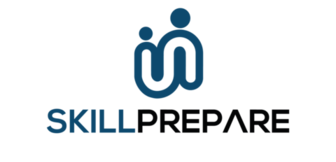
- SpringerLink shop
Writing a textbook – Advice for authors
What is a textbook.
- Is written for primarily students. Whilst the textbook may also be of interest to other audiences, such as researchers, the main audience should be students
- Supports a course: there must be courses being taught at multiple universities for which the textbook would be suitable. The textbook could either be the only textbook recommended for the course, or it could be a more supplementary textbook that would appear on a recommended reading list.
Why write a textbook?
There can be several reasons why a textbook gets written:
- There is no textbook on the topic: if this is a relatively new area or perhaps a more niche topic then perhaps no-one has written a textbook to support courses yet
- Existing textbooks are inadequate: perhaps current textbooks don’t cover the topic very well and you have to dip in and out of several different textbooks to cover all the topics you need. Perhaps current textbooks are outdated and haven’t kept up with the research, meaning you have to do a lot of work providing your own notes to supplement these textbooks
- Prestige!: you could write the textbook on the topic and become a household name (in academic circles at least!)
- The opportunity to expand the impact of your educational materials by working with an internationally recognized publisher who can promote and disseminate the textbook to a global audience
You should carry out market research to ensure there is an audience for your textbook and to help you understand what the competing textbooks would be:
- Is there a market for the textbook: are other people teaching similar courses? Is this course taught at universities around the world?
- What should be covered in the textbook: look at how other instructors teach this course - what topics are commonly taught? These should feature in your textbook
- How should you structure the textbook: again, looking how this course is taught, is there a common order that the topics are taught? Your textbook should reflect this
- What features to competing textbooks include: If they all have exercises then yours probably should too. Is there anything that you could add to your textbook to make it stand out from the others, e.g. case studies, definitions of key terms, etc.?
- Look at reviews of competing textbooks: what do readers like/dislike about the textbook? Have a look at sources such as Amazon and speak to colleagues about the textbooks they use
Have a vision for the textbook! Before you begin writing a proposal for a textbook or approaching a publisher, you should have a clear idea in your mind about what the textbook will be:
- Who am I writing this textbook for: have a clear understanding of who your target audience is i.e. what level of degree course will this textbook support?
- What is the objective of my textbook: Why is this textbook needed? Will it be a core course textbook, i.e. the only textbook for the course, or will it be more supplementary i.e. only covering part of a course and appearing on a recommended reading list? How will it meet a course curriculum?
- How will students benefit from my textbook: will they gain an in-depth understanding of a topic, or develop a skill set to understand a particular problem, etc.?
- Do I have already material that I can turn into a manuscript: can I repurpose my own lecture notes, slides, assignments/course questions, etc.?
There are a few final points to consider before you start writing, or to bear in mind as you are writing.
- Prerequisite knowledge: what topics or concepts should readers already be familiar with? Do you need to review these or further explain them?
- Self-contained: students typically want a one-stop resource so you should try to ensure that as much of the information that student needs is presented in your textbook
- Modular chapters: students will likely dip in and out of the textbook rather than read it linearly from start to finish so try to make chapters self-contained where possible, so they can be understood out of context of the rest of the textbook
- Succinct and to the point: keep focused on the course that the textbook is supporting and the topics that need to be covered. Avoid including less relevant topics, very advanced topics, explanations of concepts that students should already understand, and any other content which may not actually be useful to the student
- Didactic elements: elements such as exercises, case studies, definitions and so on help break up the main chapter text and make it more engaging. Consider what didactic elements you want to include before you start writing so you can ensure that the main chapter text provides the right information to support the didactic element e.g. that a concept is adequately explained in order to answer an exercise question, or that theory is suitably described before a corresponding case study is given
- Writing style: textbooks can have a lighter, more conversational writing style than monographs and references works. Try to use active rather than passive sentences e.g. “It is believed by some physicians that…” becomes “Some physicians believe that…”
- Online resources: if you have exercises, consider writing a solutions manual for instructors so they don’t have to work out all the solutions themselves. Are there data sets, spreadsheets, programs, etc., that would be useful for students to access so they can test concepts themselves? The same copyright issues apply for online resources as for the print book – see Obtaining permissions for further information
- Write an Introduction to explain who the textbook is for and how it should be used: confirm the level of the students e.g. 3rd year undergraduates; confirm the course that the textbook supports; list any prerequisites or assumptions you have made about the student’s background knowledge; explain how the textbook could be used. If applicable, identify core must-read chapters and chapters which are more advanced or optional; provide short summaries of the chapters (just a sentence or two)
- Test your material as you write: use your draft chapters as part of your lecture course and see how students respond to it. Do they understand the concepts you are explaining? Are they able to complete any exercises?
Important downloads (manuscript guidelines and SEO tips)
Creating, Designing and Writing a Teaching Book
Author biography.
@TeacherToolkit
If you were writing – or at least wanting to write – a book, where would you start?
What I would like to share here, is an insight how I have set about constructing and publishing my very own book (idea).
The Last Book:
I consider my story into the world of educational publication a unique story. Most authors spend years sending their manuscripts off to wannabe-publishers and received countless rejections; some books never reaching print. Yet, in April 2013 as a direct result of blogging, I was asked by Bloomsbury Publishing to write a book. I was chuffed and grabbed the opportunity with both hands and published 100 Ideas for Outstanding Lessons, for Secondary Teachers . This appears more common-practice now that more and more people are blogging their views online. Is this a small win for writers, or a massive coup for publishers who may scour popular blogs and websites? Just a thought …
Despite the current landscape of Ofsted and grading individual lessons, it wasn’t the title I would have liked to have been given, nor a book concept I consider to be ‘all mine.’ However, when you are new to something, just like when we are a new teacher in the classroom, we make the most of what you’ve got and we learn from our experiences. Nevertheless, I set about writing this book and sharing some of my own ideas that work in the classroom. I blogged about my book journey here . This blog takes the reader through the author’s journey from conception, construction through to submission and publication (book launch) day.
What I am aware of, and I have been privy to the book statistics and buyer-research of the publishing world, is that 100 Ideas is one of the most popular books in education over the past 5 years! As a result, at Bloomsbury HQ, we celebrated the 10,000th sale of 100 Ideas in December 2014 and it was there and then, that the idea for a second book was made reality. I signed the contract the very next month and began reflecting of what I would like ‘my first book’ to become.
Creating a Book:
I signed the Te@cherToolkit: Helping You Survive Your First Five Years book contract in January 2014. It took me 3 months to design the concept and produce a detailed list of chapter headings and suggested content. The following 6 months were spent dictating and writing. It was slow and to be honest, I lacked motivation. The real pressure increased once I started my new job as a deputy headteacher. I found my own time at home decreased and therefore my opportunities to write in the evening diminished. I was therefore resigned to write in the school holidays and, coupled with exhaustion and wanting to relax, I found my school holidays to be a false dichotomy.
All in all, from October half-term 2014 up until the school summer holidays of August 2015, I have probably spent about half of my time writing this book. This calculates as:
- January 2014 – March 2014: First 3 months forming the book concept.
- April 2014 – August 2014: Forming the book structure; concept, sections and sub-chapters.
- The odd day writing here and there; using August to write the bare bones of the entire book in a rough draft.
- October 2014 half-term: 3 days writing non-stop.
- December 2014: one week re-writing section 1.
- February 2015 half-term: 3 days re-writing sections 2 and 3.
- Easter 2015: one week re-writing sections 4 and 5.
- August 2015: three weeks to re-write edits to sections 1-5; write the introduction and conclusion; proof-read everything and agree the final illustrations.
I should’ve finished this book six months ago, but life gets in the way as does one’s work; taking on a new job as a deputy headteacher has come with an increased workload in many new aspects of education and working in a large secondary school comes with its own challenges and is the impetus behind many of my blog posts and the focus/content of my new book.
Designing a Book:
In the beginning, the first conversation with my editor was to discuss the book concept. This is essentially what you can now find on the back of the book cover. My initial brief was to put down on two sides of paper, what the book was about. Once this was established, we then set about discussing what the book should entail; essentially this book would become a larger volume of 100 Ideas , but specifically targeted towards the new teacher, coupled with pragmatic advice as well as advice.
During the initial 3 months I set about constructing the themes/chapters I would like to discuss within the book. This then required further re-tweaking into the 5 sections that now exist in the book. Initially, I blogged about The Visual Anatomy of a Great Teacher and after countless reads online, the concept of what makes a great teacher evolved into using the images from the blog – the Vitruvian Man – into a small research project for myself. I set about reading about Marcus Vitruvius Pollio and as a design technology, was fascinated by his publication De architectura and its concepts. After much pondering, I reflected on the first 5 years of teaching and likened this journey to Vitruvian theory, despite fervently disagreeing that anything ‘perfect’ exists. Without going into full details here, this is how the concept of the book came to be and set the foundations for how the book would be designed and formatted into its various sections and sub-chapters.
The book database initially looked like this;
Writing a Book:
Writing a book is truly a labour of love; and it is not something I wish to complain about. I count myself very fortunate indeed to be in a position to be able to write a book and have it published; particularly in my own profession. But it is a slog. I have learnt to accept when writers block is upon me – particularly during moments when I have the time to write in the school holidays – and also when to embrace ‘eureka’ moments and write, write, write; no matter what time of the day. My top strategy has been to voice-record thoughts on the drive home from work, with a dictaphone scribing content into a gobbledygook email for me to tweak once I arrive home. This was then saved for a rainy day when the time was needed.
Here is how the new book database looked on Dropbox (in print);
This slideshow requires JavaScript.
After much avoidance, my editor made a seismic shift by taking my database and moving the entire book and its content over to Dropbox. This was a ‘eureka’ moment for me, because it reduced my workload significantly. Suddenly, I had no more need to colour code my own database; worry about which document I was using, which email or even which version I was working on! I use Google and Dropbox in my personal and professional life, but had never, ever considered using it for the book. In an instant, there was one version, updated there and then online. It was a turning point. in April 2015.
The Final Run:
Despite it being the summer holidays, book edits were intense and I had to work according to a tight schedule throughout August 2015. If I fell behind, my workload increased and the opportunity for ‘a break’ diminished.
After book delivery, there was a few days in-between where very little happened. There was time to sit back and feel pleased with all the effort invested over the past 18 months, particularly in the school holidays. If an email popped through, and it did, decisions often had to be quick and decisive! At the end 3rd week of the summer holidays (August 2015), I headed into Bloomsbury HQ for final proof-reading. In total, this task took 5+ hours. We skim-read, every single page!
On Friday 7th August, we had finally proofread over 200+ pages! We were exhausted ..
Photoshoot:
Much to my discomfort, there then was a pre-planned photoshoot where my mug-shot was to appear on the inside of the book cover. Here are some of the stills in all their glory; you can see there would be a great deal of photo-editing required! After three attempts to please the author, none of the images in their current form made the final cut. You will have to read the book to see which photo made the cover.
After a final few (silent) days in mid-August, my editor @HollyBloomsbury tweeted me the following photograph marking the moment the book had gone to print on Friday 13th August at 8.30pm (click to see the tweet). There was no going back! On the following day, I was given less than 2 hours to make a decision on final edits for the book cover , and to choose an ‘author photograph!’
Book Launch:
There will be 1,000 limited editions printed in hardback. I’ve been asked to sign them all, so I may as well enjoy being an author for a moment. There will be also be a book launch party in late September. More to follow …
I am a firm believer, that if I can write about despite living with some of my literacy demons as an adult/teacher, then so can you. Writing a book and blogging online is by far the best way to address literacy.
If you fancy buying a copy, the release date is Thursday 24th September 2015; you can pre-order in two key places:
- Bloomsbury if you want a copy directly from the publishers – and first!
- or Amazon if you would like to keep purchases easy, but rely on a 3rd party for delivery. They essentially purchase books from the publisher.
Thanks for reading this and if you do purchase the book, I hope it a) inspires you to become/remain a teacher and b) write your own book.
23rd September 2015:
I finally have a copy in my hands!
One thought on “ Creating, Designing and Writing a Teaching Book ”
I really enjoyed reading about your journey! Being an FE Lecturer and father of two, I can relate to many of the key points you made about fighting against exhaustion and time! I have had so many 3am sleeps in the past 10 months or so, not to mention the 4am wake ups by one of the kids! Much like yourself, I wouldn’t have it any other way!
I have found a new and unexpected hobby through writing and continue to learn more by the day! I have been on various book writing courses and am weighing up the best options on publishing. I am seeking advice from Teaching professionals on finalising the project. I am really inspired by your impact on social media and use of technology and have been preparing blogs to go alongside promotion for my book.
I would love to keep in contact and will keep an eye on your tweets etc.
Best of luck in your projects. Keep inspiring!
Fabian Darku
Leave a Reply Cancel reply
Your email address will not be published. Required fields are marked *
Notify me of follow-up comments by email.
Notify me of new posts by email.
This site uses Akismet to reduce spam. Learn how your comment data is processed .
Our partners
Privacy overview.
School's out
A critical take on education and schooling
The 50 great books on education
Professor of Education, University of Derby
View all partners

I have often argued that I would not let any teacher into a school unless – as a minimum – they had read, carefully and well, the three great books on education: Plato’s Republic, Rousseau’s Émile and Dewey’s Democracy and Education. There would be no instrumental purpose in this, but the struggle to understand these books and the thinking involved in understanding them would change teachers and ultimately teaching.
These are the three great books because each is sociologically whole. They each present a description and arguments for an education for a particular and better society. You do not have to agree with these authors. Plato’s tripartite education for a just society ruled over by philosopher kings; Rousseau’s education through nature to establish the social contract and Dewey’s relevant, problem-solving democratic education for a democratic society can all be criticised. That is not the point. The point is to understand these great works. They constitute the intellectual background to any informed discussion of education.
What of more modern works? I used to recommend the “blistering indictment” of the flight from traditional liberal education that is Melanie Phillips’s All Must Have Prizes, to be read alongside Tom Bentley’s Learning Beyond the Classroom: Education for a Changing World, which is a defence of a wider view of learning for the “learning age”. These two books defined the debate in the 1990s between traditional education by authoritative teachers and its rejection in favour of a new learning in partnership with students.
Much time and money is spent on teacher training and continuing professional development and much of it is wasted. A cheaper and better way of giving student teachers and in-service teachers an understanding of education would be to get them to read the 50 great works on education.
The books I have identified, with the help of members of the Institute of Ideas’ Education Forum, teachers and colleagues at several universities, constitute an attempt at an education “canon”.
What are “out” of my list are textbooks and guides to classroom practice. What are also “out” are novels and plays. But there are some great literary works that should be read by every teacher: Charles Dicken’s Hard Times – for Gradgrind’s now much-needed celebration of facts; D. H. Lawrence’s The Rainbow – for Ursula Brangwen’s struggle against her early child-centred idealism in the reality of St Philips School; and Alan Bennett’s The History Boys – for Hector’s role as the subversive teacher committed to knowledge.
I hope I have produced a list of books, displayed here in alphabetical order, that are held to be important by today’s teachers. I make no apology for including the book I wrote with Kathryn Ecclestone, The Dangerous Rise of Therapeutic Education because it is an influential critical work that has produced considerable controversy. If you disagree with this, or any other of my choices, please add your alternative “canonical” books on education.
Michael W. Apple – Official Knowledge: Democratic Education in a Conservative Age (1993)
Hannah Arendt – Between Past and Future (1961), for the essay “The Crisis in Education” (1958)
Matthew Arnold – Culture and Anarchy (1867-9)
Robin Barrow – Giving Teaching Back to the Teachers (1984)
Tom Bentley – Learning Beyond The Classroom: Education for a Changing World (1998)
Allan Bloom – The Closing of the American Mind: How Higher Education Has Failed Democracy and Impoverished the Souls of Today’s Students (1987)
Pierre Bourdieu and Jean-Claude Passeron – Reproduction in Education, Society and Culture (1977)
Samuel Bowles and Herbert Gintis – Schooling in Capitalist America: Educational Reform and the Contradictions of Economic Life (1976)
Jerome Bruner – The Process of Education (1960)
John Dewey – Democracy and Education (1916)
Margaret Donaldson – Children’s Minds (1978)
JWB Douglas – The Home and the School (1964)
Kathryn Ecclestone and Dennis Hayes – The Dangerous Rise of Therapeutic Education (2008)
Harold Entwistle – Antonio Gramsci: Conservative Schooling for Radical Politics (1979).
Paulo Freire – Pedagogy of the Oppressed (1968/1970)
Frank Furedi – Wasted: Why Education Isn’t Educating (2009)
Helene Guldberg – Reclaiming Childhood (2009)
ED Hirsch Jnr. – The Schools We Need And Why We Don’t Have Them (1999)
Paul H Hirst – Knowledge and the Curriculum (1974) For the essay which appears as Chapter 3 ‘Liberal Education and the Nature of Knowledge’ (1965)
John Holt – How Children Fail (1964)
Eric Hoyle – The Role of the Teacher (1969)
James Davison Hunter – The Death of Character: Moral Education in an Age without Good or Evil (2000)
Ivan Illich – Deschooling Society (1971)
Nell Keddie (Ed.) – Tinker, Taylor: The Myth of Cultural Deprivation (1973)
John Locke – Some Thoughts Concerning Education (1692)
John Stuart Mill – Autobiography (1873)
Sybil Marshall – An Experiment in Education (1963)
Alexander Sutherland Neil – Summerhill: A Radical Approach to Child Rearing (1960)
John Henry Newman – The Idea of a University (1873)
Michael Oakeshott – The Voice of Liberal Learning (1989) In particular for the essay “Education: The Engagement and Its Frustration” (1972)
Anthony O’ Hear – Education, Society and Human Nature: An Introduction to the Philosophy of Education (1981)
Richard Stanley Peters – Ethics and Education (1966)
Melanie Phillips – All Must Have Prizes (1996)
Plato – The Republic (366BC?)
Plato – Protagoras (390BC?) and Meno (387BC?)
Neil Postman – The End of Education: Redefining the Value of School (1995)
Neil Postman and Charles Weingartner – Teaching as a Subversive Activity (1969)
Herbert Read – Education Through Art (1943)
Carl Rogers – Freedom to Learn: A View of What Education Might Become (1969)
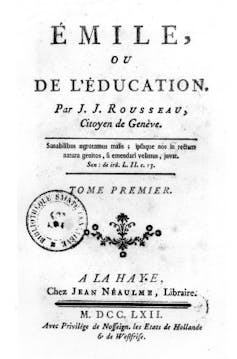
Jean-Jacques Rousseau – Émile or “on education” (1762)
Bertrand Russell – On Education (1926)
Israel Scheffler – The Language of Education (1960)
Brian Simon – Does Education Matter? (1985) Particularly for the paper “Why No Pedagogy in England?” (1981)
JW Tibble (Ed.) – The Study of Education (1966)
Lev Vygotsky – Thought and Language (1934/1962)
Alfred North Whitehead – The Aims of Education and other essays (1929)
Paul E. Willis – Learning to Labour: How Working Class Kids Get Working Class Jobs (1977)
Alison Wolf – Does Education Matter? Myths about Education and Economic Growth (2002)
Michael FD Young (Ed) – Knowledge and Control: New Directions for the Sociology of Education (1971)
Michael FD Young – Bringing Knowledge Back In: From Social Constructivism to Social Realism in the Sociology of Education (2007)
- Teacher training
- Continuing professional development

Sydney Horizon Educators (Identified)

Senior Disability Services Advisor

Deputy Social Media Producer

Associate Professor, Occupational Therapy

GRAINS RESEARCH AND DEVELOPMENT CORPORATION CHAIRPERSON
- I'M AN INSTRUCTOR
- I'M A STUDENT

Find what you need to succeed.
- Our Mission
- Our Leadership
- Learning Science
- Macmillan Learning AI
- Sustainability
- Diversity, Equity, and Inclusion
- Accessibility
- Astronomy Biochemistry Biology Chemistry College Success Communication Economics Electrical Engineering English Environmental Science Geography Geology History Mathematics Music & Theater Nutrition and Health Philosophy & Religion Physics Psychology Sociology Statistics Value
- Digital Offerings
- Inclusive Access
- Lab Solutions
- LMS Integration
- Curriculum Solutions
- Training and Demos
- First Day of Class
- Administrators
- Affordable Solutions
- Badging & Certification
- iClicker and Your Content
- Student Store
- News & Media
- Contact Us & FAQs
- Find Your Rep
- Booksellers
- Macmillan International Support
- International Translation Rights
- Request Permissions
- Report Piracy
A Guide to Writing in Education

Psychology in Everyday Life
A writer's help guidebook series first edition | ©2020 stephen bernhardt; nancy sommers.
ISBN:9781319230838
Take notes, add highlights, and download our mobile-friendly e-books.
A Guide to Writing in Education, part of the Writer’s Help Guidebook Series, offers writing and research support for students writing in the discipline. This compact yet comprehensive guidebook provides the value students want with the essential instruction they need to complete writing tasks successfully. Students will find advice on how to think, read, research, and design and write papers, and projects and presentations like an education professional. Coverage includes the following topics, all focused on the specific needs of writers in education: Writing process Conventions in the discipline Integrating and evaluating sources Documentation style required in the discipline--with plenty of models Sample student writing
New to This Edition
First Edition | ©2020
Stephen Bernhardt; Nancy Sommers
Digital Options
Read online (or offline) with all the highlighting and notetaking tools you need to be successful in this course.
Learn About E-book
First Edition | 2020
Table of Contents

Stephen A. Bernhardt
Stephen A. Bernhardt is Professor of English and the Andrew B. Kirkpatrick Chair in Writing at the University of Delaware, where he teaches composition, grammar, and technical writing. His professional interests include computers in composition/distance education, writing across the curriculum, professional and technical communication, and visual rhetoric. He has also taught at New Mexico State University and at Southern Illinois University. The author of many journal articles and technical reports, Bernhardt is also the author of Writing at Work (1997) and coeditor of Expanding Literacies: English Teaching and the New Workplace (1998). Bernhardt designed the research plan and reworked content for Writers Help .

Nancy Sommers
Nancy Sommers , who has taught composition and directed composition programs for thirty years, now teaches in Harvard’s Graduate School of Education. She led Harvard’s Expository Writing Program for twenty years, directing the first-year writing program and establishing Harvard’s WAC program. A two-time Braddock Award winner, Sommers is well known for her research and publications on student writing. Her articles “Revision Strategies of Student and Experienced Writers” and “Responding to Student Writing” are two of the most widely read and anthologized articles in the field of composition. Recently she has been exploring different audiences through blogging and through publishing in popular media. Sommers is the lead author on Hacker handbooks, all published by Bedford/St. Martin’s, and is coauthor of Fields of Reading , Tenth Edition (2013).
Related Titles
Meet Nancy Sommers
Steve Bernhardt: Author Talk
Select a demo to view:
We are happy to offer free Achieve access in addition to the physical sample you have selected. Sample this version now as opposed to waiting for the physical edition.
Write the Book
- Posted January 22, 2018
- By Lory Hough
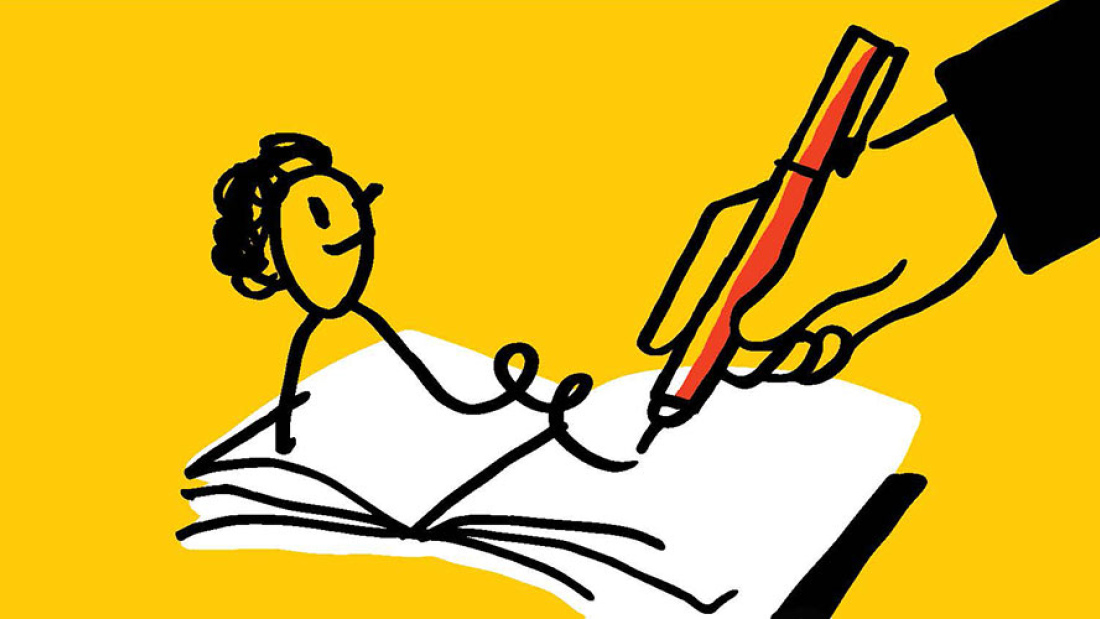
Cynae Punch Brown, Ed.M.’08, wrote her first young adult book, Pineapple Sugar , in part to encourage others to listen to that nagging voice in their head telling them to do something — start a business, take a class, or, like her, write the book. Brown, an instructor in the Urban Education Program at the University of Houston, talked to Ed. about motivation, grief, and how she reclaimed her creativity.
LIKE THE MAIN CHARACTER, YOUR MOTHER ALSO PASSED AWAY. After my mother died, I remember returning to school, and one of the hardest parts of the day for me was dismissal and pick-up time. Usually, it was everyone’s mom who picked them up from school. I remember feeling so alone because the norm for me was having a mom. When mine died, I immediately became abnormal. As an avid reader back then, every story that was written had a mom, so every time I opened a book, I was reminded of how abnormal I was. Add to that the fact that the private school I attended had little to no diversity. I was one of two students of color in my entire grade. Trying to find someone to relate to an African American girl whose mom died wasn’t a reality for me. That’s what stuck with me. That’s what made me want to write a book about loss with a main character who is a person of color.
IS THIS STORY YOUR STORY? Pineapple Sugar is not my diary at all. Pineapple Sugar, I would say, probably would be my ideal approach to grief. The main character knew what was happening. She was allowed the opportunity to prepare and ready herself. Pending grief and the idea of absolute death was not hidden from her, even at a young age. That’s what makes this book special to me. Although the book is written with the middle-grade student in mind, teachers, counselors, and parents are reading it and learning a healthy way to discuss death with young people who have loved ones with terminal illnesses. So often we try to protect kids and we don’t include them in processes that are vital to their understanding of death.
WERE YOU SHIELDED? When my mom died, I was given very little information. Looking back, the signs of her being really ill were all there. But I was in elementary school, so I didn’t see it coming. All I knew is that she went in the hospital on Thanksgiving Day and never came back. It wasn’t until years later in talk-ing to my grandmother that I started getting bits and pieces about her battle with Lupus.
YOU WROTE A LETTER TO AN AUTHOR WHEN YOU WERE A KID AND SHE CALLED YOU? I have always been analytical, even as a child. If something didn’t make sense to me, I wanted answers. That’s pretty much what our conversation was when she called me while in grade school. Now fast forward about 30 years, and Eleanora E. Tate is still impacting my writing. I 2018sent her my first draft, which she lovingly marked up and sent me back to the drawing board. Along the way, she has pointed me to resources and has given me lots of helpful information to help make me better. I’m far from being on her level. Still, I’m so thankful for her commitment to her readers. You just don’t find that in today’s literary world.
HOW DID HGSE MOTIVATE YOU? HGSE gave me the opportunity to run, jump off that academic cliff, spread my wings, and soar. One particular memory that I have is [former professor and Ed School alum] Thomas Payzant’s story of how he had never been a principal before becoming the superintendent of Boston Public Schools, a position he held for 11 years. Every time I get ready to shirk a personal or professional opportunity, each time that voice in the back of my head says, “You don’t have enough experience to be successful at XYZ,” I honestly think of him. And then I go for it.

Ed. Magazine
The magazine of the Harvard Graduate School of Education
Related Articles

When Bad Things Happen

Coping with Community Crisis
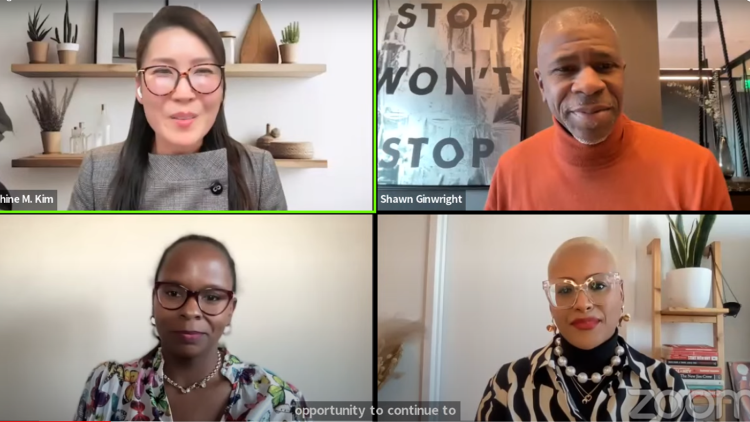
Tackling Unhealed Trauma in Communities and Schools
An exploration of healing-centered engagement, a social-emotional learning approach that promotes self-esteem and offers a holistic view of recovery for young people of color managing trauma while also creating positive conditions for academic achievement.
Become a Bestseller
Follow our 5-step publishing path.
Fundamentals of Fiction & Story
Bring your story to life with a proven plan.
Market Your Book
Learn how to sell more copies.
Edit Your Book
Get professional editing support.
Author Advantage Accelerator Nonfiction
Grow your business, authority, and income.
Author Advantage Accelerator Fiction
Become a full-time fiction author.
Author Accelerator Elite
Take the fast-track to publishing success.
Take the Quiz
Let us pair you with the right fit.
Free Copy of Published.
Book title generator, nonfiction outline template, writing software quiz, book royalties calculator.
Learn how to write your book
Learn how to edit your book
Learn how to self-publish your book
Learn how to sell more books
Learn how to grow your business
Learn about self-help books
Learn about nonfiction writing
Learn about fiction writing
How to Get An ISBN Number
A Beginner’s Guide to Self-Publishing
How Much Do Self-Published Authors Make on Amazon?
Book Template: 9 Free Layouts
How to Write a Book in 12 Steps
The 15 Best Book Writing Software Tools
How to Become an Author: 8 Steps to Bestselling Success
POSTED ON Feb 7, 2024
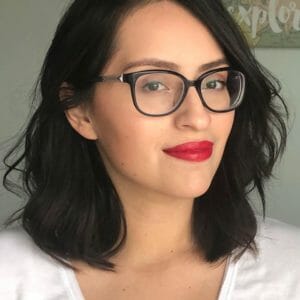
Written by Angelica Hartgers
Wondering how to become an author? Well, that answer will depend on the type of author you want to be.
Maybe you’ve always been a writer at heart, and are ready to share your story with the world and earn the title of “author.”
Or maybe you’re passionate about a certain topic and are ready to help others by sharing your expertise.
Regardless of your reason – the issue still stands: you want to know how to become an author of a book and a bestselling one at that. So what is an author anyway? And how does becoming an author work?
To learn how to become an author, the short answer is: You write a book.
Sounds simple, right?
But writing is rarely simple. So, let’s go for the more complex dilemma: How to become an author of a book that actually gets read .
You want to author a book that’s phenomenal, polished, and packed with content that readers will truly connect with. So how do you do that?
In this guide, we’ll focus on how to become an author of a book that sells . But before we dive into the steps on how to become an author, it's important you understand exactly what an author is.
This guide to how to become an author will cover:
What does it mean to become an author.
When you learn how to become an author, it means that you ideated, created, and produced a written work, most commonly a book, novel, short story , poem, or other literary work of prose.
Traditionally, an author meant someone who had written a book, and this connotation still stands today, but it has expanded with societal changes. The term author can actually pertain to journalists, essayists, and those in the digital space such as bloggers or article writers.
Writer vs author
What's the difference between a writer and author , you ask? Great question.
While writer and author are often used interchangeably, there is definitely a difference between the two. An author is a writer, but a writer isn't always an author.
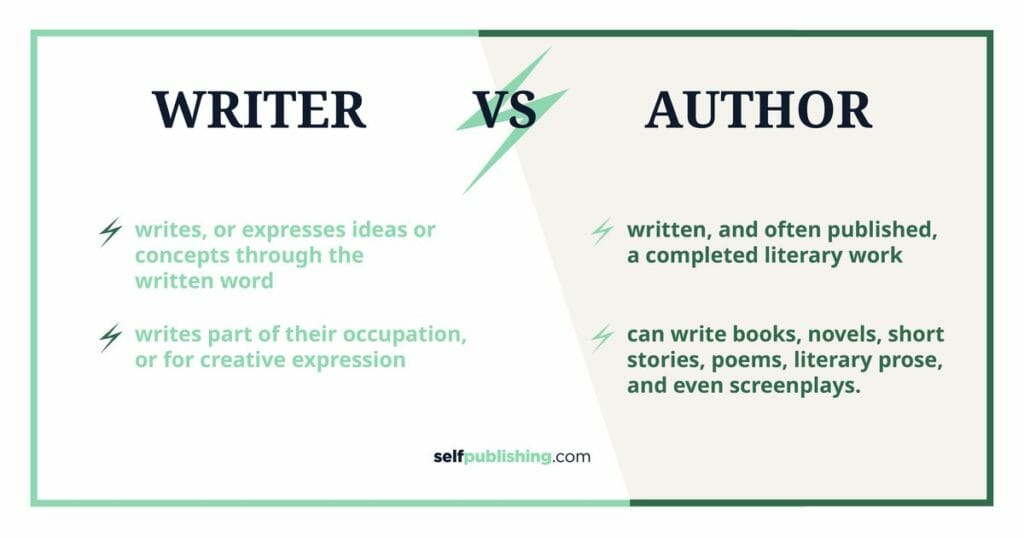
How hard is it to become an author?
While the path of learning how to become an author is easier with today's technology and the rise of self-publishing, learning how to become an author takes determination, hard work, and usually a specific set of skills (which we'll cover more on later).
For some, opportunity comes easier than it does for others. Some people become an author and find quick success, whereas others struggle for years to complete their book and publish it.
For most people, creating a consistent writing routine and actually getting the words written is the hardest part – in which case a book writing coach could be just the person you need in your corner, keeping you motivated and accountable.
It also depends on the book publishing method, which we'll explain more on in the publishing section of this article. For example, traditional publishing deals are hard to come by, and it is a lengthy process. On the other hand, self-publishing makes becoming an author more accessible.
How to become an author in 8 simple steps
Now that you have a deeper understanding of what being an author entails, it's time to dive into the exact process of how to become an author.
When learning how to become an author, here are the eight steps you should take:
1. Invest in education
Learning how to become an author doesn't have any formal educational requirements. But at minimum, a high school degree is recommended. Becoming an author mainly requires that you have a strong set of skills, like the ability to read and write well.
When learning how to become an author, having a degree isn't required, but it can help.
There is a wide range of educational levels for authors, from those with a basic high school education to those who have completed doctorate programs. Pursuing a higher formal education degree can certainly help you learn how to become an author, but it's not a requirement.
Whether you get a degree or not, you must be an exceptional writer and avid reader to improve your chances of becoming an author of a book that actually gets read .
Our society values higher education . When you’re exploring new careers, the first question is usually: What kind of education is needed for this job?
So, it isn’t any wonder that people researching how to become an author immediately ask what type of education or credentials are needed to write a book.
A caveat to this: If you’re looking to publish a book on a specific topic , you must be an expert in that field or industry. A college degree helps build your credibility significantly, even though it is not completely necessary.
Common degrees to consider for aspiring book writers
- English . Anyone with a college degree in English has spent the majority of their college career taking classes on writing development and reading literature for deep analysis. Those with an English degree usually have a strong command of writing, and study the works of famous authors.
- Literature . Similar to a degree in English, a degree in Literature follows the same course syllabus in the sense that it is heavily focused on reading, analyzing, and writing about literary works.
- Creative writing . Writers with a degree in Creative Writing have undergone extensive academic courses surrounding creative writing fundamentals and storytelling. Creative Writing students are expected to write rigorously to improve their craft.
- History . Because history goes hand-in-hand with many literary subjects, those with a degree in History will have a well-rounded skillset to apply as an author.
- Journalism . Writers with a journalism background are likely educated on news-style writing, features, interview processes, and more. Those with a journalism degree often have experience as newspaper columnists or feature writers, which can translate well into an author career.
- Psychology . Those who study psychology have an in-depth understanding of human behavior and interaction, which makes for great writing, especially in fiction.
- Communications . People with a communications degree often have experience in news-writing, marketing, public relations, and more, which are all fields that rely heavily on great writing skills.
- Theater/cinema . Those with a theater background make great authors and writers due to their creativity, understanding of character dynamics, and screenwriting skills.
- Liberal arts . Any degree in liberal arts is likely to be focused on heavy research and writing – no matter the field. Therefore, a liberal arts degree can set you up well for learning how to become an author.
- A degree in any subject you want to write about! If you have a particular industry or niche that you want to focus on in your writing, pursue a degree in that! For example, if I could re-do college all over again, I would pursue a minor degree in Women's Studies, because I love to write about those topics.
Alternatives to college degrees
There are also non-degree online education options for aspiring authors to consider. These are a great choice if you want to learn how to write a book or publish a book on your own. Programs like these are focused on achieving a specific goal, and can be completed at a quicker pace. (Example: Himalayan Writing Retreat )
If you get a traditional college degree, you likely will NOT learn how to write and publish a book. So, if you know for sure that you want to learn how to become an author, you'll save time and money by investing in a course or program that's specific to publishing.
For example, there are many online education programs specifically for aspiring authors, including self-publishing courses.
Be sure to thoroughly do your research to make sure the program is a good fit for your needs.
Online education options
- Self-Publishing courses . Start here if you want to join an education program that provides a complete roadmap to becoming a bestselling author.
- Coursera . Consider a program where you can select specific topics to learn about.
- Udemy . You can find cost-effective micro-courses based on specific topics around writing and publishing.
- MasterClass . There are limited courses for aspiring authors on this platform, but if you're particularly interested in learning how to improve your writing from bestselling, world-renowned authors like Margaret Atwood, check this out.
- CreativeLive . Another option for creative courses specific to certain topics around developing certain creative skills.
2. Learn the skills to become a successful author
While there aren’t any formal education requirements to learn how to become an author of a book, there are certainly some important skills that many successful writers have in common.
Consider these skills like prerequisites – you should aim to improve these skills if you truly want to learn how to become a writer.
In a society of high competition, possessing many of these skills will set you apart and increase your chances of gaining a solid readership.
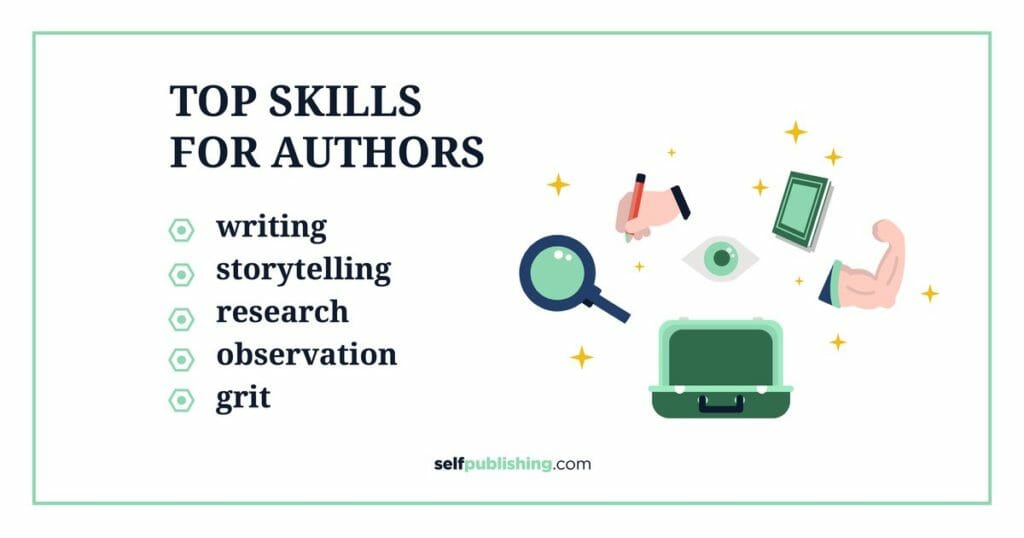
The top skills needed to learn how to become an author are:
Exceptional writing development skills
Being an excellent writer who can communicate effectively through words is the premise of learning how to become an author successfully. We’ll cover more on the fundamentals of writing that you should master in the next section, but you can check out these writing websites to learn how to be a better writer.
Creative storytelling that engages
It’s an art in itself! Whether you’re writing nonfiction or fiction, no matter what genre your book falls in, you need to be able to craft an engaging story that pulls readers in.
The ability to research well
Ask any successful author, and they will tell you that a major factor in successfully writing a book is to conduct thorough research . You need to know your content in and out – whether you’re writing historical fiction, a children's picture book , or a self-help book.
Since you’re reading this article and researching how to become an author, there’s a good chance you’re already research-savvy!
The tendency to naturally observe people and places
In order to create life-size characters, make your story come alive, and describe people and events vividly, you need to possess the power of observation. If you’re not one to naturally sit back and watch from the sidelines, try improving your observation skills .
Vulnerability and grit
Authors put everything they possess into their writing. It takes vulnerability to put your words out there, and resilience to keep at it when the going gets tough. To learn how to become an author, you’ll need to overcome some serious mental blocks, and be courageous even when you’re overworked or fearing judgment.
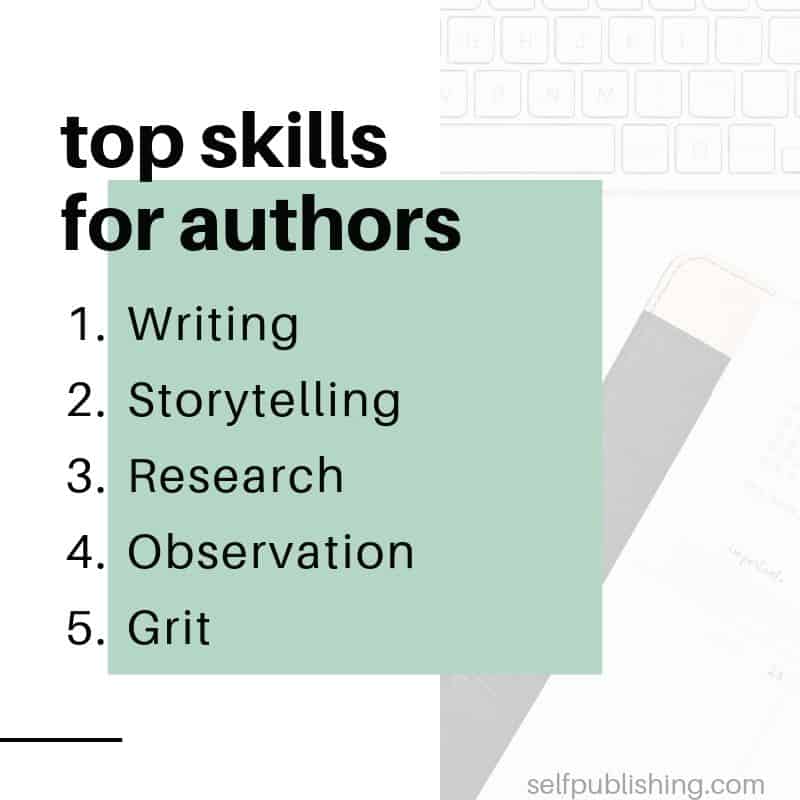

3. Master the fundamentals of book writing
Having an excellent command of writing skills builds a solid foundation on which to begin your author journey.
Many people can write, but not many people can write well. And if you can’t write well, that’s okay!
The good news is that there are a number of ways to improve your writing.

Writing isn’t necessarily a talent, it’s a craft. It can be cultivated. It can be strengthened. And with a growth mindset, you can improve your writing skills by mastering the fundamentals.
Some basic examples of the fundamentals of writing are being able to express ideas clearly and in an organized fashion, using powerful word choice , developing a clear point of view , and using proper grammar and punctuation .
However, there are a lot more fundamental writing techniques to learn and implement in your own writing.
- Learn the writing fundamentals. First, learn all there is to know! You can learn basic writing fundamentals by taking writing development courses, and reading books on writing.
- Study the fundamentals. Be an avid, deep reader. Don’t just read to understand the story. Read to analyze how the author told that story. Study the author’s style, specifically in the genres you want to write in. By doing this, you’ll start to identify characteristics of remarkable writing.
- Practice, practice, practice. Put what you’ve learned into practice. Remember all the literary elements you learned about in school. Start actually using those in your writing. Try mirroring an author’s style that you admire. Write often and make it part of your everyday life. Write in a journal , complete writing prompts, write letters to friends, or write short stories.
- Explore different genres. Part of finding your author's voice and developing yourself as a writer means experimenting with other genres that you may not have written on before. Use creative writing prompts to help you practice your writing fundamentals.
- Show, don't tell in writing . This is the number one rule to writing , and it's important for you to master it. Practice showing and not telling in your own writing, and understand when to use it.
While you shouldn’t cut corners on your writing development, it’s important to not get stuck in this phase.
At the end of the day, you can read and take all the courses in the world, but the most growth and development you will experience is when you’re actually writing.
4. Create a positive author mindset
Many writers experience feelings of insecurity. Ernest Hemingway supposedly said, “There is nothing to writing. All you do is sit down at a typewriter and bleed.”
If writers are figuratively transforming the essence of their being into words on paper for others to read, then it’s no wonder the best writers suffer from their own insecurities and fear of judgment !
Feeling inadequate is expected, and totally normal. But the ability to pursue your goal to learn how to become an author (despite your fear) is what will set you apart from all the other aspiring book writers out there.
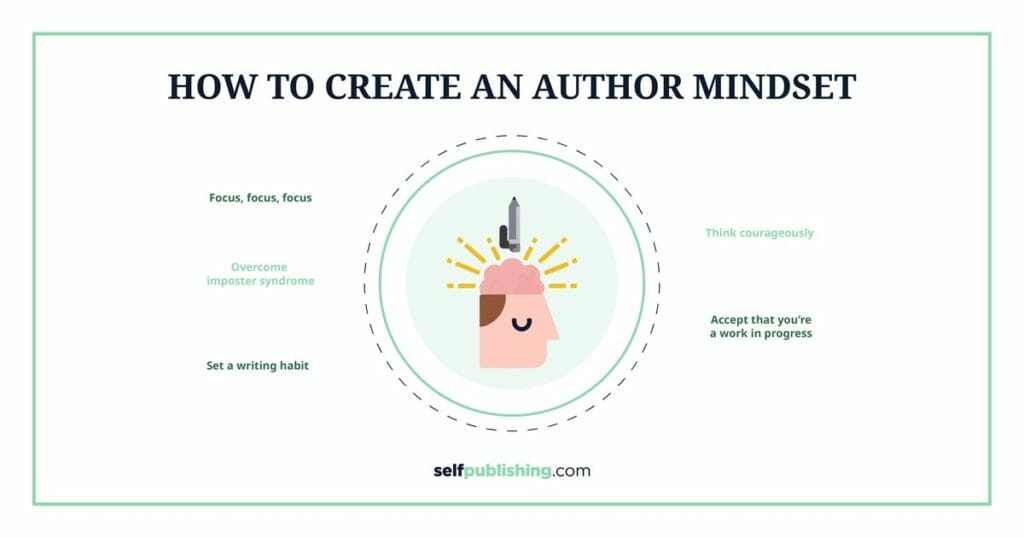
Steps to build a positive author mindset:
- Overcome imposter syndrome and self-doubt as a writer . Give yourself permission to be an author. Don’t shy away from calling yourself a writer – start owning it.
- Accept that you’re a work in progress. Don’t strive for perfection in writing. Maintain a growth mindset , and understand that there is always room for improvement. You are constantly learning, and improving, and there isn’t anything wrong with that. If you wait for perfection, it’ll never get done.
- Set a writing habit. Making writing part of your daily lifestyle is super important. If you tend to wait for inspiration as a writer, you’ll be left high and dry more often than not. We’ll cover more on how to set a writing habit in the next section.
- Focus, focus, focus. We’ve all been there. You sit down at the table to write, and find that an hour has passed and you’ve only churned out a few sentences. Find a focus technique that works for you and stick to it.
- Think courageously. Try not to get too bogged down in the negative “what-ifs.” What if no one likes my book? What if my writing sucks? What if this book is an entire flop? It’s okay to fear failure, but learn to shake it off and be courageous instead. For every negative thought you have, try to think of two positive thoughts!
- Define your own success. Success means something different for every author. Some writers want to share their words with the world, while others simply want to build an author's salary to support their writing. Whatever your reason is, get clarity around your definition of success.
5. Write Your first book to learn how to become an author
To truly learn how to become an author, you have to write a book first.
The world is full of great writers with stories to share. The trouble for many is – they never get around to actually finishing a book.
It also depends on what type of book you want to write. If you want to write a nonfiction book , the process is different than learning how to write a novel . The same is true if you're learning how to write a memoir .
This is where it can really get tough. But with grit, determination, and a clear game plan, you can do it. We’re cheering for you!
Here are the steps to write a book and learn how to become an author:
Get clear on your foundation
Because writing a book can be an uphill battle, you want to make sure your foundation is rock solid. This means getting clear on why you want to become the author of this book. Once you’re super clear on your foundation, you’ll be able to write your book with intention.
Foundational questions you’ll want to ask yourself are:
- When do you want to have this book done by?
- How will you position the book?
- Who are you writing this book for (your target reader)?
- What is your book's topic or genre?
- To grow your income
- To build a reputation/authority
- To fuel a passion project
- To share a story or knowledge
Brainstorm with a mind map
Letting your ideas flow freely with a mind map is an effective way to get those creative juices flowing. With so many ideas to explore for your book’s topic, mind map exercises will help you “brain dump” all your thoughts.
Follow these steps to create a mind map for your book:
- Set a timer for 10-15 minutes to start.
- Always be writing – don’t worry about grammar or spelling, just write out your thoughts without reservations!
- Start with a central idea, topic, or concept.
- Add connecting branches of key ideas that relate to that central idea.
- Jot down any words that tie ideas together.
- Use colored highlighters or sticky notes to organize similar concepts or ideas.

Create an outline
Using your mind map, start creating a basic outline for your book. Don’t get hung up on the details. Think of it in terms of a beginning, a middle, and an end. A simple outline will help you get the ball rolling as you start writing your first draft. As you dive deeper into the writing, your outline can get more detailed, and be revised as needed.
Set a writing schedule
Commit to your writing goals each and every day if you want to learn how to become an author. Set a specific plan for yourself, and set small milestones or goals, whether it’s by word count or time spent writing .
You can have all the ideas in the world, but if you aren’t setting time aside each day to actually write, then the chances of your book being completed will be low.
Tips for setting a writing schedule:
- Set up a distraction-free writing space
- Plan for short brain breaks to avoid burnout
- Set a daily word count goal
- Do NOT edit as you write
- Have a buddy keep you accountable
- Use book writing software to help you meet your daily goals
- Set a deadline to complete your book by
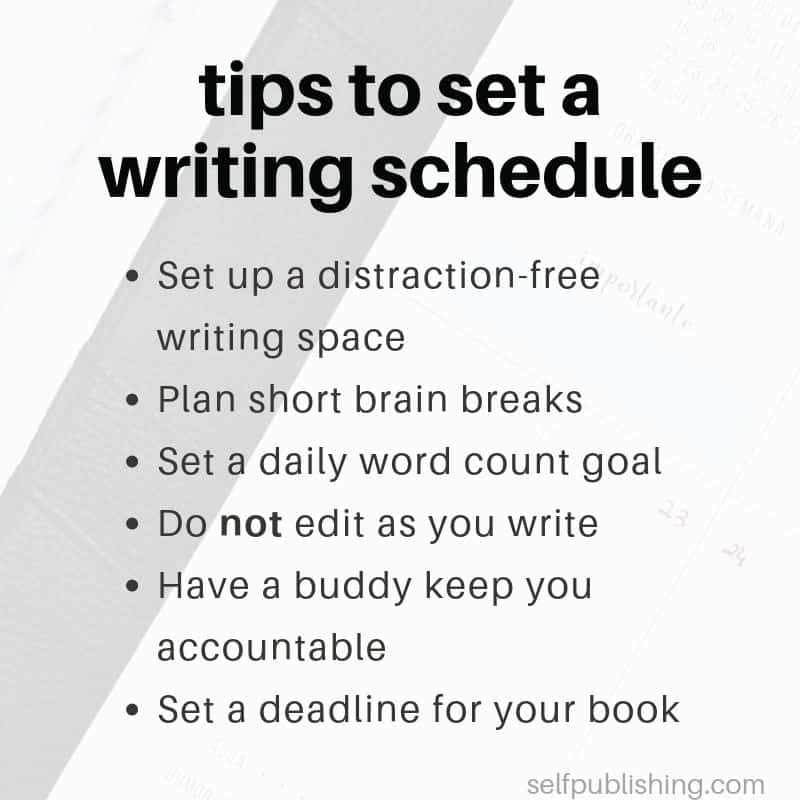
Write your rough draft
Sounds simple, but it’s definitely easier said than done. You can do it! The only way to write a book is to actually sit down and do it. You become a book writer by writing a completed book. Use your outline for guidance, and remember – don’t edit while you write !
Self-edit your book
Once your rough draft is completed, it’s important that you focus on self-editing your book. Although your book will go through a professional editing phase during the publishing process, if you self-edit thoroughly, your editor will be able to focus on other edits that you weren’t able to catch.
Tips for self-editing your book:
- Do a verbal read – through to find areas of improvement in your sentence structure and storyline.
- Work chapter by chapter to increase productivity and focus.
- Don’t get stuck in the editing phase.
- Remember that any points of uncertainty will be cleared up in the professional editing phase.
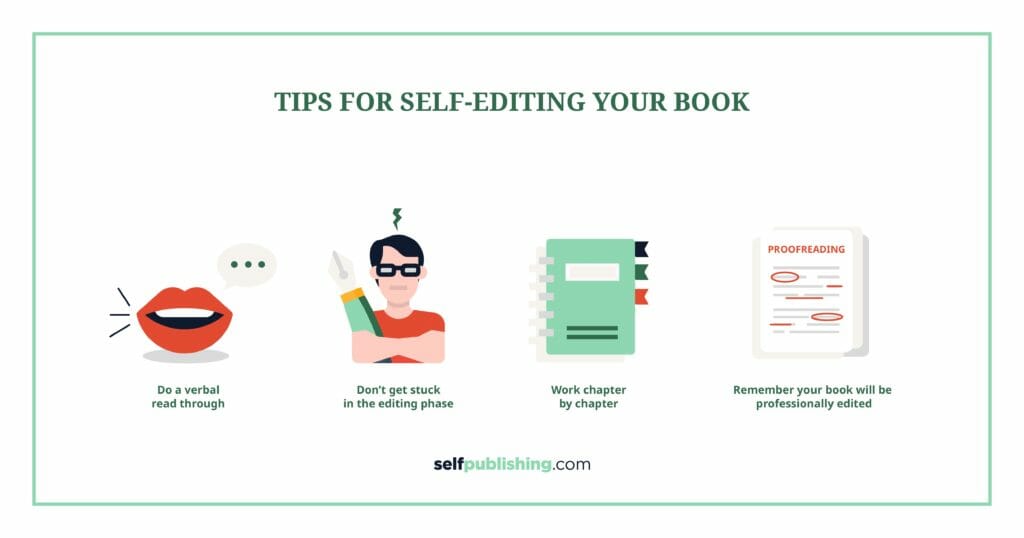
6. Publish your book
Through blood, sweat, and tears, you’ve committed to writing your book, and have officially become a writer.
Now, it’s time to take the next step and learn how to become an author. And that means publishing your book!
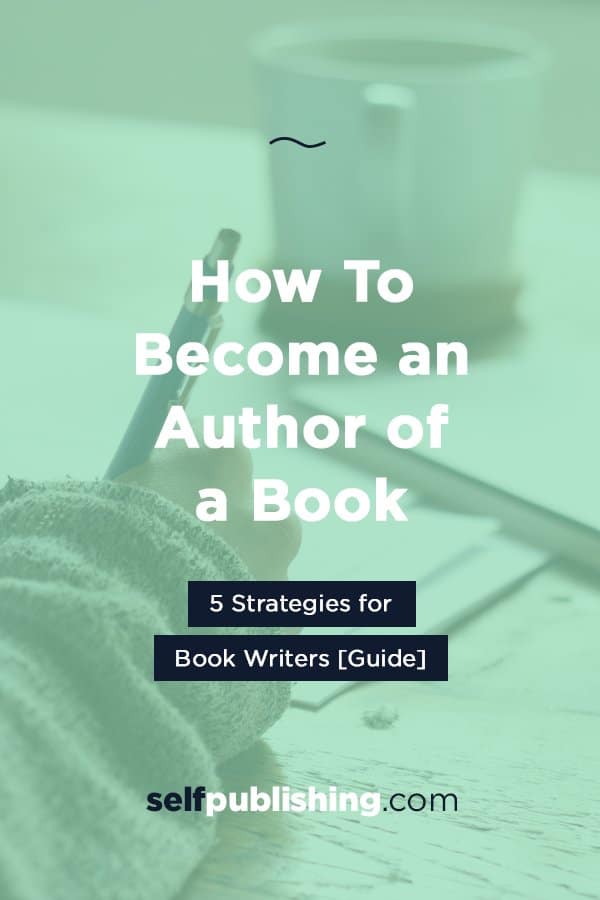
Here’s how to become an author of a published book:
Decide how to publish
Modern book writers are faced with a major decision on how to publish a book . There are two ways to publish: traditionally publish or self-publish .

You’ll have to weigh the pros and cons of each, including the cost to publish , and determine which route is more advantageous for you.
If you traditionally publish your book , this means that an actual publishing company will publish your book for you. However, landing a book contract with a traditional publisher is extremely competitive, and the chances are slim for most authors.
So what is self-publishing , you ask? If you self-publish your book , this means that you will be in charge of the publishing process yourself. There are many benefits in going this route, but you'll need to make sure you are self-publishing the right way to ensure book quality and success .
Steps to traditionally publish a book
- Pitch your book draft to literary agents.
- If your manuscript is accepted by an agent, your book will be pitched to publishers.
- If a publisher accepts your work, you will be offered a book contract.
- The publisher will have your book edited, formatted, and designed.
- You earn royalties based on the number of books that are sold.
Steps to self-publish a book
- Find a book editor for each type of editing needed
- Hire a formatter (if needed) for your book.
- Hire a professional book cover designer to create an engaging book cover.
- Choose which self-publishing platforms to sell your book on.
- Upload the book to the self-publishing platform.
If you still need help deciding how to publish, compare your earning potential with our Book Royalties Calculator .
1. My book will be published by a...
2. my book will be an:, 3. my royalty rate will be:.
*Please note that this royalty rate is based on the market averages for paperback books. Actual royalty rates for traditional and indie publishing can vary by author depending on several factors.
4. My book's retail price:
5. the # of books sold:, your results, your profit per book sold, for books sold, you earn:, for 1,000 books sold, you earn:, for 10,000 books sold, you earn:, royalties comparisons for 10,000 books sold, want to receive personalized tips on how to sell more books right in your inbox, 7. market your book to become a bestselling author.
Whether you traditionally publish or self-publish, you need to launch and market your book to learn how to become an author successfully.
This step is crucial because if you don’t market your book, how are you going to reach potential readers?
You dedicated time, effort, and – at times – your sanity, to get your book out. Now it’s time to let the world know about it.
You’ll need a strategic book launch and marketing plan in place, which should include a number of techniques to gain readership and sell your book.
Book marketing strategies to consider
- Build a launch team before your official book release
- Social media marketing , such as on Pinterest and Instagram
- Effective book pricing that appeals to prospective readers
- Build an author website to create your own author platform
- Use book advertising on various book promo sites like BookBub
- Get book reviews to increase visibility, reach, and credibility
To dive deep into your book marketing , plan ahead, set a budget, do research, and reach out to your network!
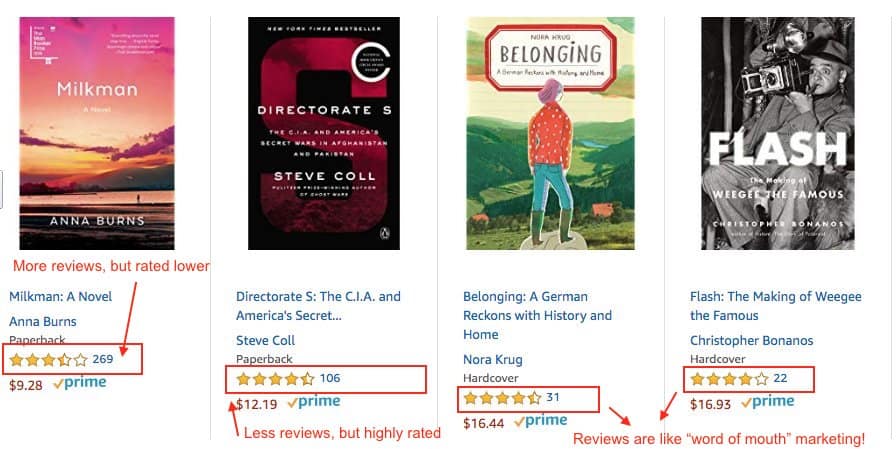
8. Write another book!
Your first book is a learning experience, and once your first book is published, you'll realize how many ideas you have for more books.
And that is where the real success comes in. In today's digital author landscape, it's important to keep writing books in order to build a career as an author.
Don't make the mistake of thinking that one book will find instant success. While that does happen for some writers, it is the exception and NOT the rule.
So keep going! Write your next book. The more books you write, the smoother your process will become.
Are you ready to become an author?
Great books make the world go ‘round, which is why we’re all about helping writers learn how to become authors.
As you research how to become an author, one thing becomes clear: it’s a process that takes time, dedication, and some serious effort.
But nothing worth having comes easy.
Books are life-changing, not just for the book writer, but for the book readers all across the world that will learn from your story.
Becoming an author can be one of the most rewarding, and fulfilling accomplishments of your life. You deserve to celebrate it!
Ready To Learn How to Become An Author? This FREE eBook Will Walk You Step-By-Step Through The ENTIRE PROCESS
Faqs about how to become an author.
Here are answers to commonly asked questions about what an author is and how to become an author:
What is a writer?
A writer is someone who writes or expresses ideas or concepts through the written word. There are many people who write for a variety of reasons – whether it's part of their occupation, or for creative expression.
Types of writers that aren't necessarily authors:
- Technical writers
- Ghostwriters
- Copywriters
- Content writers
- Songwriters
Can anyone be a writer?
It depends on the type of writer, but yes, technically anyone can be a writer as long as they know how to write. However, specialized writers, such as technical writers and copywriters often require advanced experience and/or degrees in order to be qualified for a writing position. Of course, learning how to become an author is a different story, entirely.
What is an author?
Authors are people who write books, novels, short stories, poems, literary prose, and even screenplays.
What is an author, exactly? An author is someone who has written and published a complete literary work. The publishing is key. If you haven't published your work, then you are a writer but not an author.
How do authors get paid?
Authors can be paid in a variety of ways, but most commonly authors are paid through book advancements and royalty fees.
How much do authors get paid?
The average author salary has a very wide range, and an author's income depends on a number of criteria, such as the number of books published, the publishing method, the book genre and topic, and the success of the book.
As of writing, the current average author salary is between $35,000 to $135,000.
How do i get started as an author?
Really, you just need to start writing! Finish a manuscript, edit it, hire a book cover designer and a marketing team, and learn how to self-publish a book . It may seem like an overwhelming process at first, but there are self-publishing companies that can help you with every step along the way.

Related posts
Business, Publishing
How To Get A Literary Agent in 13 Simple Steps
Business, Marketing, Writing
Amazon Book Marketing: How to Do Amazon Ads
Writing, Fiction
How to Write a Novel: 15 Steps from Brainstorm to Bestseller
- Developing your idea
- Seeking inspiration
- Pace and plot
- Creating characters
- Writing dialogue
- Writing for children
- Writing non-fiction
- Dedicated Genre Advice
- Interviews with Authors
- Dealing with rejection
- How publishers work
- Literary agents
- Crowdfunding
- Beyond the book
- Ghostwriting
- Illustration
- Translation
- Self-Publishing Providers
- Writing and Editing
- Design, Formatting, and Production
- Distribution and Sales
- Publicity and Marketing
- Understanding Self-Publishing
- More From Writers & Artists
- Related editing services & events
- Related community content
- Interviews about Self-Publishing
- Exhibiting and Working on Commission
- Preparing your portfolio
- Finding inspiration
- Self-promotion
- Identifying your audience
- Interviews with Artists
- Agony Agent
- Bespoke Mentoring
- How Strong Is Your Book Idea?
- Opening Chapters
- Full Manuscript Review
- Final Polish
- Beat the Rejection Consultation
- Events & Courses Back How to Get Published How to Hook an Agent Masterclasses Writing Courses Children's & YA Fiction Festival Writing Calendar The Bloomsbury Institute
- Resources Back Literary agencies Publishers Glossary Just browsing How to use Listings Subscriptions Videos & Podcasts
- Find a group
- Search/Add Connections
- Competitions
Writing Children's Education Books: How To Write A Brief
How do you write a brief for an educational book?

For educational books, a publisher's brief stage or level will always tie in with the age of the children, their reading ability and recognised levels within the curriculum.
A publisher’s brief for a new educational series generally consists of the following:
● the general aims of the series. These should include its target audience, their stage/level and any specific aspect – such as the kind of reading programme (phonics, guided reading, reluctant readers and so on) – required to meet the curriculum.
● a detailed table of how many stages or levels there are in the series. This refers to age/reading or interest level.
● the general layout; how many books per stage, the number of pages per book, the number of words per book, and the number of words or sentences and illustrations per page.
● a vocabulary list. (I usually try to ignore the list after a first glance, at least until the story is written, but then go back and edit. Otherwise you can get too focused on the vocabulary to the detriment of the story and your writing.)
The brief tells you everything you need to know to get writing.
If you've been briefed to write a short, illustrated text, you are told how many pages will be in the book. I find it easiest to lay out a template page with the number of pages given, similar to writing a picture book, as this helps ensure that the story is 'paced' across the book so that it doesn’t end too quickly or, conversely, over-run. It also reminds me to include some kind of illustration brief, and shows where the double-page spreads will be so I can keep the reader interested, making the story more exciting by creating suspense where the page-turns will be.
The illustration brief is not meant to be a complete description, just an indication of what the picture should show to guide the illustrator and make everything clear to the editor.
The Writers' & Artists' Guide to Writing for Children & YA by Linda Strachan, is available to purchase now.
- Facebook share
Grow Your Business
How to write an ebook: beginners guide, share this article.
Writing an ebook can be a great way to make money, increase your brand visibility, and grow your audience. But it can also seem like a massive undertaking if you’re unsure where to start. In this article, we’ll walk through the process of writing an ebook from start to finish so that you can get started on yours today!
Skip ahead:
Research your target audience
Pick a topic for your ebook.
- Define the purpose of your ebook
Create a hook for your readers
Brainstorm and outline.
- Put words on the Page
Self-edit, then hire a professional
Determine how you’ll distribute your ebook, promote and market.
Here are 9 essential steps to writing an ebook.
One of the most important things you can do as an author is research and determine your target audience. People often fall into the trap of thinking their ebook will appeal to everyone . If you create a product for everyone, chances are no one will be interested. Rather than taking a broad universal approach, you need to dig deeper by doing research to validate your audience in order to understand the motivations, pain points, likes and dislikes they have. You can’t address everyone’s pain points in one ebook, so your audience can’t be everyone .
When researching your target audience, your goal is to have a specific person in mind. Here are some questions you can ask about your target audience:
- What issue do they have that you’re trying to solve?
- What do they do for work?
- How much money do they make annually?
- How old are they?
- What other books or ebooks might they have read?
These are just a few of many questions that can help you understand how to define a target audience.
A weak example of a target audience is men between the ages of 20 and 50 who want to lose weight . We’ve left a lot of information out in creating this target audience. An example of a more defined target audience would be middle-class men between the ages of 40 and 50 that struggle to lose weight. Write down your target audience. Keep notes on what you learn about them, and don’t hesitate to revisit your ideal reader.
If you already have an engaged audience, you could ask them to fill out surveys or ask questions that will help you understand who they are and what pain points they have. Email lists and social media like Twitter, Facebook, and LinkedIn are great ways to gather data on your audience.
If you don’t have an audience, look at creators with similar businesses. They’re likely to share a very similar audience. Are they creating ebooks about one topic but not another? Understanding how they engage their audience can help you determine which topic(s) is best for your target audience. Understanding the financial status of your audience will help you determine if you can successfully sell your ebook or if a free resource makes more sense.
You can revise your target audience once you’ve done more research. For example, 40- to 50-year-old middle-class men struggling to lose weight, who enjoy muscle-building leg and arm exercises. The more research you do, the more specific you can be and the more you can appeal to your audience.
What was originally a great example of a defined target audience is now even more refined and could help you create a more valuable product for your target audience.
If you can’t visualize how you’ll reach your ideal readers, then you aren’t clear enough on who you are creating content for.
Now that you’ve developed a target audience, it’s time to consider what topic your ebook will be about. You probably have at least one (if not a few) ebook topics floating around in your head. Good for you! A topic can feel like one of the easiest things to determine in your ebook writing process, but there are some important things you should consider before moving ahead.
Promotional vs. valuable
You should first consider what kind of content your topic entails. Does your ebook topic mainly relate to a product or service you offer? If so, this will lead to a more promotional ebook than an ebook that delivers real value for the reader. Readers can see through thinly veiled promotional content, and it can turn them away from your service, product, and even your company.
Is your target audience interested in the topic?
Establishing interest.
As promised, your target audience will inform every decision you make in the ebook writing process. An ebook titled “How To Drop 10lbs with 10 Minutes of Daily Core Exercise” will probably fail if you’ve established that they’re interested in arm and leg workouts. Don’t mistake your own interests with those of your audience.
If you surveyed your audience, you already have a list of potential topics. If you didn’t, you’d want to perform more research to find out what issues they already engage with. This could be anything from YouTube videos and TikToks to physical books and magazines.
Establishing value
Similar to establishing interest, you’ll want to establish value. What value can you offer your target audience with your chosen topic? To understand how you can best offer value, look at pain points or issues your audience is trying to solve.
Define the purpose of your Ebook
Once you’ve picked your topic and considered what value you could offer, it’s time to dig deeper and consider the purpose of your ebook. While your purpose or goal is the entire reason for writing your ebook, this step comes third because understanding your audience and what they want will help you fulfill that purpose more than if you consider your goals before you consider theirs.
People create ebooks for a number of reasons, including:
- Growing an audience
- Driving traffic to an online course
- Establishing authority and expertise in an industry
- Generating revenue
You could have any number of these in mind as you enter the ebook writing process. Let’s look at a few of them in more detail and explore how they might impact the direction you take your ebook.
Driving traffic to your online course
Creating an ebook is but one of many ways to create a profitable online course . Ebooks can help you pull your target audience into a sales funnel for your course. It functions like an appetizer to the main course (pun intended), providing enough value so they’re confident your course will be worth the investment.
Our example audience is 40- to 50-year-old middle-class men that struggle to lose weight and enjoy muscle-building leg and arm exercises. An ebook that helps this target audience lose 5 pounds in 2 weeks will probably be extremely effective at driving sales to an online course about losing 50 pounds in 20 weeks.
Even if you haven’t considered online courses until now, you can easily create an online course from an ebook. Especially when your ebook is full of valuable information that helps readers solve a problem.
Establishing authority and expertise in your industry
You might also be interested in creating an ebook because you want to build authority in your industry. An informative, valuable ebook that engages your reader and helps them solve their problem is an excellent way to demonstrate your knowledge on a given topic. When your target audience sees your brand or company again, they’ll be more likely to trust you as an authority and will likely engage with your content again.
Generating revenue for your business
There are many paths to generating revenue with an ebook. The first is to simply sell it outright. When you charge, your reader is going to be a little pickier when it comes to purchasing your ebook. For this purpose, you’ll want to really ensure you offer great value, appeal to a target audience, and deliver a product that’s on par with what your audience expects from a published book.
You could also offer an ebook for free but require emails to access it—emails you can then nurture with additional products and offerings to earn you money. Or you could bundle multiple ebooks or digital products together and charge a single fee to access all of these resources.
The hook is what grabs your reader’s attention and entices them to find out more. If you don’t have a good hook, you’ll struggle to give this book away for free, let alone sell it as a stand-alone or as part of your online course .
Ultimately the hook comes down to a simple question from the reader’s perspective: what’s in it for me?
For an ebook, a simple way to think about this is in the form of a headline. How can you explain the value you’re offering in an enticing way, all within one or two sentences? It should build upon your chosen topic and target the specific audience you’ve already researched.
If you’re trying to share a book about weight loss for men aged 40-50, you need something with a juicy hook that appeals to the things they’re looking for–even on a subconscious level. This might be love, fulfillment, money, attraction, power, or influence.
So, your weight loss ebook or online course isn’t about dropping pounds. It’s about:
- The 30-Day Men’s Guide to Dropping Pounds without Ditching Chips and Beer
- From Flabby to Flexing: A Men’s Guide to Shredding Fat and Packing Muscle on the Road
- Fit and Fifty: Fighting for Your Ideal Body without the Hurt
Each hook speaks to a man with unique needs rather than speaking to a generalized version of men. While marketing is the ninth step in this list of how to write an ebook and make money, you should begin to think about it before and as you write. The ebook hook is a great place to start.
Need more proof?
Timothy Ferriss’ book, The 4-Hour Workweek , isn’t really about working four hours a week. It’s a comprehensive game plan to ditch the 9-to-5 gig and create a business that supports you in living an exciting, adventurous life.
Now, that’s a good hook.
Harv Ecker’s Secrets of the Millionaire Mind asks the following question: Have you ever wondered why some people seem to get rich easily while others are destined for a life of financial struggle?
This creates curiosity and suggests that if you know the answer, you could be a millionaire. That’s a great hook too.
Here are a few questions to help you get to your hook:
- Are there ebooks with similar topics to mine?
- Does mine take a different approach?
- What have you experienced that goes against common advice in your industry?
- What problem will you solve?
- How do you solve it in a way that others haven’t yet?
You now have your target audience, topic, and purpose figured out. It’s finally time to actually start creating. Brainstorming is not about finding the right words, perfect sentences, or even the best ideas. It’s about putting pen to paper (or finger to keyboard) and planning the main ideas of your ebook. Then, you organize your ideas into an outline.
Make use of bullet points at first. Take note of any ideas you’d like to include under your main points. What are the steps you will take your readers through to get results? What resources do you recommend? If you have stories or case studies, note those here too.
As you work through your brainstorming and outlining process, it’s important to keep your audience, topic, and purpose or goal in mind. A great method in education that can help you do just that is the backwards design method .
Backwards design
Backward design is exactly what it sounds like. Rather than starting with the content, you start with the end goal and work your way backward to the content. This is a popular method in education, whether it’s in a public school classroom or an online yoga course.
A traditional approach to design will start with the lessons you want to teach, then you’ll look at the main points you’ve taught, and you’ll figure out how to determine what your students learned. A backward design approach starts with what you want your students to learn.
In a learning environment, you would then determine the best way to assess whether your students actually learned the material. And then, you’ll finally come up with the best way to teach the material based on the end goal and assessments in mind. This method puts the end goal, target audience, and purpose at the forefront of the entire design process.
Put words on the page
Now it’s time to write. Take your outline and the notes you’ve compiled so far and begin to give them life on the page. Your main goal for the drafting part of the process is to get what some people call a ”crappy” first draft . Whether you’re writing an article, ebook, online course, or full-length book manuscript, you can’t create a book if you aren’t writing.
Once you’ve started the drafting process and your creativity is flowing, then you can slowly begin to focus on the more technical and editorial elements of the ebook writing process. It’s easy to get stuck on editing, revising, and rewriting a paragraph over and over. If you’re struggling with perfectionism, then set a timer and don’t even allow yourself to reread what you’ve written until the timer is up.
This doesn’t mean it’s not okay to revise and edit your work. It just means there is a time and place for that time-consuming work. If you find that an idea works better in a different chapter, or perhaps two chapters should swap places in the outline, make those changes.
Nothing you write is set in stone just yet. Just try to prevent yourself from making exhaustive edits before you have a full draft. Chances are, you’ll make many more changes before the end of the process anyway. Investing hours into the perfect paragraph or introduction might be wasted if an editor says it’s redundant or you hate it tomorrow.
What to do if you can’t start writing
Writer’s block is a common problem for writers. Even though you’ve created an outline and organized your points, and you have a clear goal in mind, it can still be difficult to put your ideas into words. Nowadays, you have plenty of options to help you push through this obstacle.
I enjoy using speech-to-text tools. These tools will allow you to turn your spoken words into written text. My favorite tool is a tool called Temi (note: it costs 25 cents per minute recorded). If you need a free tool, Google has its very own built-in speech-to-text tool right in Google Docs.
Your first goal when you’re writing anything is to create a bad first draft. Whether it’s an article, ebook, or online course, aim to hit the bad first draft as quickly as possible. Then go back and make it as good as it can be.
After the draft: considering the technical elements
You should keep your purpose, end goal, and final format in mind as you put words on a page. The purpose and final format of your ebook can also have a significant impact on how and how much you write. For example, if you’re going big and making this into a small book, then you may need chapters and subheadings. Here are some things to keep in mind for the most common formats:
Printed book
If you plan to turn your ebook into a printed book, keep the topic, organization, and length in mind when you’re writing. Make sure to organize using chapters and aim for at least 25,000 words. This is so it can be printed with a spine big enough to put the title on it.
Preselling an online course
If you want to use the ebook as a free resource, make sure the ebook will give the reader an achievable result or outcome. If you can show them how they can get results with a short ebook, they’ll likely be more interested in what other services and products you have to offer. If you’re offering up your ebook as part of your online course preselling process , they’ll be incentivized to jump into the rest of your course content.
Free lead magnet
Free ebooks can also help generate valuable leads. It’s important to remember to avoid heavily promotional content if you’re creating a lead magnet. People will see right through that. Create something that delivers real value. Doing so will naturally lead your readers to wonder what other services or products you have to offer.
Related article: Hear from author Alli Worthington on how she uses online courses to deliver free resources like ebooks as lead magnets for her business.
Selling on ebook platforms
If you want to use the ebook to sell on a platform like Amazon, I highly recommend performing keyword research. Platforms like Amazon are really just search engines. Their goal is to show searchers what they want so they’ll make a purchase. If your topic is something your audience is truly interested in, then keyword research and good writing will help your ebook get shown to the right buyers.
Congratulations! You’ve created a full draft! Now it’s time to reread your ebook. The writing process is recursive, which just means you’ll probably revisit each step of the ebook writing process several times.
For example, you might finish a draft and realize you left a main point out. That could send you back to the brainstorming and outlining stage. A second reread might send you back to the drafting step so you can rewrite a page.
Your goal in these initial rereads is to make sure you’ve covered the most important concepts, created value, and set your readers up to achieve their goals so you can achieve yours. As you progress, take the time to edit and revise your text, focusing on smaller details each time.
While your first reread might have led you to include a whole new chapter, your third or fourth reread might focus on rewording this sentence and fixing commas throughout. Once you’ve self-edited all you can, it’s time to enlist some help.
Hire a professional editor
A professional proofreader and editor will catch errors you simply can’t catch because you’re the original writer. They can also help you refine your writing.
There are plenty of places to hire editors, like Reedsy , Upwork , and Fiverr . Reedsy is a site dedicated to book professionals, while sites like Upwork and Fiverr can connect you with freelancers and contractors that specialize in ebooks and writing. Regardless of where you decide to source an editor, you need to hire someone to give your material a good edit before you go to the next step of designing it for download.
Related article: Need more insight on how and when to hire a freelancer to help edit your work? Check out this guide on how to hire and work with freelancers .
There are dozens of places you can write an ebook and sell it online or distribute it for free. However, each platform will have its own tools and requirements for publication. It’s important for you to consider these requirements before you hire a designer to complete your ebook because they’ll need to follow these requirements as they format the ebook.
Common ebook publishers
Of the many options available to you, Amazon, Barnes & Noble, and Apple Books are three of the most popular choices with easy-to-use software and a large market share of the online book space.
Kindle Direct Publishing
Kindle Direct Publishing (KDP) is Amazon’s platform for ebook publishing. Compared to the Apple Books and Barnes & Noble self-publishing platform, KDP is said to be the most user-friendly choice. While you can create an ebook using a simple Microsoft Word file, you could also use Amazon’s own software called Kindle Create . This will optimize your ebook for digital viewing on Kindle devices. You can easily find their required formats online.
Barnes & Noble publishing
Like Amazon, Barnes & Noble has their own platform for self-publishing. If you would like to tap into the large market share of ebook readers B&N has, you’ll need to follow their ebook formatting requirements . You can choose to use Microsoft Word, HTML, TXT, and ePUB files when formatting your ebook.
Also similar to Amazon, B&N has Nook e-readers. When you publish using this platform, you have the opportunity to make use of B&N’s marketing engine and recommendation system. Just like search engines online, Nook will recommend your book to new readers if it believes it’s of interest to them. You also have the chance to be included in promotional material sent out by Barnes & Noble.
Apple Books
If you choose to publish with Apple Books , then you have the choice to use Pages, ePUB, Microsoft Word, PDF, Mobi, and KF8 files when formatting for publication. Apple’s software is on parr with the B&N software, but they also offer great resources for designing your ebook cover and internal pages.
Another benefit of choosing Apple Books is that they offer a wide range of distribution options. You can choose to make your ebook available on all devices, or only on iOS devices; this gives you more control over how users access your book.
Online course platform
If you aren’t interested in publishing your ebook on a massive platform like any of the ones previously mentioned, you can restrict access to a smaller audience. If your goal is to create an ebook as part of a larger customer journey that leads to an online course or an email list , you can distribute it through a platform like Thinkific . You can keep design simple and just focus on creating a file that can be easily shared through an email for your students and enrollees.
Hiring a designer to complete your ebook
Hiring a professional ebook designer is completely optional. The popular publishing methods we’ve just discussed have tools and resources that will help you format and design your ebook on your own if you’d like. Still, creating an ebook requires design and you might want a professional’s touch.
Once you’ve decided on a format for your ebook, then you can begin looking for designers. Some designers will specialize in specific formats. For example, you might find a designer that specializes in ebook design for Kindle Direct Publishing. If you were interested in creating an Apple Books exclusive, this designer wouldn’t work for you.
Here are some steps to follow as you look for an ebook designer:
- Compile a small list of ebooks you find aesthetically pleasing. This will help the designer understand what kind of design you want in your ebook.
- Determine a budget. Digital design is an entire industry with a range of rates. Figuring out what your budget is will help you not only stay on track financially but also save you time in your research.
- Research designers that have your ideal design in their portfolio, fit within your budget, and can create according to your ebook’s final format.
- Finally, reach out to one or more of the designers you’d like to work with. They’ll be able to answer any questions about your project and they may be able to help you visualize what the final product will look like with their services. In this step, you’ll make a final decision on hiring a designer and move onto step 9 in the ebook writing process.
Now that your ebook is on its way to being a published ebook, it’s time to think about how you’re going to generate engagement with an ebook marketing strategy . How are people going to find out about your ebook?
We’ve talked about ebooks as a lead generator for courses and services, but ebooks also need content to direct people to them. Here are some of the most popular methods for attracting readers:
Email marketing
Email isn’t dead. Email marketing generates millions of dollars in revenue for companies across the globe. When designing your email marketing strategies , you’ll want to consider your audience, their goals, and deliver value even in your emails. This method works best when you can create engaging content and develop meaningful relationships with your readers.
Social media
Social media marketing is another great venue for an effective marketing strategy. However, you should really focus on your target audience with this one. Different audiences can be found on different social media platforms.
For example, TikTok is known to be popular among Gen Z. It’s possible you’ll find 40-50-year-old men on the platform, but you’re much more likely to find them on a platform like Youtube or Facebook.
As you create social media content, plan for each platform individually. You shouldn’t copy and paste your Facebook post to your Twitter account. Users engage with Facebook differently than they engage with Twitter. In order to get the best results, you should optimize your content for the platform you’re posting on.
Advertising
Advertising is a paid form or component of marketing. Audience also plays a significant role in how you choose to advertise. When you choose to advertise on any platform, you have the choice to target a specific audience. The more you know your target audience, the better you can target them with your ads. If you aren’t properly researching your audience, you can really lose money with paid advertising because you either misunderstand your audience or target the wrong group.
After you’ve completed an advertising campaign, you can reevaluate whether or not it’s an effective method for your audience, ebook, and business. Is there a large portion of your audience that clicks your ads and downloads your ebook? If so, what percentage of ebook readers convert to paying customers? You’ll want to be especially careful if your ebook is a free resource that leads to paid content. Only a small percentage of your audience is likely to move from one portion of your sales funnel to the next and you’ll want to make sure the advertising cost balances with your overall gain in revenue.
Webinars and videos
Creating a video or webinar about your ebook is a great way to reach new people and broaden your ebook’s reach. Be careful not to share the same content from your book. Instead, you’ll want to create a video that compliments your book.
For example, if you write an ebook on how to lose weight for 40-50-year-old men and you focus on exercise plans, a complimentary video could feature easy meal plans and meal prepping skills.
Marketing your ebook this way will also give you the chance to engage with your audience in the comments of the video or during the live stream if you choose to record the webinar live. That can give you helpful insight into how your material will be received by your target audience, especially if your marketing strategy begins before the book is officially published.
Remember that integrating your content creation and marketing strategy can happen before your ebook is ready. Even if you haven’t published, generating excitement and engagement with any of these methods will help you galvanize downloads for your ebook.
Read more: Top 11 Ebook Creator Tools
Interested in getting started with an online course? Try Thinkific free today .
Colin is a Content Marketer at Thinkific, writing about everything from online entrepreneurship & course creation to digital marketing strategy.
- How To Use Webinars To Promote Your Courses (Complete Guide)
- How to Create a Sales Funnel to Sell Online Courses (Sales Funnel Template)
- Udemy’s Pricing Model: How To Use It To Your Advantage As An Online Course Creator
- How to Build a Personal Brand (Complete Guide)
Related Articles
How to hire the right professional for your project.
Investing in professional services — whether it's a big job or small task — is a great way to remove blockers and generate momentum.
How to Make Money with ChatGPT: Strategies for Success
Learn how to leverage ChatGPT to make money online with this blog filled with ideas.
44 Best SaaS Affiliate Programs To Monetize With In 2022
Definitive list of SaaS affiliate programs with all the information you need to evaluate the best SaaS companies to partner with.
Try Thinkific for yourself!
Accomplish your course creation and student success goals faster with thinkific..
Download this guide and start building your online program!
It is on its way to your inbox
Response: Educators Wanting To Write A Book ‘Must Go For It!’

- Share article
(This is the first post in a Three-Part series on this topic)
This week’s question is:
What is your advice to an educator who wants to write a book and get it published?
The late critic Christopher Hitchens cynically said, “Everybody does have a book in them, but in most cases that’s where it should stay.” I believe in the first part, but not the second. Teachers, in particular, have an incalculable wealth of stories and experience that I believe many could benefit from hearing.
This three-part series will explore how educators can go about getting their book written and published with many experienced guests. I hope readers will also contribute their own thoughts.
Today’s contributors are Marjorie McAneny, Alan Sitomer, PJ Caposey and Steven Anderson. You can also listen to a lively ten-minute conversation I had with Marjorie, Alan and PJ on my BAM! Radio Show .
First, I’d like to share a few suggestions that are informed by my experiences in writing seven books on topics like student motivation, classroom management, teaching English Language Learners and parent engagement:
Write, write, write! Get plenty of experience -- and gain an audience -- by writing your own blog, guest posts for others, and contributions to popular education outlets. For example, places like Middleweb and Edutopia actively encourage educators to contact them with ideas for articles; ASCD Educational Leadership has a popular “Tell Me About A Time” feature inviting short responses to specific questions; and leaving comments on this blog’s “question-of-the-week” is always an option. In addition, during two weeks each summer I invite readers who want to contribute a 300 word post here to email me with their interests and experience. I then invite them to respond to a specific upcoming question.
The Center For Teaching Quality and its Collaboratory also offers support and forums for teachers who want to engage with other educators to improve education, including through writing about innovative ideas.
For further resources and suggestions, you might want to explore:
So, You Want To Write A Book? Here’s The Best Advice...
The Best Sources Of Advice For Teachers (And Others!) On How To Be Better Bloggers
Eight Ways To Build An Audience For Your Blog
Now, to today’s guests...
Response From Marjorie McAneny
Marjorie McAneny has fifteen years of experience in the publishing industry, where she has focused on rights, licensing, and editorial for the technology, business, and education markets. For the past eight years she has specialized in books, digital media, and online professional development content for education leaders as a senior acquisitions editor at Jossey-Bass/Wiley :
Although there are many terrific books and blog posts written about how to publish a book, most of them discuss how hard it can be for a new author to get noticed by a traditional publisher, and how difficult it can be for any one book to make a splash among the sea of new titles published every year. While this is all true, people succeed in publishing every day. Here are four steps you can take right now to make yourself an attractive potential author to a publisher:
1. Find your unique message. You may have an approach to classroom management or school leadership that has worked well for you. But if most of your approach is based on what you learned from other authors, then your book won’t be making a significant contribution to the field. That’s not to say you shouldn’t be influenced by others; many successful writers have adapted or updated the work of previous authors in meaningful ways. But you’ll want to be sure that the essence of what you have to say offers a fresh new perspective.
2. Connect with your audience now--before you write a book. In today’s competitive publishing climate, an author’s platform is key. “Platform” refers to an author’s visibility within his or her target audience; it’s basically a following. Most publishers will expect an author to have some kind of following before they can offer a book contract.
A platform in educational publishing can take a number of different shapes. Some authors are active consultants, traveling around the country training educators regularly. (Many bestselling authors’ writing careers were launched on the speaking circuit.) Others receive frequent invitations from education-focused or general interest media to write about their subject areas. Some are social media stars, with thousands of followers on Twitter or Facebook for their education-related commentary.
Here are a few ways to begin building a following:
- Start a blog. Your blog could include tips for educators, opinion pieces related to your subject matter, reviews of other education books, and so on. Invite friends and colleagues to read and subscribe, and ask them to recommend it on social media.
- Submit articles and op-eds to education-related publications and websites.
- Submit proposals to present at regional conferences in your field. (Your presentation would ideally be on the same topic as your proposed book.)
3. Know which publishers and editors to target. Once you’re ready to pitch your book idea to a publisher, look at the three to four books most comparable to yours and note which company published them. If the author thanked an editor in the Acknowledgments section, you’ll know exactly who acquires books on the topic and you can tailor your email pitch to that person.
4. Submit a tight, effective proposal. Most publishing companies have proposal guidelines posted on their websites. Usually such guidelines are a series of questions like “Why is there a need for this book at this time?” “Who is the target audience for this book?” “What will this book do for its intended audience?” and “What makes you uniquely qualified to write on this topic?” Try to answer each question as concisely as possible. If you can succinctly explain why there’s a need for your book, it will show you have a clear vision for the project.
Yes, it can be difficult to get published. (One of the best pieces I’ve seen on the reality of today’s publishing climate is a blog post from Steven Piersanti, president of Berrett-Koehler Publishers, titled “The 10 Awful Truths About Book Publishing” --and as the name suggests, it’s sobering.) But although the process can be daunting, every successful writer published today was once a first-time author. There’s always room for a new book that offers a truly unique perspective and helps those in the field.

Response From Alan Sitomer
Alan Lawrence Sitomer is a California Teacher of the Year award winner, the founder of The Writer’s Success Academy and the author of 16 different books for such publishers as Disney, Scholastic, Penguin-Putnam and Triumph Learning. Learn more - and get free stuff - at AlanSitomer.com:
So you’re an educator with a great idea for a book? Perhaps it’s a work of fiction and in your heart you know that John Green better watch his back because here you come. Or maybe it’s a work of non-fiction because you have insight to offer, knowledge to share, or wisdom to illuminate that can benefit those with less experience on the path . From pedagogical texts that fit very definite needs (like how to get every 8 th grade boy on the planet to never break wind in class again) to riveting profiles of remarkable people (such as your great grandfather who actually cured the common cold but lost the antidote he’d written on a cocktail napkin when he got into a bar fight with an inebriated mime).
The big point is that it does not matter what you want to write; what matters is that you do write. Absolutely, you must GO FOR IT!
I don’t say that lightly, either. If you think about it, educators spend a large part of their professional lives encouraging young people to “ go for their dreams ”. It’s one of the most beautiful aspects of our work. But to hold your own unrealized dreams and not go for them while spending your days empowering and encouraging other people to go for theirs? A little ironic/hypocritical/frustrating, no?
Essentially, we all only get one spin around this world so if in your heart it’s your dream to write a book, follow your star. And I say this from personal experience because I penned my first book while working as fulltime classroom teacher - as well as the subsequent 10 books - and it still amazes me where my efforts have taken me .
Exercise: close your eyes, listen to your inner voice and if it says, “Screw it, let’s do this!” step out on that limb. It’s where life’s fruit is anyway.
Fast forward: you’ve written your book. You’ve crossed your t’s, dotted your i’s and converted all ur txt in2 the Queen’s English so that it follows proper conventions and protocol. What are your options?
Basically, you can seek a “traditional publisher” or you can self-publish. Each has its benefits, each has its limitations, both are routes filled with a bonanza of exciting opportunities yet neither represents the “right” decision.
In other words, the only “right” decision is the one you ultimately make. Or have made for you. What do I mean by that? Usually, this means that a writer, text in hand, has solicited agents and/or publishing houses and come up empty.
Got blanked.
The cold, cruel hand of rejection. Fear not. To be a writer means you will be rejected.
Stephen King, George Orwell, J.K. Rowling and even Yours Truly have all been rejected scores and scores of times. It’s not personal, it’s not objective and it’s not defining. Yet, you very well might find yourself in the boat of having received a cascade of NO THANK YOU notes leaving you with no other course but to self-publish.
Well, the good news is that it’s a brand new day and the options for seizing your own career by the horns are there for the taking in a manner that was never before possible. Self-publishing is vibrant, legitimate and available. The democratization of creation is afoot!
Basically, there is no better friend than a web search at this point. Write your book - there is no way to publish a manuscript without first having written it (though many people seem to forget this is the most critical aspect of the path) - and then search, search, search.
Do you want an agent ? If so, you’ll have to land one. How you do that is easily learned through a web search.
Do you want to solicit a publisher directly? Do the publishers you seek to target even accept unsolicited manuscripts from unrepresented writers?
How you do that is easily learned through a web search.
Is self-publishing a “best fit” for your book? How does one self-publish? What are the steps, where can you get help, how much will it cost, how much might you make, how much work will you have to do?
How you get the answers to all these questions and more is easily learned through a web search. Writers of all stripes have contributed gobs of information that is freely available online. Experienced authors, novice authors, bestselling authors who have knocked it out of the park and disappointed authors who haven’t sold anywhere near the volume of books they’d originally hoped to sell have all shared their insights on the web.
Do a search. Become well informed. Attain knowledge. Hey, you’re an educator - believe in the power of learning.
But most importantly, if the spirit moves you, go for it. It’s hard to live with unrealized hopes in your heart that are well within your reach to materialize. We all only get one spin.
Guess what? This is yours.

Response From PJ Caposey
PJ Caposey is Superintendent of Meridian CUSD 223 in Illinois. PJ is an award-winning educator who has become a sought after speaker throughout the nation. Additionally, PJ has written two books in the past two years including Building a Culture of Support: Strategies for School Leaders:
Publishing a book was one of the more challenging and rewarding experiences of my professional career. The process helped me grow as a writer, a professional, and in many ways as a human being. I was fortunate to find a mentor through the process, but without that guidance the process could have been intimidating and cumbersome. My hope is that blogs such as this help to ease some of the fear surrounding the writing and publishing business and encourage the educator sitting at their computer with the next great idea that can influence my growth as a professional.
Before anyone starts putting pen-to-paper - which is now really finger-to-keyboard - I encourage minding the following advice:
* Prospectus 101
There are a few heavyweights in the education publishing world. To find out who they are - look at your bookshelf. There are truly not a ton of options. Each of the publishers have similar (different, but similar) prospectus protocols to follow. FOLLOW THEM! Following the protocols help you to organize your thoughts, but also will prevent you from taking too long of a journey down a route that will not get you published.
* Get comfortable with the word NO or DO OVER
Hearing no or that is not acceptable is not a condemnation of you as a professional or your idea in general. This just means that you may need to look to a different publisher, amend your idea, or better hone your craft. No means not now - it does not mean not ever. * Positive over problems
This may just be a problem that I have in writing, but I have learned (through hearing no) that most people are not interested in my lamenting or dissection of a problem - they want a solution. People want you to help them grow - not a companion in discussing why what we are doing is not is working. • Do not plan on getting rich
Maybe I am just not a great author, but I can concretely say that writing a book is the lowest per hour pay of any job I have had in my lifetime - inclusive of pizza delivery driver. That being said, it has opened innumerable doors for me as a professional and I do not regret one minute spent writing my books. However, unless you absolutely hit it out of the park - do not bank your retirement on the publishing of your first book. * The next great education book may not be yours
A best-selling author once asked me how many books Stephen Covey published before 7 Habits of Highly Effective People. I replied, “I have no idea.” He replied, it does not matter - it only takes one book to change the world and with each one you write your chances of doing so improves. So - hopefully your first book is the one - but it may well not be. Additionally, understand that working through this process with a publisher may tweak your message to become more marketable and you may feel this makes it less meaningful. These are battles you may fight and need to be prepared to understand the benefits of working with a publisher than going about this on your own.

Response From Steven Anderson
Steven Anderson is a former teacher and Director of Instructional Technology, a member of the ASCD Faculty , and a 2012 ASCD Emerging Leader . Anderson is author of The Digital Leader’s Toolkit: How Do I Use Technology to Be an Effective School Leader? (ASCD, 2014) and co-author of The Relevant Educator: How Connectedness Empowers Learning (Corwin, 2014):
I have been very fortunate to have 1 book published and 2 others in the works. For me my experience as an author began with my blog.
I remember in my earlier years how much it pained me to write. In school writing was definitely a weakness for me and I struggled with many assignments that involved any type of writing at length. In college I did get better because I had lots of practice but it was still a struggle. It never felt natural to me.
As I transitioned into the classroom and other leadership roles writing text wasn’t something I had to do so I lost a great deal of what I learned. It wasn’t until I started blogging that I writing became something fun and enjoyable for me. My blog allows me to write about what I want and write how I want. It’s my expressive voice. Reading my first post back in 2009 to my most recent I feel that because I take time to write there I’ve gotten much better. And if it hadn’t been for my blog I wouldn’t have had the opportunity to write books.
My advice for anyone wanting to write a book is to write, a lot. Start a blog and write about what is interesting to you. Use it as a place of practice. The best part is you are creating content for a text that you might later publish.
You will also want to think about a book that isn’t already out there. Do you have an idea that hasn’t been published yet? Can you improve on an idea out there? How can you write something different?
Lastly reach out to popular publishers in the education space like Corwin and ASCD. They have acquisition departments. They are always looking for new authors and new content.

Thanks to Marjorie, Alan, PJ, and Steven for their contributions!
Please feel free to leave a comment your reactions to the topic or directly to anything that has been said in this post. I’ll be sharing readers’ comments in Part Three.
Consider contributing a question to be answered in a future post. You can send one to me at [email protected] .When you send it in, let me know if I can use your real name if it’s selected or if you’d prefer remaining anonymous and have a pseudonym in mind.
You can also contact me on Twitter at @Larryferlazzo .
Anyone whose question is selected for weekly column can choose one free book from a number of education publishers.
Just a reminder -- you can subscribe and receive updates from this blog via email or RSS Reader. .. And,if you missed any of the highlights from the first three years of blog, you can see a categorized list below. You won’t see posts from school year in those compilations, but you can review those new ones by clicking on the monthly archives link on this blog’s sidebar:
Classroom Management Advice
Student Motivation
Implementing The Common Core
Teaching Reading and Writing
Parent Engagement In Schools
Teaching Social Studies
Best Ways To Begin & End The School Year
Teaching English Language Learners
Using Tech In The Classroom
Education Policy Issues
Teacher & Administrator Leadership
Instructional Strategies
Teaching Math & Science
Brain-Based Learning
School Relationships
Author Interviews
Professional Development
Education Week has published a collection of posts from blog -- along with new material -- in an ebook form. It’s titled Classroom Management Q&As: Expert Strategies for Teaching .
Watch for Part Two in a few days...
The opinions expressed in Classroom Q&A With Larry Ferlazzo are strictly those of the author(s) and do not reflect the opinions or endorsement of Editorial Projects in Education, or any of its publications.
Sign Up for The Savvy Principal
You are using an outdated browser. Upgrade your browser today or install Google Chrome Frame to better experience this site.
- Professional learning
Teach. Learn. Grow.
Teach. learn. grow. the education blog.

Anchor your writing instruction in big ideas students can remember

Years later, when one of my journalism students won a Los Angeles Times award for news writing, I thought more deeply about the instructional changes I had made. I also thought about the social and emotional factors that likely enabled this once-timid reporter to tackle tough issues and blossom into an adept writer. What I realized from this exercise is that many of my instructional shifts had more to do with “leaning in” and getting to know my student as a writer, along with “letting go” of some outdated notions about what good writing is.
These are the three most important lessons I learned that I’d like to pass along.
Lesson #1: Writing instruction begins with a shared language for talking about writing and a shared understanding of the purposes for writing
Anchoring your instruction in a few big ideas that students can remember helps simplify the experience for everyone—and writing is always an experience.
As a new English language arts teacher, I often made writing more complicated than it needed to be. In my journalism classes, things were simple: we focused on the 5Ws and H (who? What? When? Where? Why? How?). It was easy for every student to remember and internalize these guiding questions.
If only there were a similar list of questions I could apply to other writing tasks! Over time, I found that there was. And at NWEA, I’ve had the opportunity to collaborate with current and former teachers to hone that list of essential questions down to the following five.
If anchoring your instruction in big ideas students can remember resonates with you, like it did for me, I encourage you to try incorporating these five essential questions into your writing curriculum.
We’ve even compiled these big ideas for growing writers into a free resource aimed at building a shared language for talking about writing with students. To that end, we’ve created a student version , too.
1. Why am I writing?
This question encourages students to ponder their purpose for writing. Often, their immediate response to this question is, “I’m writing because my teacher assigned me this essay/report/research paper.”
If we can get students to push past the idea of writing as an assignment and toward writing as a form of communication, we may see a dramatic increase in their motivation and writing quality. “What do you want to accomplish with this piece of writing?” becomes the question, not “What kind of writing does your teacher want from you?”
Writing is always the intellectual product of the writer, and the more we can encourage students to see themselves as writers and to take ownership of their writing, the better the results. Before students write, it’s critical they know and understand their purpose for writing, as this purpose informs so many other choices they will make.
2. Who are my readers?
This question forces students to consider their audience . When writers can anticipate the needs of their audience, they increase the effectiveness of their communication.
If the only audience a student ever has for their writing is a teacher, they lose the opportunity to make writerly decisions based on different audiences, such as considering their unique feelings and opinions about a topic, their different vocabularies (e.g., familiarity with code switching, idioms, or jargon), and their varying degrees of background knowledge. This is why giving students authentic writing tasks is so important . Authentic writing engages students in the same cognitive processes they use to write for real-world situations, such as applying for a job, taking civic action, or even communicating with family and friends.
3. What am I writing?
This question gets students to think more deeply about the task , genre , and form for their writing. While some of this information is likely included in the writing assignment, it’s still important for students to work through the task details on their own.
Students will make more informed writing decisions when they are able to clearly articulate the expectations and success criteria for a writing task . The writing genre provides another framework for students to think about their purpose for writing. Each genre’s unique features have developed over time through socially agreed-upon conventions, and experienced writers understand how to use these features to communicate more clearly with their audiences. Finally, form —or format—describes the type of text to be produced, and today’s writers have more forms to choose from—both analog and digital—than ever before.
When students put time and thought into their purpose, audience, and task, they have a greater command over their writing and what they want it to accomplish. And that’s when we get to see students’ communication skills and creativity truly shine through.
4. How am I presenting ideas in my writing?
This question addresses the myriad of choices a writer must make when they embark on a task, including decisions about writing development , organization , style , and conventions . Too often, this is where we ask students to start, and it can be overwhelming to make all these decisions before a student has wrapped their head around what they plan to write and why. In addition, while these writerly decisions are important, we may place too great an emphasis on a student’s final written product when a focus on their writing process may have more instructional utility.
My advice to students is, “Don’t sweat the small stuff when it comes to presenting ideas in your writing.” The ideas themselves are what’s most important. They’ll have numerous opportunities to practice and hone their writing development, organization, style, and conventions with every piece they write and over an entire lifetime.
5. How am I using the writing process?
This question reminds students that writing is both a product and a process . And the writing process is where much of the learning and critical thinking takes place.
Though writing is often taught as a sequence of forward-moving steps, the writing process is recursive and iterative, not linear . For example, writers go back and forth between planning, drafting, translating, reviewing, and revising to meet their writing goals, and writing goals can be self-generated or revised at any time during the writing process.
Writing itself is a work in progress that includes collaboration, self-regulation, and self-evaluation in addition to the other steps students typically learn. The more frequently students engage in and reflect on their own writing process, the more likely they are to develop productive and efficient writing habits, as well as growth mindsets that can help them overcome writing challenges in their school, career, and personal lives.
Lesson #2: Writing instruction is most impactful when it extends through professional learning communities (PLC) that offer students school-wide support for writing
As students move from grade to grade, a strong and coordinated PLC can help them build on what they already know about writing and focus on becoming even more expressive and effective writers.
In my first year of teaching, a colleague and I had an opportunity to attend a professional learning summit on writing. One session led by Harry Noden taught us how his Image Grammar could help students expand, vary, and improve their sentence structures. The majority of our student population was multilingual learners, and we rightly suspected that focused practice on writing, even at the sentence level, could increase language development in English . In part, this is because writing has a slower pace, provides a permanent record, and calls for greater precision in word choice.
We accurately assumed that sentence writing would benefit all our students , too. And once we were satisfied with the results, we leveraged our PLC to encourage a school-wide adoption of teaching grammar with Noden’s “brushstrokes.” We saw students quickly embrace the concept of “brushstrokes” because it positioned them as “artists” painting with words. This artistry was reinforced by the quality of their sentence writing. Often shared aloud, these sentences could be chill inducing they were so beautiful. For many students, this was their first proof they could be excellent writers, once they learned how.
Lesson #3: Writing outcomes can be improved through the use of common assessments and common rubrics at the school, district, or even state level
Common assessments and common rubrics help educators develop a shared understanding of how to evaluate writing. This includes providing students with meaningful feedback and grading writing more consistently across a school, district, or even state.
Coordination among teachers can help establish a school-wide writing community that all students can tap into for peer review. It can also lead to greater consistency in writing instruction and evaluation. Such consistency builds trust between students and teachers, which in turn can strengthen students’ view of themselves as learners and increase their motivation to learn .
When students don’t have to figure out individual teacher preferences for writing—and they feel confident every teacher will grade their writing for substance not style—they can focus their mental energy on becoming better writers. This includes developing their own sense of how to use language(s) effectively for personal, academic, and civic purposes.
One way to foster student-teacher collaboration is to encourage students to enter writing contests . Student writing contests can range from local to national, and it’s worth some extra effort to find ones that are a good fit for your students. Once my journalism students began entering (and winning!) writing contests, these events became an annual tradition. My students also became more willing to work on their digital portfolios throughout the year.
At the district level, common assessments and common rubrics can help leaders identify schools that need more support, such as more professional learning for educators or more high-dosage tutoring for students . They can also identify schools that have model instruction and can serve as resources for others. If you’re looking for a place to start in your district, the Literacy Design Collaborative offers common analytic rubrics for several writing genres , and the New York Performance Standards Consortium provides a robust set of performance-based assessments and rubrics .
Districts that use state rubrics in their common writing assessments help ensure all educators have similar expectations of student writing. If your state assesses writing, check the state department of education website for newly released writing assessments and their accompanying rubrics. And if your state doesn’t assess writing, they may still offer writing materials for teachers to use.
Finally, NWEA is often asked about the connection between MAP® Growth™ and writing. MAP Growth does not include writing prompts, so it can’t take the place of high-quality formative assessment in the classroom ; it simply wasn’t designed to assess students’ writing. But MAP Growth can provide insights into students’ strengths and opportunities for growth, and these insights are especially helpful when educators use an integrated approach to reading and writing instruction.
The MAP Growth instructional areas for reading, for example, offer some information about how well students understand literary text, informational text, and vocabulary. Students who are performing below grade-level for vocabulary would likely benefit from more explicit vocabulary instruction, including more strategic exposure to roots and affixes. This expanded vocabulary knowledge can later be applied to students’ writing. One approach is to have students “speak in synonyms,” a kind of oral rehearsal that can be done with peers or small groups and then integrated into a piece of student writing. Meanwhile, students who struggle to comprehend informational text might benefit from a self-regulated strategy development (SRSD) approach to writing . This method teaches students to recognize, internalize, and utilize important genre features in writing. And since reading and writing are related, SRSD can help improve students’ comprehension of informational texts, too.
A recap of lessons learned
Writing is hard, and teaching writing may be harder still. As educators, we continually learn new lessons about how to help our students (and ourselves) become better writers. I hope the three lessons I’ve shared here are helpful to you and bring you closer to having every student see themselves as a capable writer or, better yet, an artist painting with words.
Recommended for you

The science of teaching reading comprehension

6 strategies for teaching multisyllabic word reading

The science of reading explained

Helping students grow
Students continue to rebound from pandemic school closures. NWEA® and Learning Heroes experts talk about how best to support them here on our blog, Teach. Learn. Grow.
See the post

Put the science of reading into action
The science of reading is not a buzzword. It’s the converging evidence of what matters and what works in literacy instruction. We can help you make it part of your practice.
Get the guide

Support teachers with PL
High-quality professional learning can help teachers feel invested—and supported—in their work.
Read the article
STAY CURRENT by subscribing to our newsletter
You are now signed up to receive our newsletter containing the latest news, blogs, and resources from nwea..

Wealth of Geeks
25 Books on Writing Every Writer Needs To Read
Posted: March 15, 2024 | Last updated: March 15, 2024

One of the best ways to improve your writing is by reading. The more you read, the more you’ll learn from other writers who have honed in on their craft. While great writing is a personal and subjective topic, there are books that several agree that every aspiring writer should read at least once. These books will take your writing skills to the next level and teach you how to write like your favorite authors.

1. On Writing: A Memoir of the Craft by Stephen King
Stephen King is a legendary author known as “The King of Horror.” His books have sold over 350 million copies worldwide , and several have been made into movies , which is why this book is a must-read for all writers. In this book, King reveals the tools every writer needs to possess to write an enthralling novel. He’s raw, honest, and doesn’t hold back about his struggles within his career. It’s a powerful read that will inspire you to keep working on your craft.
While the book is written by a fiction writer, the lessons it reveals can be useful to all writers, not just those thinking of crafting their novels. King shares valuable lessons for all writers, like how, as a writer, you will offend some readers, and that’s okay.
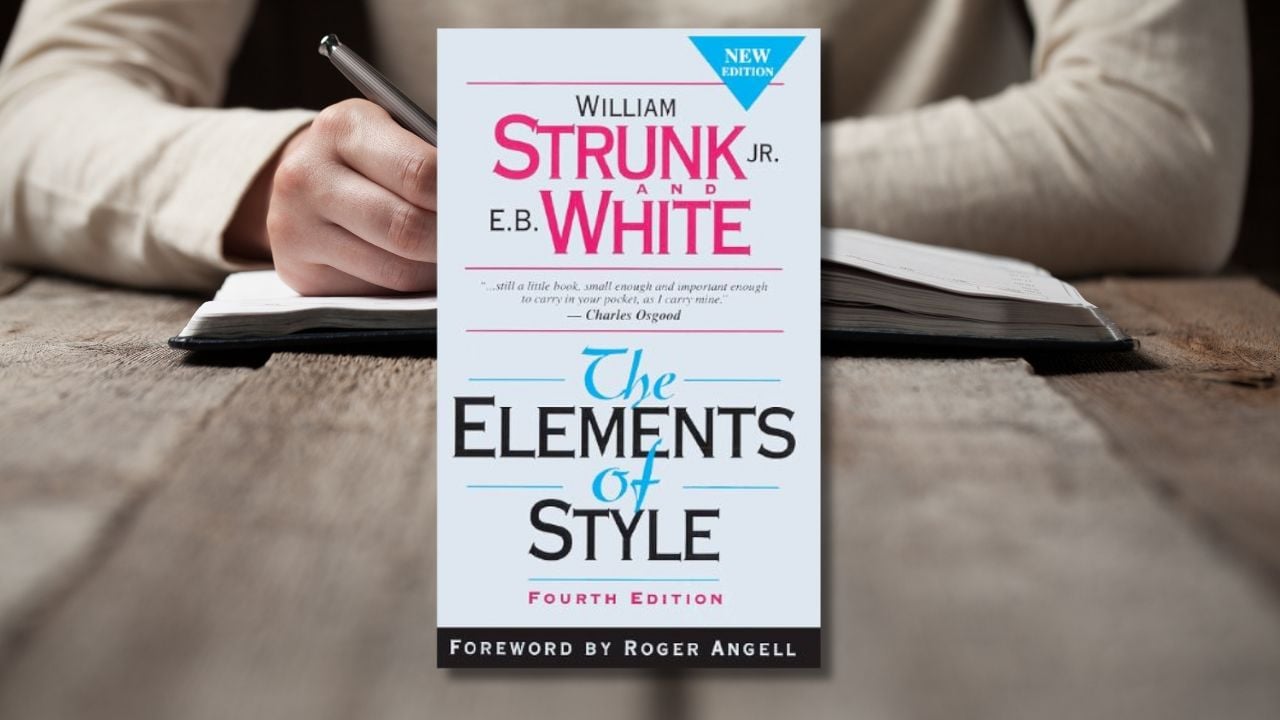
2. The Elements of Style by William Strunk Jr.
Every writer should have a style manual in their repertoire of writing books. The Elements of Style is a practical guide on writing concisely but engagingly, which every writer will benefit from. William goes over the rules of grammar and other elements of style to teach you how to write effectively in a way that captivates readers.
In this book, you’ll learn several life-changing writing tips , such as the importance of active voice, avoiding repetition, and splitting up long sentences to create a piece of writing that flows. No matter what kind of writer you are, these practical tips will guide you in writing strong, concise, and clear sentences.
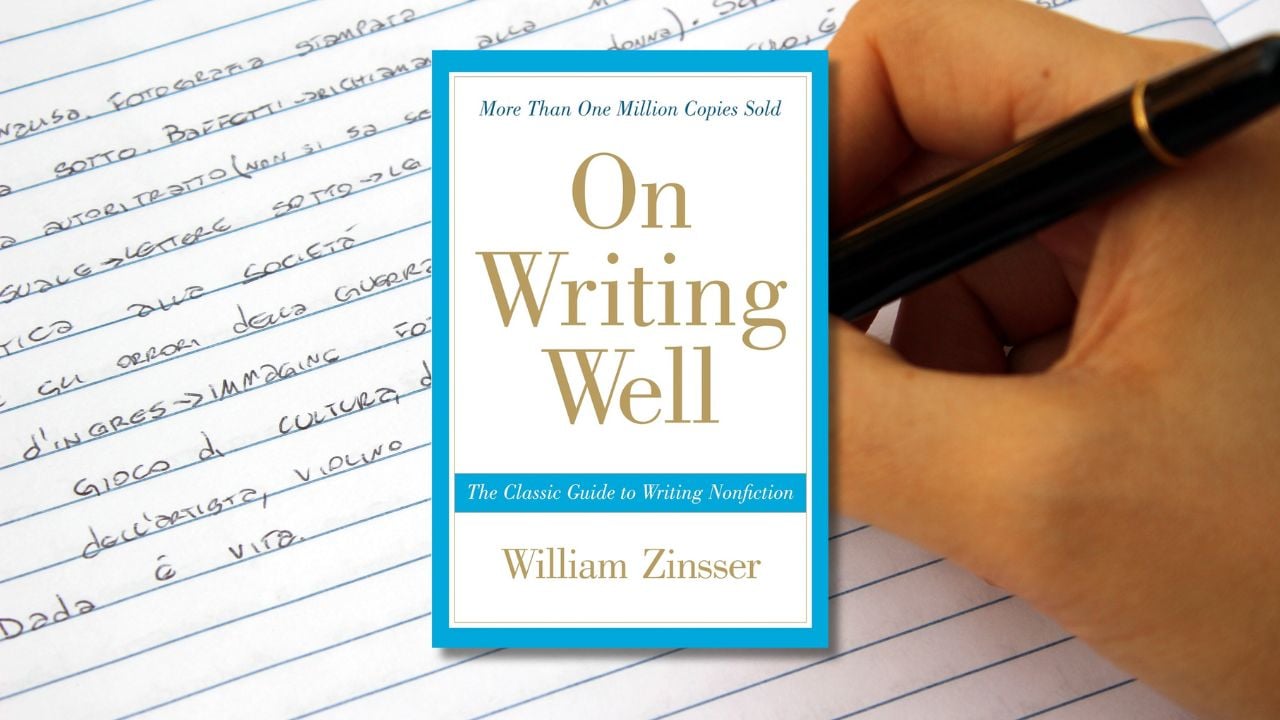
3. On Writing Well: The Classic Guide To Writing Nonfiction by William Zinsser
Do you have a novel in the works, or have always dreamt of writing a book but don’t know where to start? If so, this book by William Zinsser is for you. In On Writing Well , Zinsser offers powerful tips and fundamental principles to help you become a great writer. Regardless of the genre you write, these tips will come in handy when you start working on your first draft.
Zinsser highlights the importance of writing simply and clearly . Instead of trying to use fancy words and heavy sentences filled with overwhelming descriptions, he encourages writers to take a step back and simplify their writing. In this guide, you’ll find insightful examples to draw inspiration from and be encouraged to reflect on the mistakes you could be making as a writer.
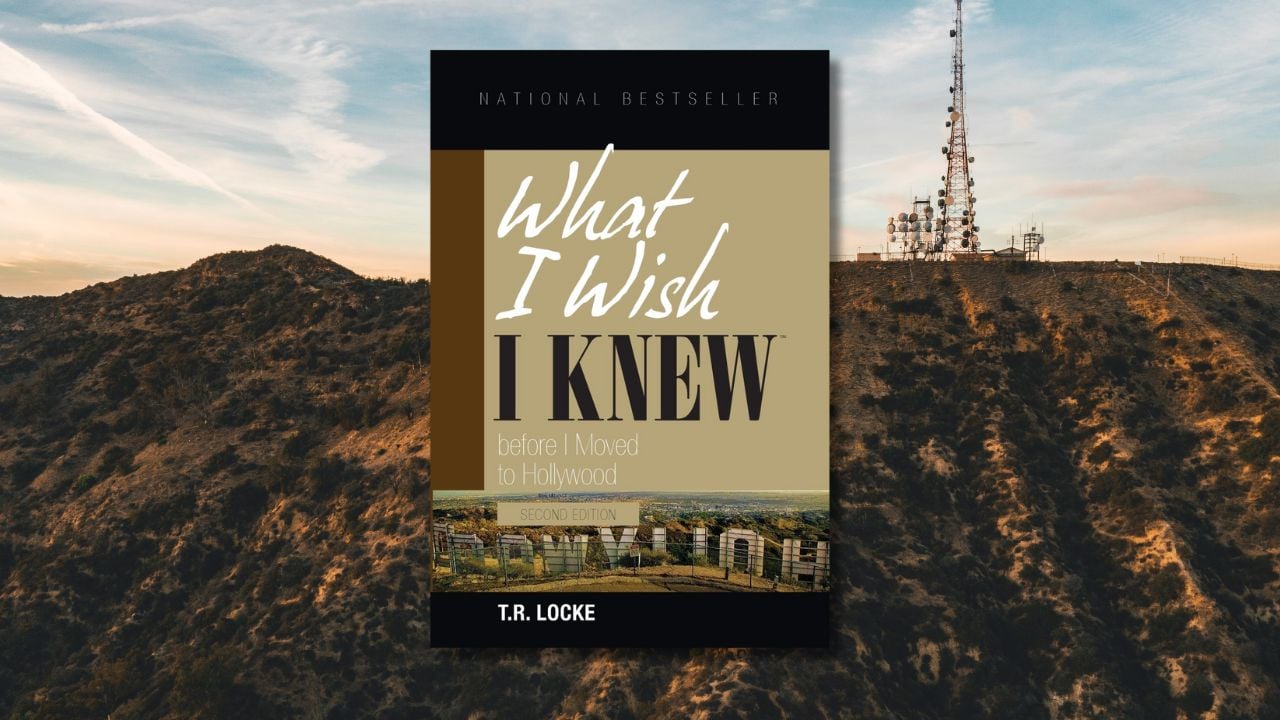
4. What I Wish I Knew Before I Moved to Hollywood by T. R. Locke
In this funny, honest memoir, T.R. Locke describes his journey of following his aspirations of being an actor and writer, which he nearly gave up on. He gives insight into how to find happiness while on the journey toward success that will motivate and inspire you. Locke reveals how he nearly left his dream behind to pursue a more stable and comfortable life and what can happen if you take a chance on your dreams.
If you enjoy reading and learning from real-life experiences, you won’t want to skip out on this book. It’s filled with experiences from real-life singers, screenwriters, directors, and TV stars that reveal the reality of chasing your dreams and working in the creative field. Whether you want to become a freelance writer or dream of writing the next blockbuster hit, you’ll find this book useful and relatable.
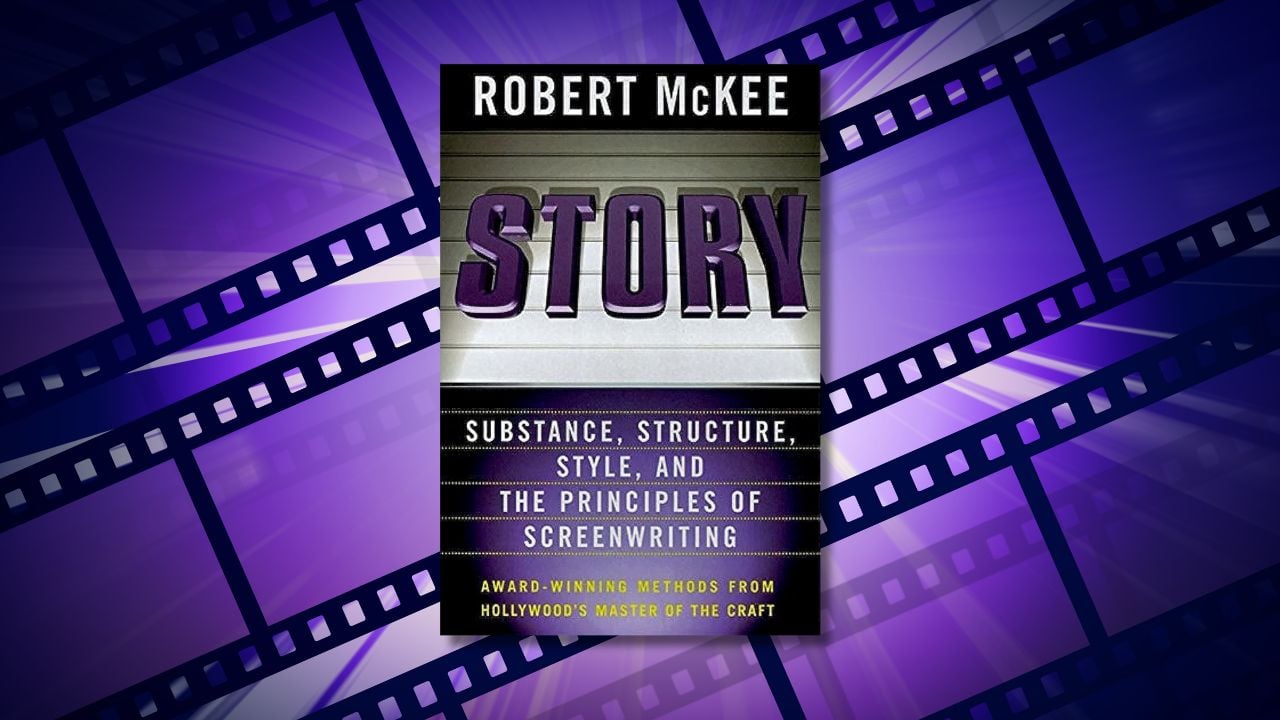
5. Story: Substance, Structure, Style, and the Principles of Screenwriting by Robert McKee
Robert McKee is an author and lecturer who holds screenwriting workshops and helps inspire screenwriters to tap into their unlocked potential. His infamous 3-day seminars are popular amongst creatives, and in this book, he shares many of the points and tips he teaches in that seminar.
He uses his years of experience to explain the fundamental principles of writing that all writers could benefit from. While the book’s title mentions screenwriting, the tips aren’t just for screenwriters but also for journalists, authors, playwrights, and non-fiction writers. As a writer in the field, you’ll learn what makes a good story and what it takes to write one.
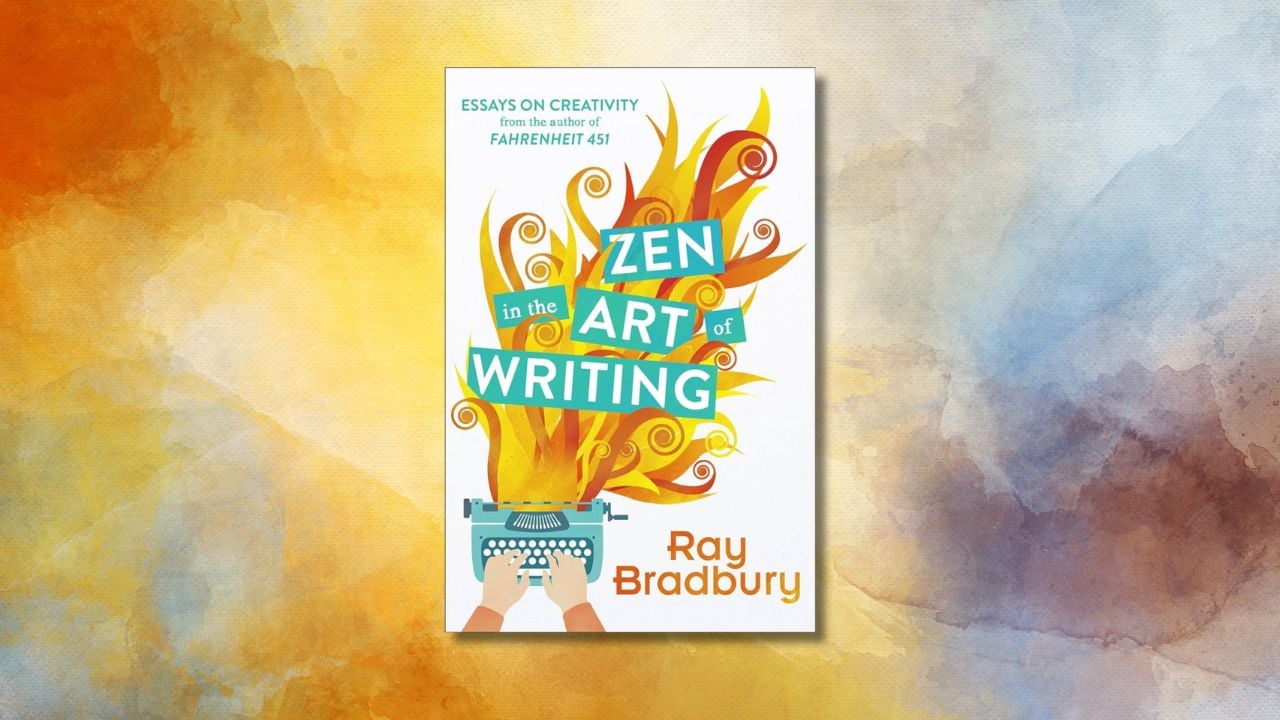
6. Zen in the Art of Writing by Ray Bradbury
This is an uplifting how-to manual for becoming a successful writer. While every writer’s story is different, there’s no denying that you will learn a powerful lesson or two from Ray Bradbury’s inspiring book. Bradbury offers encouraging words on following your instincts and embracing your unique ideas while using his career as a writer of poems, films, plays, and novels.
Bradbury is an enthusiastic dreamer who encourages you to do the same. He offers solid advice, including writing daily and constantly working on your craft. You’ll gain insight into how to create and feel confident in your voice and style as a writer, which will help you excel in your craft.
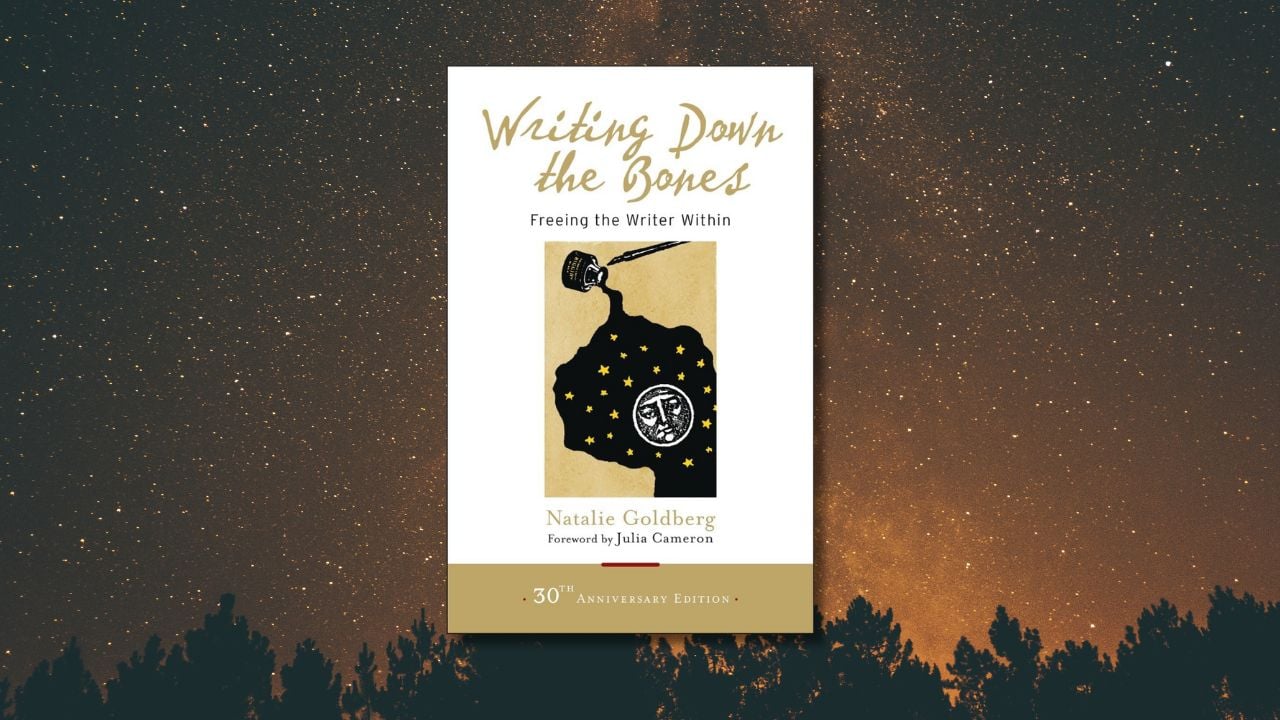
7. Writing Down the Bones: Freeing the Writer Within by Natalie Goldberg
Natalie Goldberg , a noteworthy author and speaker, blends Zen practices and the art of writing for a unique read. Goldberg believes that writing is a practice no different from meditation, and even if you don’t follow meditation or Buddhist-related practices, you can benefit from the advice in this book.
Natalie emphasizes the importance of daily practice and honing in on your craft, inspiring you to stay consistent and devoted. She touches on all aspects of writing, from getting started and not stopping (don’t cross anything out, just keep writing) to learning to be a better listener to become a better writer.
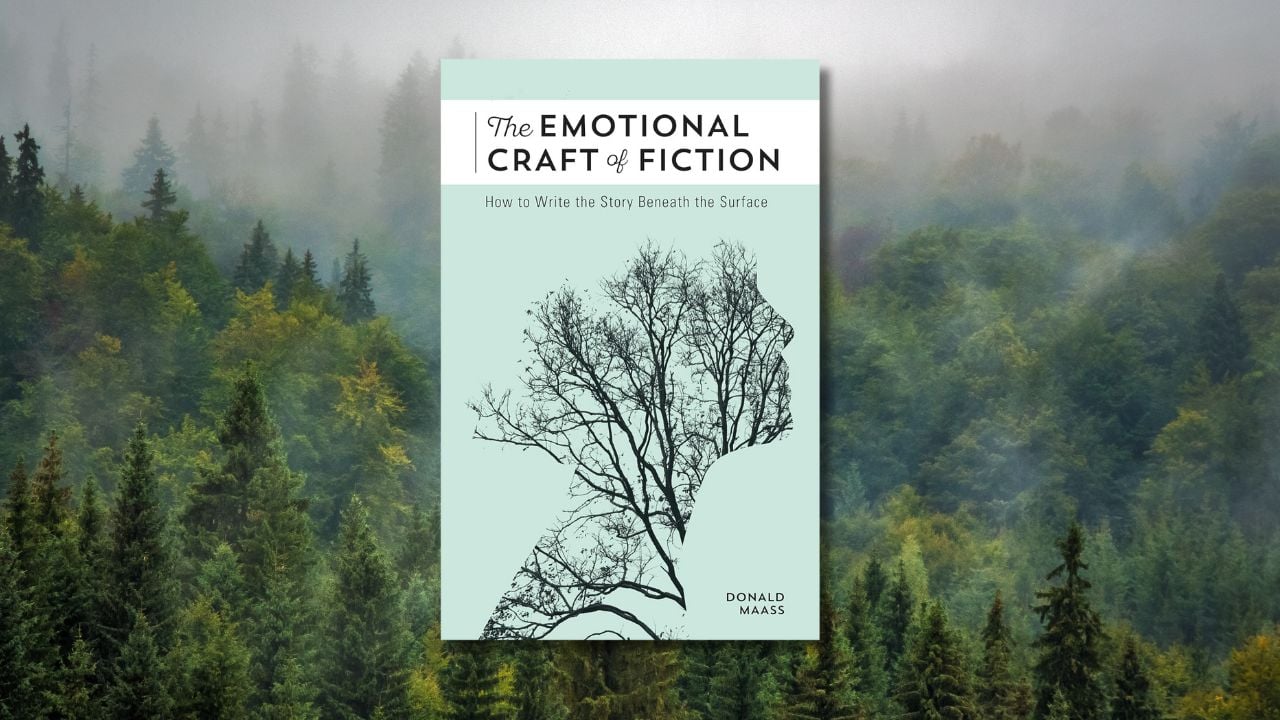
8. The Emotional Craft of Fiction: How To Write the Story Beneath the Surface by Donald Maass
Donald Maass, author of over 16 novels and a literary agent, delves into the emotional modes of writing. Writing a story can be intimidating, especially when you need help figuring out where to start.
Maass goes over the fundamentals of plot and character with emotions that translate through writing. He breaks down how you can use the plot as moments of emotional opportunity, the importance of invoking high emotions, and what makes certain stories so gripping.

9. The Modern Library Writer’s Workshop: A Guide to the Craft of Fiction by Stephen Koch
Stephen Koch , a novelist, historian, and teacher, taps into his wisdom to offer practical tips to aspiring writers. He explains the entire writing process, from a moment of inspiration to finishing your first draft. His depth of knowledge is powerful and an excellent tool for all types of writers.
If you ever feel stumped with your writing, this is the book you should reach for. Koch’s encouraging words will inspire you to pick up your pen again and start working on something new or return to that project that took the wind from your sails.
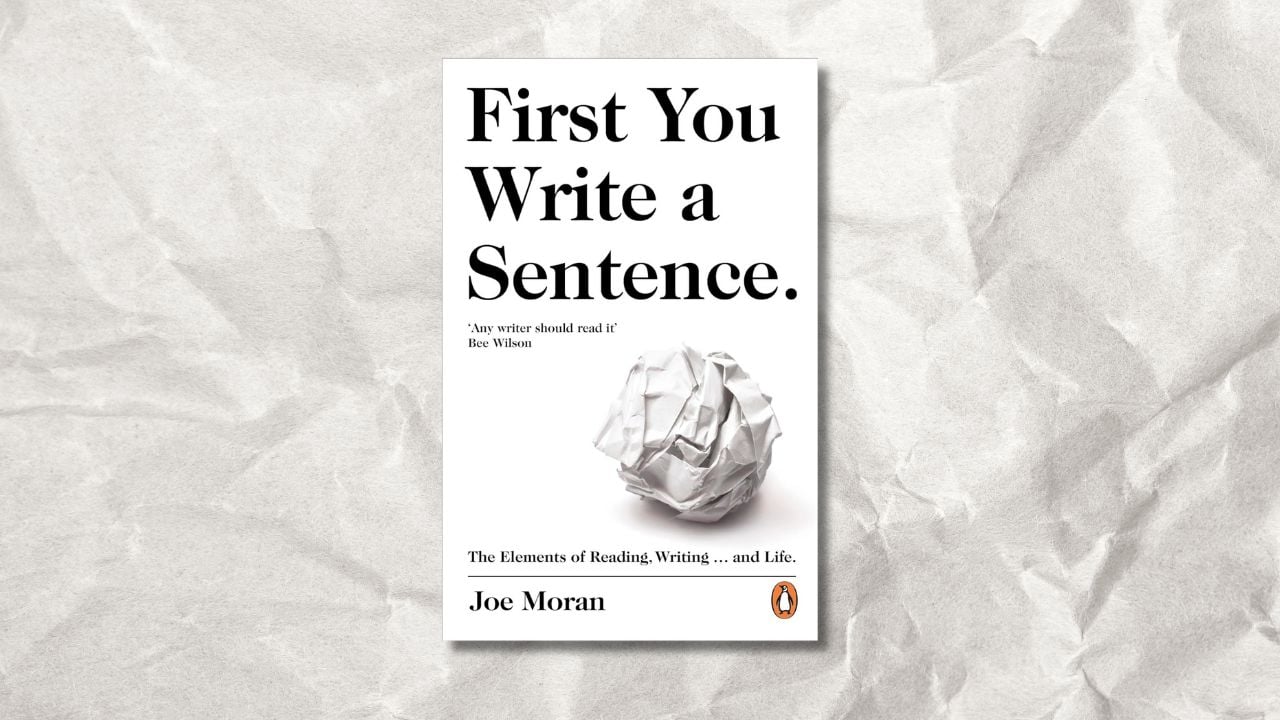
10. First You Write a Sentence.: The Elements of Reading, Writing… and Life by Joe Moran
If you’re looking for a book that gets into the nitty gritty of writing, this is it. Joe Moran provides valuable tips that are straight to the point. You’ll learn about using verbs over nouns, the art of punctuation, and how to write well-crafted, concise sentences.
Whether you’re struggling to find the right words without sounding too wordy or can’t quite grasp how to structure a proper paragraph, Moran offers his writing wisdom as an unfailing guide. He highlights the importance of using simple, ordinary words that, when used correctly, will help you craft compelling sentences that stick with your readers.
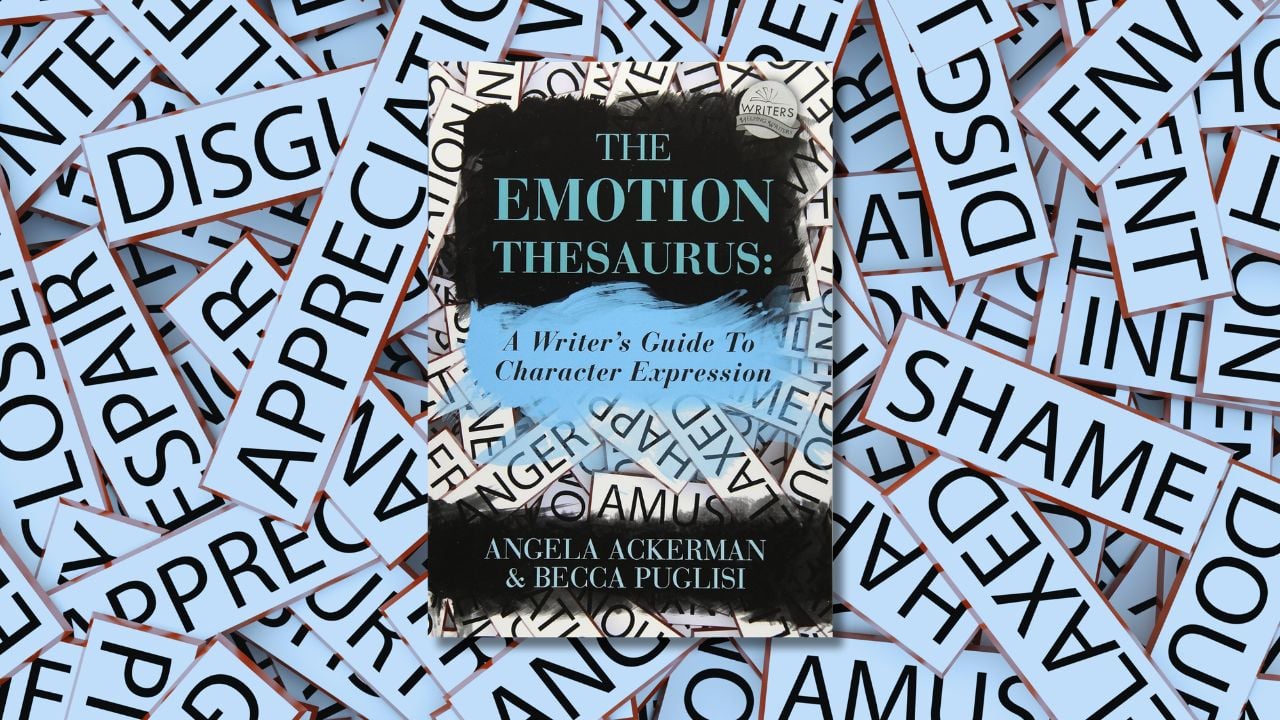
11. The Emotion Thesaurus: A Writer’s Guide to Character Expression by Angela Ackerman
Writing characters who express their emotions naturally is a momentous undertaking. If a character is unrelatable or doesn’t express emotions genuinely in a way readers can connect to, your book won’t be as successful as it can be. The Emotion Thesaurus helps writers convey real emotions through their characters in a way that doesn’t seem forced or exaggerated.
In this guide, Ackerman explains the importance of natural body language cues, emotion intensity, emotion-related writing challenges, and how to overcome those challenges. If you’re having trouble portraying genuine, raw emotion through your characters, this book will inspire you to move past that mental block and create characters your readers enjoy reading about.

12. The Science of Storytelling by Will Storr
Stories shape who we are and how we see the world, and they are vital to our identity. Author and journalist Will Storr will teach you how to master the art of storytelling and take your readers on a journey they won’t forget.
Storr’s scientific approach to delving deep into what makes stories tick is what sets this book apart from the rest. He uses psychological research and neuroscience to explain how to craft compelling stories that touch those who read them, which you, as a writer, can use to inspire your craft.
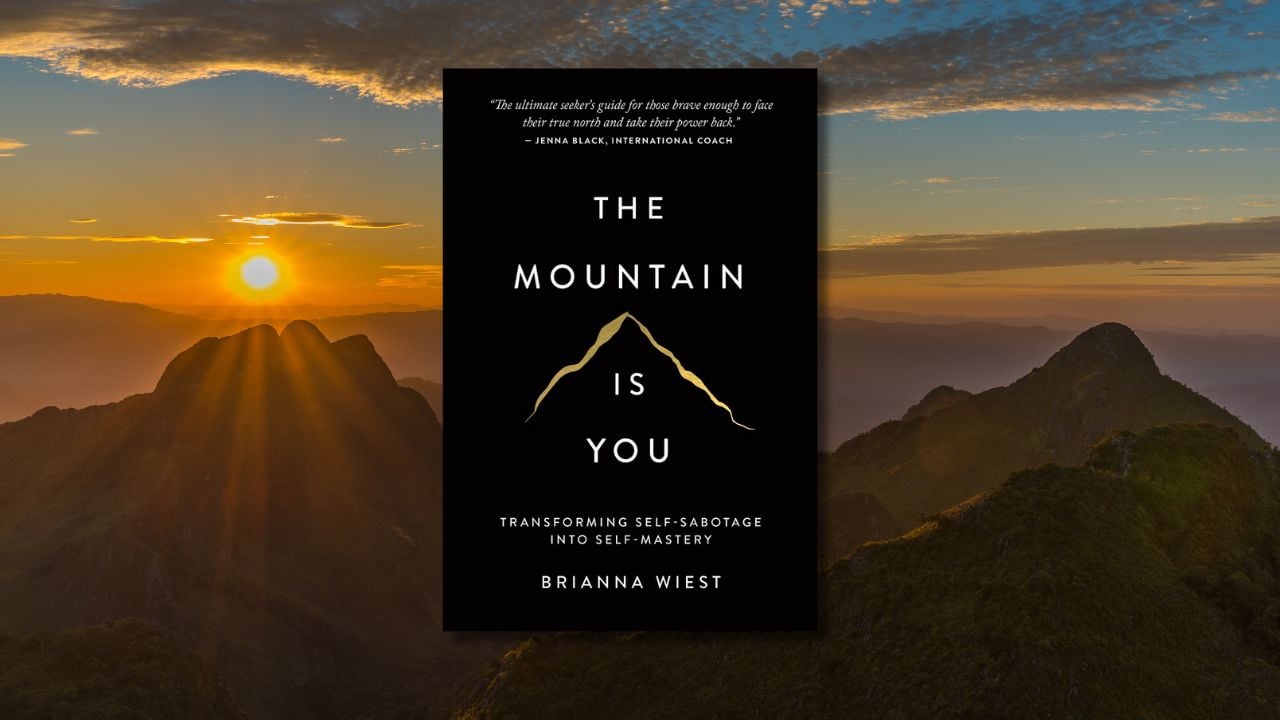
13. The Mountain Is You: Transforming Self-Sabotage Into Self-Mastery by Brianna West
Writers are often their worst critics, with many constantly dealing with self-doubt and imposter syndrome. The Mountain Is You looks deeper at self-sabotage, why we do it, and how to stop resisting change and the unknown. If you feel like you’re facing a mental block in your career or limiting self-beliefs stopping you from taking risks, this book is for you.
West explains how the hardest obstacles we face are often caused by ourselves and how breaking free of certain patterns can open up potentially life-changing opportunities. While the book is not exclusively for writers, it’ll teach those in the profession how to step out of their way, do the necessary internal work, and build the resilience to reach their true potential.
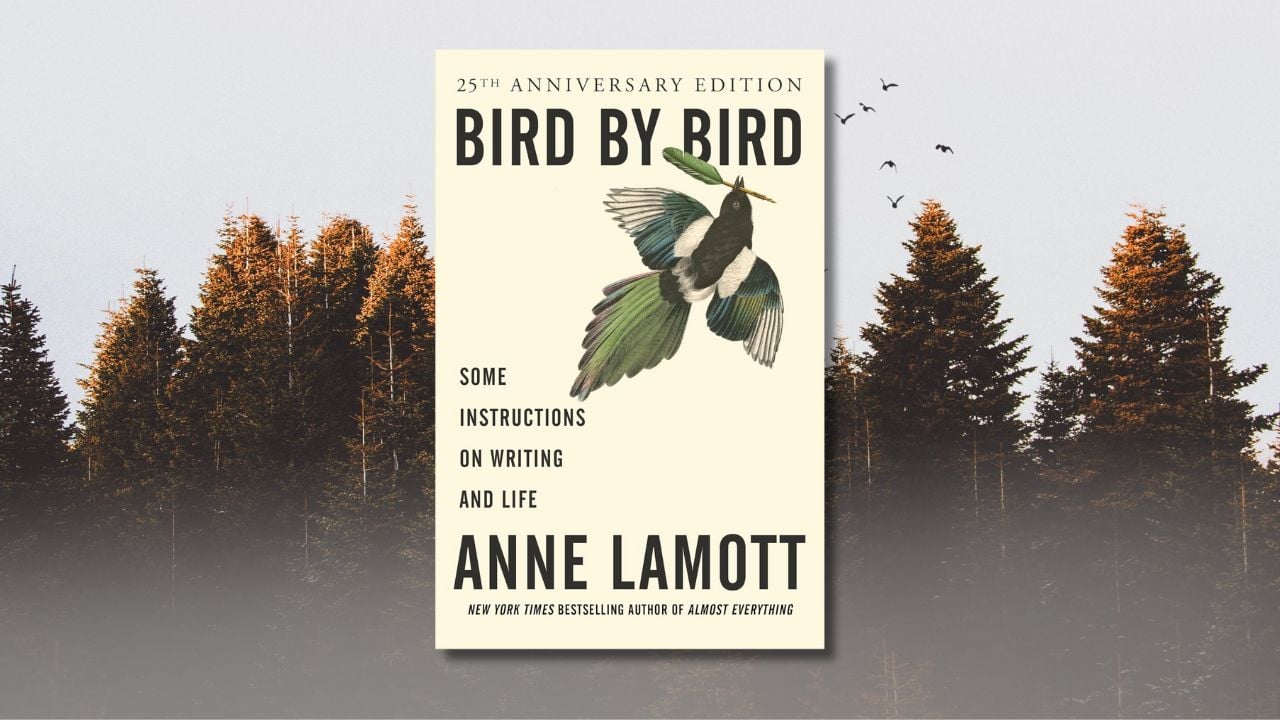
14. Bird by Bird by Anne Lamott
Whether you’re crafting an essay or working on a new novel, writing can be overwhelming at the start. Anne Lamott provides a step-by-step guide for successfully navigating the writing process in this book. She uses her sense of humor and honesty but doesn’t shy away from the darkness and the difficult challenges of life and writing.
In this book, you’ll learn about the various parts of the storytelling process, including not-so-great first drafts, characters, dialogue, and knowing when you’re finished. It also tackles the obstacles of writer’s block and publication, which she explains with her quick sense of humor for a light and helpful read.
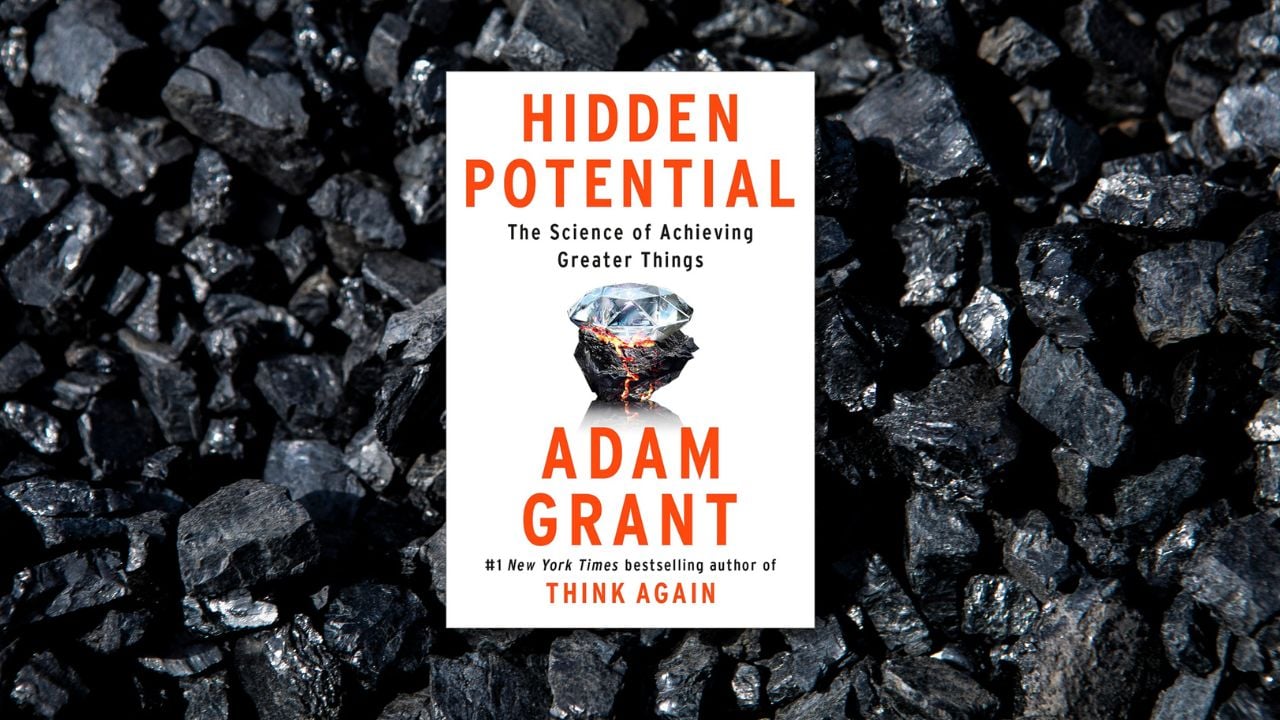
15. Hidden Potential: The Science of Achieving Greater Things by Adam Grant
All writers can use this powerful personal development book as a tool in their careers. This compelling book by Adam Grant , an American author and professor, explores society’s fascination with high achievers and those born with talent while overlooking the journey some of us must take to be great.
One of the reasons this book is so inspiring for writers is because it explores how talent can be developed with the proper practices. Writers are constantly working on their craft and improving their writing skills, and Grant expresses just how good we can become through consistent practice. The book explores the importance of growth, strength of character, and the ability to learn as ways to help writers pursue their potential.

16. Into the Woods: A Five-Act Journey Into Story by John Yorke
Have you ever wondered why we write stories and what makes us so enthralled with them? John Yorke is a British television producer and script editor fascinated with stories and why we tell them. In Into The Woods , Yorke looks at the greats and their ideas of what’s behind the art of storytelling, including Aristotle, Gustav Freytag, and Charlie Kaufman, to name a few.
In Into The Woods, you’ll learn about the structure of a narrative and how to make readers gravitate towards yours. Yorke uses relatable examples from expert screenwriters and their methods to show you the different methods you can use to make your story a literary masterpiece.

17. Still Writing: The Perils and Pleasures of a Creative Life by Dani Shapiro
This profound and honest memoir by Dani Shapiro explores the life of a creative person. She fuses meditation and writing advice to provide thought-provoking tips for writers who are at the beginning of their craft or those who need to remember why they started writing to begin with.
What many readers love about this book is the intimacy with which Shapiro explains the writing process and how she expresses that, as writers, many of us feel the same way throughout our journeys while feeling alone. If you need inspiration to continue your writing journey, this book will give you that boost of motivation you’ve been missing. It’ll remind you why you started and why it’s important to keep going.
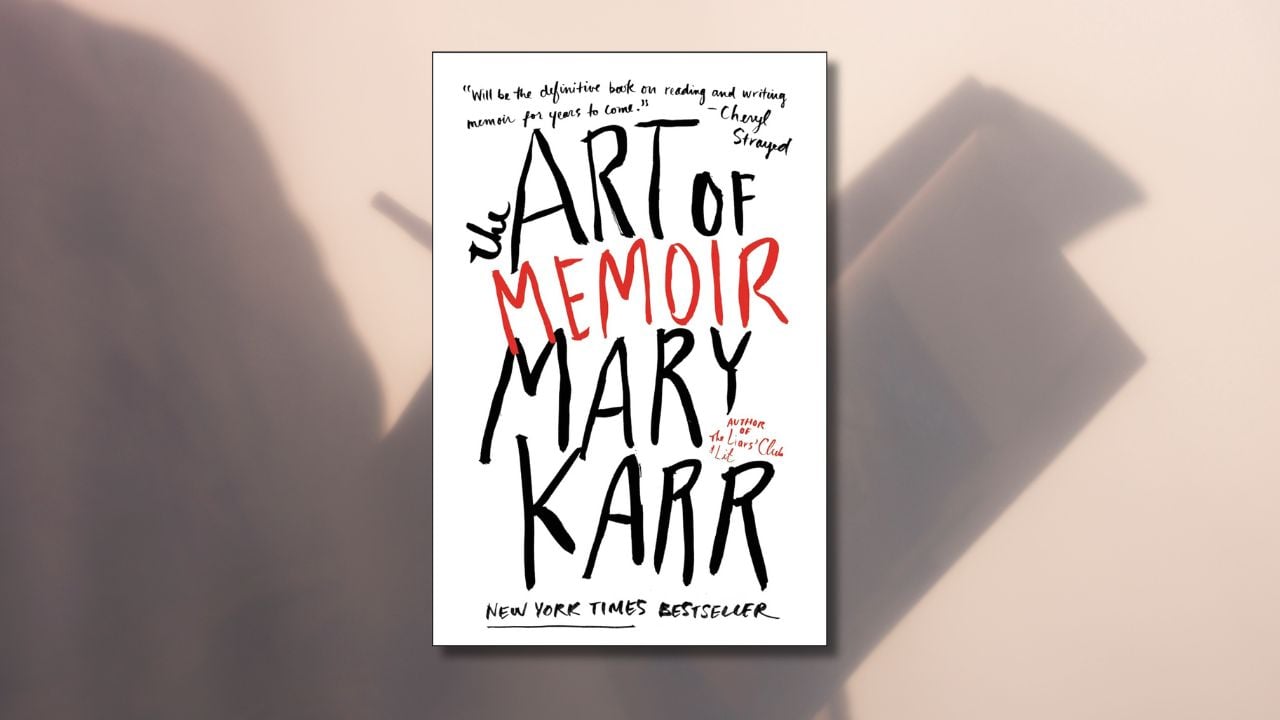
18. The Art of Memoir by Mary Karr
Author Mary Karr explores the art of writing a memoir and shares her experience of navigating life as a creative. The Art of Memoir features excerpts from her favorite memoirs and bits from other writers who share their real career experiences, which is always refreshing and inspiring to read as a fellow writer.
Karr breaks down her writing process and the vital elements of a great literary memoir. In this captivating read, you’ll learn how to use your memories of the past to dig deep and create a piece of writing that resonates with readers.
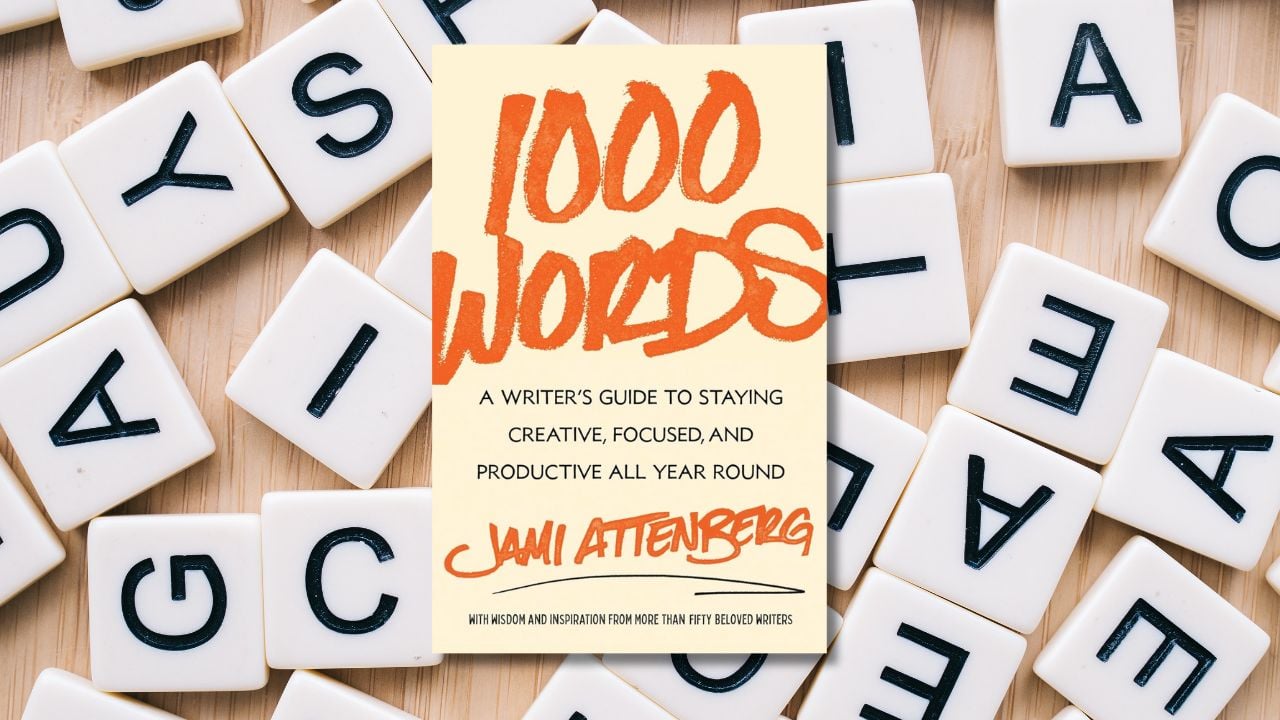
19. 1000 Words: A Writer’s Guide To Staying Creative, Focused, and Productive All Year Round by Jami Attenberg
1000 Words is packed with insightful writing, creativity, and productivity essays. After facing a looming deadline she was dreading, Jami Attenberg started writing 1,000 words daily for two weeks and then shared her process online with the world. Soon after, thousands of people joined in, and it became a movement under #1000WordsofSummer.
In this writer’s guide, Attenberg will teach you to write without fear or judgment and overcome the dreaded writer’s block, even when writing is the last thing on your mind. She provides you with strategies to use to create a writing plan for yourself throughout the year so that even when you lose steam, you’ll have something to fall back on.
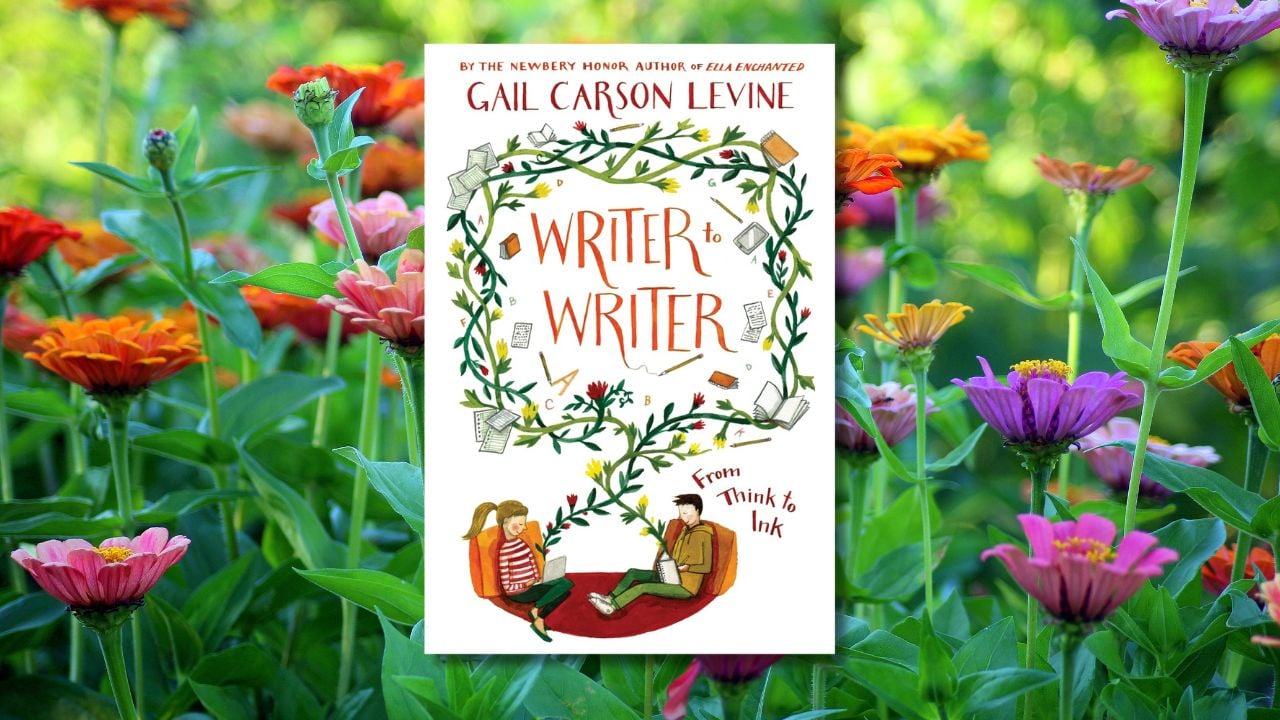
20. Writer to Writer: From Think to Ink by Gail Carson Levine
Gail Carson Levine , a bestselling author, shares insider tips and tricks for writing captivating prose. She delves into how to bring a story to life by revealing her vast writing knowledge and experience, which all writers can benefit from.
Whether you’re working on a new novel, poetry, or writing just for the sake of it, Levine reveals her knowledge of what it takes to make a story come to life. From alluring characters to crafting an unforgettable opening, you’ll learn the essential aspects of an enthralling story. She also answers readers’ questions from her blog to provide relevant and relatable advice. This book is an excellent tool for new writers struggling at the beginning of their careers and veterans needing a refresher on their skills.
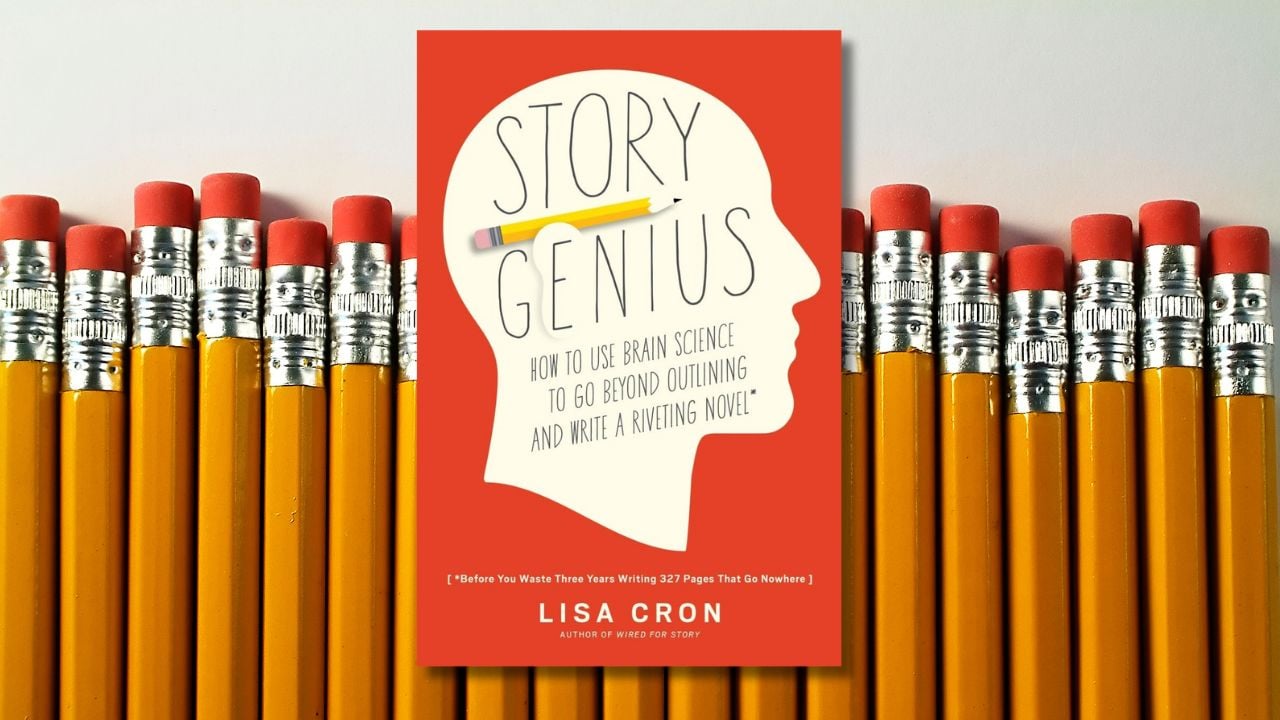
21. Story Genius: How To Use Brain Science To Go Beyond Outlining and Write a Riveting Novel by Lisa Cron
This writing guide explains what makes a story riveting and how you can write your own. Lisa Cron examines the science behind what our brains crave in a story and how to use that to create a literary masterpiece.
Cron has a few useful tips for you if you’ve ever poured hours of hard work into a piece only to read through it and feel underwhelmed. She explains that winging it and focusing strictly on the plot are two strategies bound to fail. She offers an alternative you’ll want to try instead. Follow Cron on her step-by-step journey to creating a gripping story your readers won’t forget.
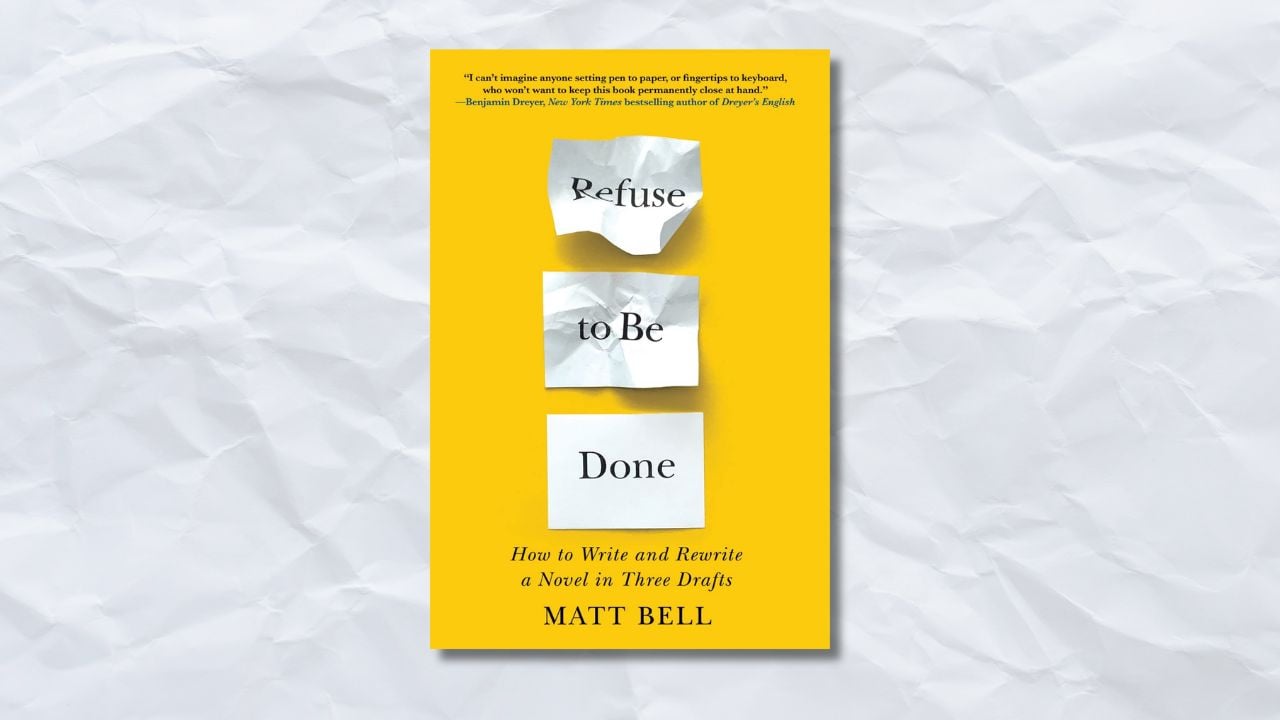
22. Refuse To Be Done: How To Write and Rewrite a Novel in Three Drafts by Matt Bell
Have you ever spent hours writing a novel, article, or piece of work, only to skim through it in a mere few minutes during the editing and rewriting process? In this book , writer and teacher Matt Bell explains why we should focus more on rewriting techniques and tasks , as it’s an overlooked process.
Refuse To Be Done guides you through the writing and editing process, from jotting down ideas to crafting a completed draft. You’ll learn about Bell’s most vital writing tasks and techniques, which you can use to rewrite your novel in three drafts. Regardless of whether you’re a veteran writer or new to writing, there are plenty of valuable takeaways for you to use in this guide.
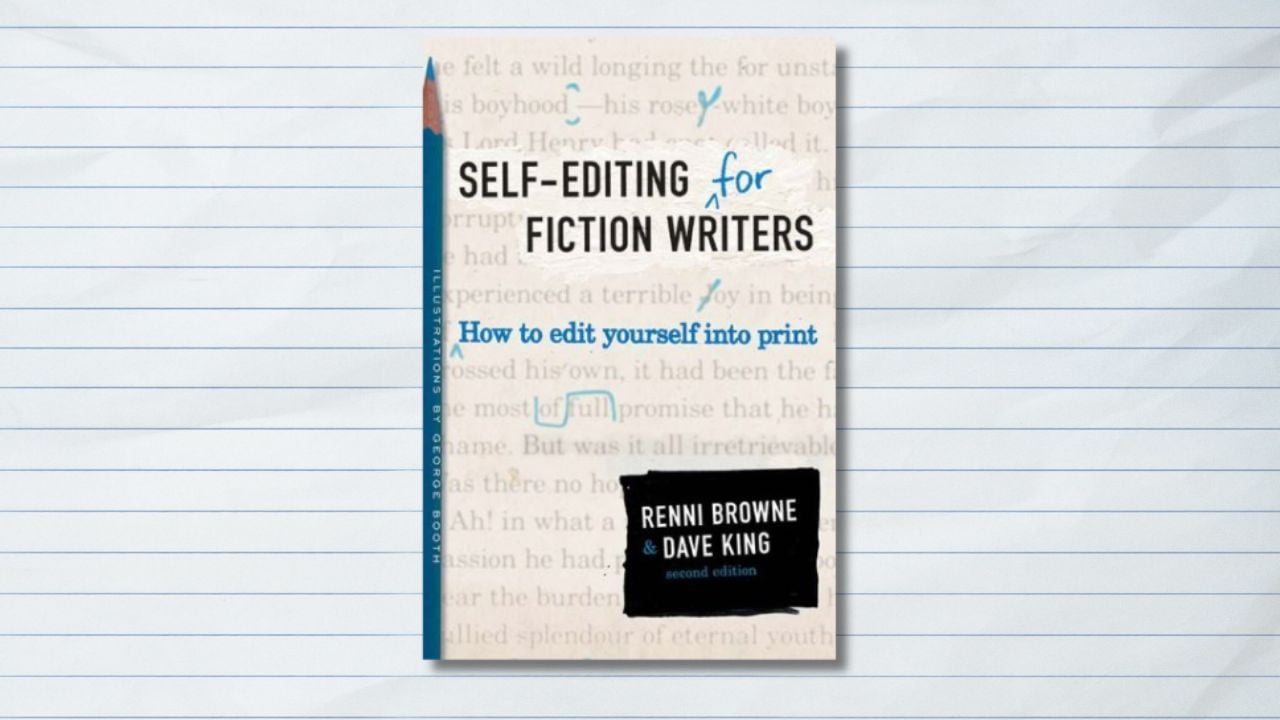
23. Self-Editing for Fiction Writers: How To Edit Yourself Into Print by Renni Browne and Dave King
Do you struggle to edit your writing effectively? Editing is no easy process, and it can often seem daunting and overwhelming, especially when it’s your work. In this book, Dave King and Renni Browne offer powerful editing techniques to revamp your work for a flawless finished piece.
Browne and King include techniques they created and use helpful examples from books they edited to show how an editor would go through your work. You’ll learn about the mistakes every writer should avoid, which may leave you surprised to find what you could be guilty of.
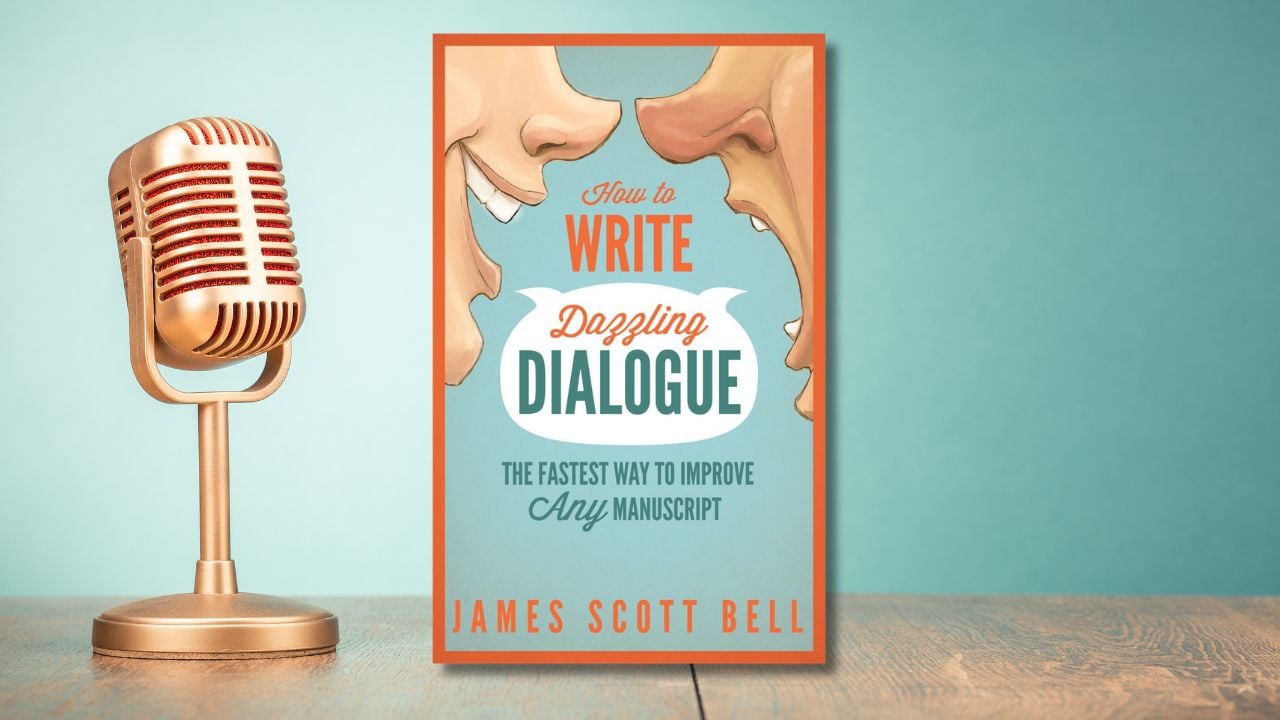
24. How To Write Dazzling Dialogue: The Fastest Way To Improve Any Manuscript by James Scott Bell
Have you ever read a story and gotten completely lost in a conversation between characters? If so, that’s an example of masterful dialogue, something that all writers want to nail in their writing. Getting the plot right is challenging, but the dialogue can make or break your book.
Your dialogue can lose the reader’s attention or draw them in, which is why How to Write Dazzling Dialogue by James Scott Bell is a gem for writers. It explores writers’ top issues with dialogue, how to avoid them, how to improve your dialogue, and all the tools you need to craft compelling dialogue readers want to read. Bell also provides examples from published books and screenplays to see what mesmerizing dialogue sounds like.
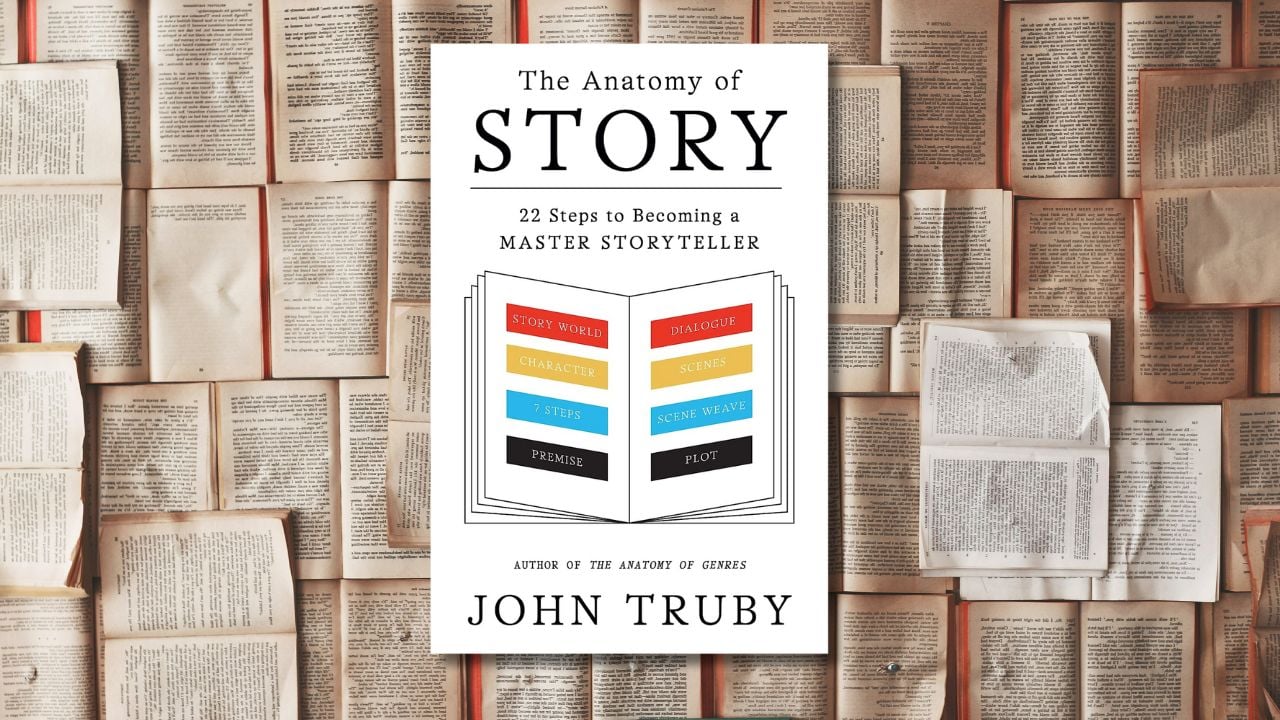
25. The Anatomy of Story: 22 Steps To Becoming a Master Storyteller by John Truby
John Truby is an American screenwriter, teacher, author, story consultant, and director. He has an impressive list of students who have gone on to write blockbuster hit scripts, including Scream, Shrek, and Sleepless in Seattle. In The Anatomy of Story, Truby shares the valuable wisdom he so often imparts in his classes to help writers write an effective narrative.
He explores how writers can use their experiences to create captivating stories and heroes who grow meaningfully throughout the story. You’ll learn the techniques needed to create characters readers relate to and care for, which will move your audience.

Read More From Wealth of Geeks
- Culinary Pitfalls: 25 Chain Restaurants Food Enthusiasts Can’t Stand
- 13 Modern Taboos That Used To Be Normal
More for You
20 TV characters who died because the actor who played them died in real life
Ukrainian soldiers destroy Russian Tu-22M3 bomber: Weaponry used revealed
55 Easy Graduation Desserts Worth Celebrating
The Coolest Car From the Year You Were Born (1945-1995)
Patrick Mahomes explains why he may not play in the NFL for as long as Tom Brady
7 CDs You Probably Owned, Threw Out and Now Are Worth Bank
Jennifer Lawrence hopes film pressures Government to ‘hold Taliban accountable’
IRS Announces Refund Increase to Taxpayers
Space Rock Slammed Into Moon - The Explosion Was Seen From Japan
Early forecast says summer 2024 is set to be unusually hot across most of USA
98 Recipes Using 1 Pound of Ground Beef
Dr Pepper Has a New Flavor Hitting Shelves Now
Stunning AI trailer imagining Henry Cavill as James Bond racks up millions of views
Tech trick: How to tell who’s calling when you don’t recognize the phone number
Dickey Betts cause of death: What did the co-founder and legendary Allman Brothers Band guitarist die of?
Tesla sends some laid-off workers new severance offers after Elon Musk said some were 'incorrectly low' the first time
Samantha Davis, Actress and Co-Founder of Little People U.K. With Husband Warwick Davis, Dies at 53
16 Popular Pizza Chains, Ranked Worst to Best
The Only Way You Should Store Cream Cheese, According to Philadelphia
NFL Draft News: Jayden Daniels' Representation Reportedly Upset After Commanders Meeting
Who is Bob Graham? Here’s what to know about the former Florida governor and senator

Former two-term Florida governor and three-term U.S. Sen. Bob Graham died Tuesday . He was 87.
Graham, who died of old age with his wife, Adele, and their family by his side in a retirement community in Gainesville, was celebrated for his "common man" approach to governing and his regular "work days" spending an entire day each month working different ordinary jobs with the press kept away.
Who is Senator Bob Graham?
You could say education and politics were in his blood. Daniel Robert Graham was born in Coral Gables on Nov. 9, 1936, the son of a schoolteacher (Hilda Elizabeth Simmons) and a Florida state senator, mining engineer and dairy farmer (Ernest "Cap" Graham).
Just barely, though. Ernest Graham was elected to the first of his two four-year terms just six days before Bob was born. Back at the cattle and dairy farm, Graham grew up raising livestock.
Bob Graham attended Miami Senior High School and received a bachelor's degree in 1959 in political science from the University of Florida and a Bachelor of Laws from Harvard Law School in 1962. He moved back to Miami and went into real estate development law just as Florida was experiencing another land boom.
While at UF, he met Adele Khoury and they married in 1959. Bob and Adele Graham, who also became a teacher, have four daughters.
Was Bob Graham a Florida Senator?
Graham, a Democrat, was a member of the Florida House of Representatives first, elected in 1966 to represent Dade County.
In 1970, he moved to the state Senate and was re-elected in 1972 and 1976. During his time, he chaired an education committee but turned down a potential appointment as Education Commissioner under then-Gov. Reubin Askew because he had bigger plans.
Was Bob Graham a Florida governor?
Graham, a relatively unknown candidate, won the governor's race in 1978 through nonstop campaigning and positioning himself, a rich, Harvard-educated lawyer, as a working man with his habit of working 8-hour days at different everyday jobs to meet constituents and get a better idea of what they did.
“Graham used the campaign for governor to radically change his persona from D. Robert Graham, button-downed Harvard lawyer and millionaire dairy farmer and land developer, to folksy, down-home ‘Bob,’ “ history professor Steven G. Noll wrote in "The Governors of Florida."
It worked. He won, and four years later he won again with a massive margin — nearly 800,000 votes — that no one has touched since.
What were Bob Graham's 'working days'?
When he was in the Senate, Graham talked to a frustrated teacher who said no one on his education committee had any experience in education. She arranged for him to teach a semester of civics at Carol City Senior High in Miami.
During his gubernatorial campaign, Graham worked at 100 different jobs across the state , carrying luggage, fishing for lobsters, picking tomatoes, shrimping, serving tables, cutting hair, picking up trash, paving roads, plumbing, and more. He was a social worker, he rode along with police, and he spent two days as a temporary worker and applied for food stamps. His last job, before the election, was housewife.
After his election, he continued the practice as governor and U.S. Senator, working Floridian's jobs one day a month. He always trained beforehand, worked an entire shift, kept the press away for all of it except a very limited portion, and did every part of the job. Ultimately, according to floridamemory.com , he worked 921 jobs in over 109 cities and five states.
What did Bob Graham do as governor of Florida?
During his two terms as Florida's 38th governor, Bob Graham was known for :
- Focusing on improving state universities, lowering class sizes, increasing teacher salaries and raising per-pupil spending from 21st to 13th in the country.
- Launching the largest environmental protection program in Florida history, bringing thousands of environmentally important lands under state control and establishing the Save the Everglades program.
- Working to improve the state's economy, which added 1.2 million jobs during his tenure, many of them in high-tech manufacturing.
- Expanding childcare and abuse prevention programs and service programs for the eldery.
- Presiding over 16 executions, including the first one in modern times.
- Working to get an anti-gay amendment declared unconstitutional.
- Activating 1,800 National Guard troops to move fuel during a trucker strike.
- Proposing the winning design for the collapsed Sunshine Skyway Bridge.
What is the Bob Graham Sunshine Skyway Bridge?
Decades before a container ship smacked into a Baltimore bridge and brought it down, part of the Sunshine Skyway Bridge over Tampa Bay collapsed in 1980 when a freighter hit a support column. Several cars and a Greyhound bus plunged into the water and 35 people were killed.
Graham's suggestion of building a cable-stayed bridge that was twice as wide won out. The design seemed to be sound: on the day before the original grand opening date in 1987, a shrimp boat struck the new bridge's protective bumpers without damage to the bridge.
While most residents just call it the Skyway, the official name is the Bob Graham Sunshine Skyway Bridge.
Was Bob Graham a U.S. Senator?
Graham's popularity got him into the U.S. Senate in 1986. where he served for 18 years. He became known as a consensus builder and an expert on both domestic issues like environmentalism and Everglades restoration but also foreign policy. He also continued working to improve education, authoring a bill to require testing for competency and progress in public schools.
He served 10 years on the Senate Intelligence Committee and was the chairman during 9/11. where he led investigations of the terror attacks. He was an outspoken critic of the Saudi government but voted against authorizing the invasion of Iraq, which he considered a distraction . Graham also was a primary author of the USA Patriot Act.
Who is Gwen Graham?
Gwen Graham , one of Bob and Adele's daughters, followed him into politics. She represented a 14-county North Florida Congressional district (which included Tallahassee) from 2015 to 2017, but chose not to seek a second term after redistricting made her district mostly Republican.
Instead, she ran for governor in 2018, ultimately losing to Ron DeSantis. In 2021, President Joe Biden named her to an advisory position in the Department of Education.
She's not the only famous Graham. Among Bob Graham's family, there's also:
- Philip Graham : Bob's half-brother, he was publisher and co-owner of The Washington Post and its parent company.
- Katherine Graham: Bob's sister-in-law and the first female publisher of a major American newspaper (The Washington Post) and the first woman elected to the board of the Associated Press.
The Grahams have four daughters: Gwen Graham, Cissy McCullough, Suzanna Gibson and Kendall Elias.
Did Bob Graham run for president?
Graham was often considered as a Vice President nominee and ran for the Democratic nomination in the 2004 presidential race, but he dropped out before the primaries a few months after he underwent heart surgery. He retired from the Senate in 2005.
In so doing, he also maintained his record: in his entire political career , Bob Graham never lost an election.
After his retirement, Graham spent a year at Harvard teaching citizenship and writing his first book, "America, the Owners Manual." He then established the Bob Graham Center for Public Service at the University of Florida "to create a community of students, scholars, and citizens who share a commitment to revitalizing the civic culture of Florida and the nation," according to the center's website.
Did Bob Graham write a book?
He wrote several.
- “ America: The Owner’s Manual " : A book about how the government works, for young readers.
- “ Intelligence Matters ": His account of his work with the Senate Intelligence Committee.
- “ Keys to the Kingdom ": A fiction novel about the Middle East.
- “ Rhoda the Alligator ”: A children's book based on stories he told his grandchildren.
Pizza and Politics with Danielle Allen

Description
Join us for a Pizza and Politics featuring Danielle Allen , James Bryant Conant University Professor at Harvard University and Director of the Allen Lab for Democracy Renovation at Harvard Kennedy School. IOP student leader Kiersten Hash will be moderating the conversation.
About Danielle Allen Danielle Allen is James Bryant Conant University Professor and Director of the Edmond and Lily Safra Center for Ethics. She is a professor of political philosophy, ethics, and public policy. She is also a seasoned nonprofit leader, democracy advocate, national voice on pandemic response, distinguished author, and mom.
Danielle’s work to make the world better for young people has taken her from teaching college and leading a $60 million university division to driving change at the helm of a $6 billion foundation, writing as a national opinion columnist, advocating for cannabis legalization, democracy reform, and civic education, and most recently, to running for governor of Massachusetts. During the height of COVID in 2020, Danielle’s leadership in rallying coalitions and building solutions resulted in the country’s first-ever Roadmap to Pandemic Resilience; her policies were adopted in federal legislation and a presidential executive order.
Danielle made history as the first Black woman ever to run for statewide office in Massachusetts. A past chair of the Mellon Foundation and Pulitzer Prize Board, she is a member of the American Academy of Arts and Sciences. As a scholar, she currently concentrates on the Democratic Knowledge Project (https://www.democraticknowledgeproject.org/), housed at the Safra Center, and on the Democracy Renovation Project, housed at Harvard’s Ash Center. In her role as board chair for Partners In Democracy, she continues to advocate for democracy reform to create greater voice and access in our democracy, and drive progress towards a new social contract that serves and includes us all. She also serves on the board of the Cambridge Health Alliance.
Her many books include the widely acclaimed Our Declaration: a reading of the Declaration of Independence in defense of equality; Cuz: The Life and Times of Michael A.; Democracy in the Time of Coronavirus; and the forthcoming Justice by Means of Democracy. She writes a column on constitutional democracy for the Washington Post.
Accessibility
The IOP encourages persons with disabilities to participate in our programs. If you have questions about accommodations or the physical access provided, please contact 617-495-1360 or [email protected] in advance of the event.
Event Details
RSVP with a valid Harvard email address Date: Friday, April 26, 2024 Time: 12:15pm EST Where: Littauer 163, Harvard Kennedy School Register Here
Find More IOP Events

UPSC CSE 2023: Parvathy Gopakumar Secures 282nd Rank Despite Disability; Practiced with Handwriting Books
Curated By : Suramya Sunilraj
Last Updated: April 19, 2024, 15:38 IST
Kerala, India

Parvathy's journey is one of many motivating stories among UPSC applicants (Representational/ PTI Photo)
Though she still struggles with writing as quickly as she would like, Parvathy managed to land the 282nd rank in the highly competitive Civil Services test on her second attempt
Among the numerous success stories of UPSC candidates, Parvathy Gopakumar from Alappuzha, Kerala, stands out as a prime example of perseverance, willpower, and the rewards of hard work. Parvathy, who ranked 282nd in the UPSC Civil Services Exam 2023, was determined to achieve her goals no matter what came her way.
Hailing from Ambalapuzha, her journey to success is a narrative of overcoming adversity. Despite losing her right hand in a devastating bike accident while she was in class 7, she went on a remarkable path of adaptability and resilience, as reported by manorama.com.
This could have easily become a hurdle that could have derailed Parvathy’s dreams. However, according to manorama.com, shortly after this incident she began training herself to write with her left hand by practicing cursive writing with the help of handwriting books for LKG students. Though she still struggles with writing as quickly as she would like, Parvathy managed to land the 282nd rank in the highly competitive Civil Services test on her second attempt.
Parvathy chose Humanities in her eleventh and twelfth grades, going against what was expected of a bright student like herself. This choice finally paid off as she aced the Civil Services test.
Parvathy’s father is Gopakumar, a Deputy Tahsildar in the Revenue Department while her mother Sreekala, is a high school teacher.
Sreekala, Parvathy’s mother, was reported by manorama.com as saying that her daughter was “set for big things in life,” and her incredible achievement has now validated that belief.
Parvathy’s journey is one of many motivating stories among UPSC applicants. Similarly, Sandeep Kumar, hailing from the Naxal-affected area of Dumaria Block in Gaya, Bihar, brought glory to his district by achieving the 601st position in the UPSC examination 2024. Sandeep’s constant hard work paid off, as he passed the UPSC3CSE 2024 for the second year in a row.
Following the publication of the UPSC CSE 2023 results on April 16, Prime Minister Narendra Modi congratulated the successful applicants and encouraged those who fell short this time. He emphasised the need of perseverance in the face of failures and encouraged them to see the limitless potential that lay ahead, inspiring a sense of hope and determination for their future pursuits.
- Sarkari naukri

IMAGES
VIDEO
COMMENTS
The first step in writing an education book is to want to write an education book! If you're reading this, you're already there. Here are a few things to think about as you start to develop your book idea and get a sense of the publication process. Believe that you can do this. It's not a small thing to write a book, but it is achievable.
Use Clear and Concise Language. When writing an educational book, it's important to convey complex ideas in a clear and concise manner. Use simple language and avoid jargon or technical terms that may confuse your readers. Break down complex concepts into digestible chunks and provide relevant examples to aid understanding.
Editing Your Manuscript. You will need to have your book professionally edited before you submit it to a publisher or try to self-publish it. Remember, you want your very best work to be shown to the world. It's also helpful to have the perspective of an outside party who's not personally invested in your book.
To Sum It Up: Before you write a book, know your message, your edu-passion, and your vision. Don't write a book until you're really ready (ask anyone, you're probably not going to pay the ...
Don't wait to begin your. assignment until you have time to write. Start right away thinking about the ideas and problems you are considering. Talk with your classmates and those. professionals you come in contact with about your ideas and listen to theirs. carefully. rewarding.
The Educator's Guide to Writing a Book makes the whole process of writing a book much less daunting, much more doable, and much less mysterious. As West writes on page 97, "The level of excitement that comes from signing a contract for a book will be exceeded only when you see your name on the front cover.".
Choosing a Topic. The first step, in writing a book involves choosing a topic that aligns with your expertise and passion. Take some time to think about the areas in which you have knowledge and a genuine interest. This will greatly influence your motivation and enthusiasm as you go through the writing process.
We consider a textbook to be a book that: Is written for primarily students. Whilst the textbook may also be of interest to other audiences, such as researchers, the main audience should be students. Supports a course: there must be courses being taught at multiple universities for which the textbook would be suitable.
Designing a Book: In the beginning, the first conversation with my editor was to discuss the book concept. This is essentially what you can now find on the back of the book cover. My initial brief was to put down on two sides of paper, what the book was about. Once this was established, we then set about discussing what the book should entail ...
Written by MasterClass. Last updated: Mar 2, 2022 • 5 min read. A step-by-step guide can help new authors overcome the intimidating parts of writing a book, allowing them to stay focused and maximize their creativity.
that address the challenge of teaching writing in elementary school. The guide provides practical, clear information on critical topics related to teaching writing and is based on the best available ... Institute of Education Sciences levels of evidence for practice guides . . . . . . . . 4 Table 2. ...
Harold Entwistle - Antonio Gramsci: Conservative Schooling for Radical Politics (1979). Paulo Freire - Pedagogy of the Oppressed (1968/1970) Frank Furedi - Wasted: Why Education Isn't ...
A Guide to Writing in Education, part of the Writer's Help Guidebook Series, offers writing and research support for students writing in the discipline.This compact yet comprehensive guidebook provides the value students want with the essential instruction they need to complete writing tasks successfully.
Don't let your readers lose sight of you as a human being much like them—someone with goals and challenges and a restlessness to improve (evidenced by the fact that they're reading what you ...
6. Keep learning. Be the first to add your personal experience. 7. Here's what else to consider. Be the first to add your personal experience. If you are an educator who enjoys writing and ...
Cynae Punch Brown, Ed.M.'08, wrote her first young adult book, Pineapple Sugar, in part to encourage others to listen to that nagging voice in their head telling them to do something — start a business, take a class, or, like her, write the book.Brown, an instructor in the Urban Education Program at the University of Houston, talked to Ed. about motivation, grief, and how she reclaimed her ...
Reach out to colleagues you know in other departments and express your interest in speaking at a colloquium, book talk series or seminar. Send a brief email to journal editors—or a book review editor if listed on the journal website—asking if they would consider your new book for review. Use your academic affiliations.
Steps to self-publish a book. Find a book editor for each type of editing needed. Hire a formatter (if needed) for your book. Hire a professional book cover designer to create an engaging book cover. Choose which self-publishing platforms to sell your book on. Upload the book to the self-publishing platform.
Minimally, a rationale should include: a bibliographic citation and the intended audience. a brief summary of the work and its educational significance. the purposes of using the work and how it will be used. potential problems with the work and how these can be handled. alternative works an individual student might read or view.
For educational books, a publisher's brief stage or level will always tie in with the age of the children, their reading ability and recognised levels within the curriculum. A publisher's brief for a new educational series generally consists of the following: the general aims of the series. These should include its target audience, their ...
If you plan to turn your ebook into a printed book, keep the topic, organization, and length in mind when you're writing. Make sure to organize using chapters and aim for at least 25,000 words. This is so it can be printed with a spine big enough to put the title on it. Preselling an online course.
Write, write, write! Get plenty of experience -- and gain an audience -- by writing your own blog, guest posts for others, and contributions to popular education outlets.
Describe each step as you pantomime. From an empty paper bag, take out the invisible ingredients and with exaggerated gestures and description, "make" the banana split in front of the students (e.g. "First I'll cut the banana and put it on the dish. I'm putting three scoops of ice cream in between the halves of banana.
Lesson #1: Writing instruction begins with a shared language for talking about writing and a shared understanding of the purposes for writing. Anchoring your instruction in a few big ideas that students can remember helps simplify the experience for everyone—and writing is always an experience. As a new English language arts teacher, I often ...
Image Credit: Scribner; Canva. 1. On Writing: A Memoir of the Craft by Stephen King. Stephen King is a legendary author known as "The King of Horror.". His books have sold over 350 million ...
0:04. 0:33. Former two-term Florida governor and three-term U.S. Sen. Bob Graham died Tuesday. He was 87. Graham, who died of old age with his wife, Adele, and their family by his side in a ...
Dates: June 4 - July 2 (5 sessions) Time: 10:30 AM - 12:00 PM. Location: Online via Zoom. If you've ever thought about writing for children, this course will help you on your journey. Writing a children's book can be a fun, rewarding and creative endeavor. In this course we will review the steps you can follow to write a children's book.
Her many books include the widely acclaimed Our Declaration: a reading of the Declaration of Independence in defense of equality; Cuz: The Life and Times of Michael A.; Democracy in the Time of Coronavirus; and the forthcoming Justice by Means of Democracy. She writes a column on constitutional democracy for the Washington Post.
News » education-career » UPSC CSE 2023: Parvathy Gopakumar Secures 282nd Rank Despite Disability; Practiced with Handwriting Books. 1-MIN READ. ... shortly after this incident she began training herself to write with her left hand by practicing cursive writing with the help of handwriting books for LKG students. Though she still struggles ...